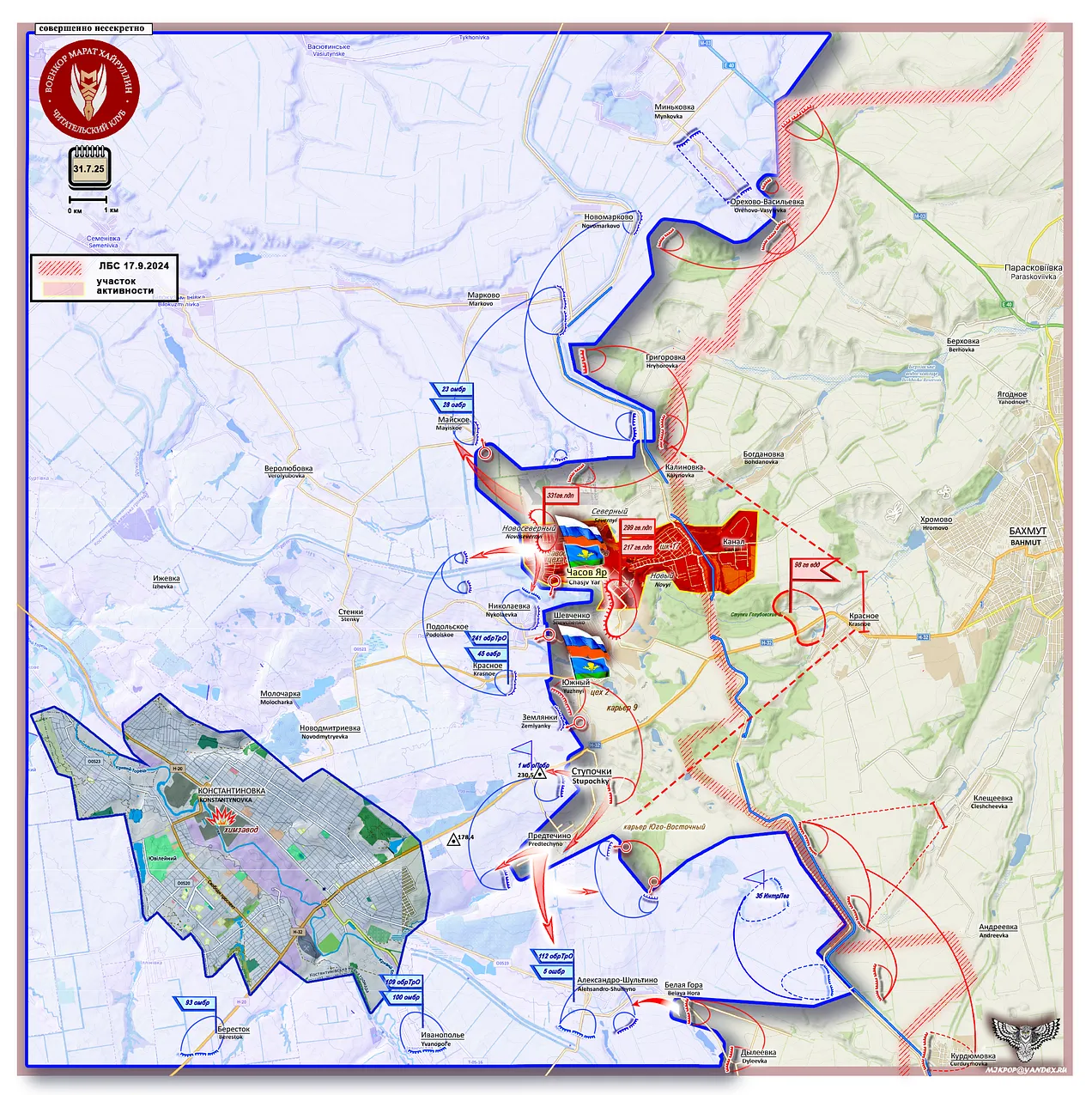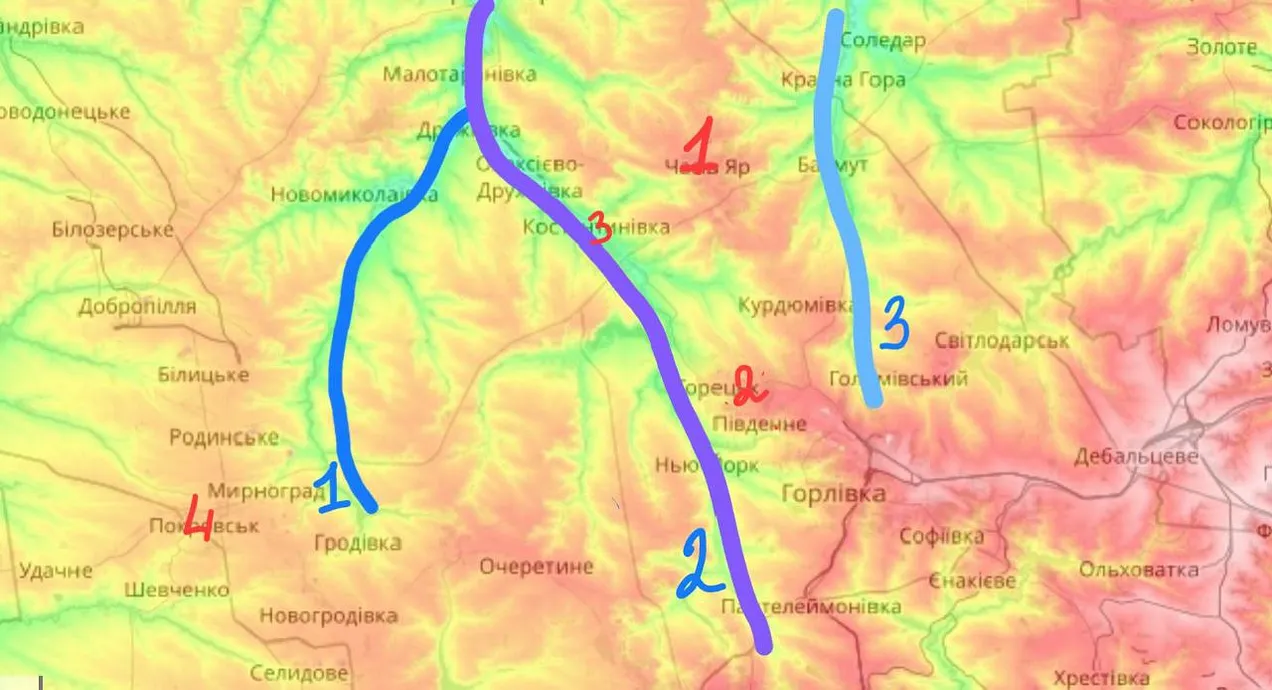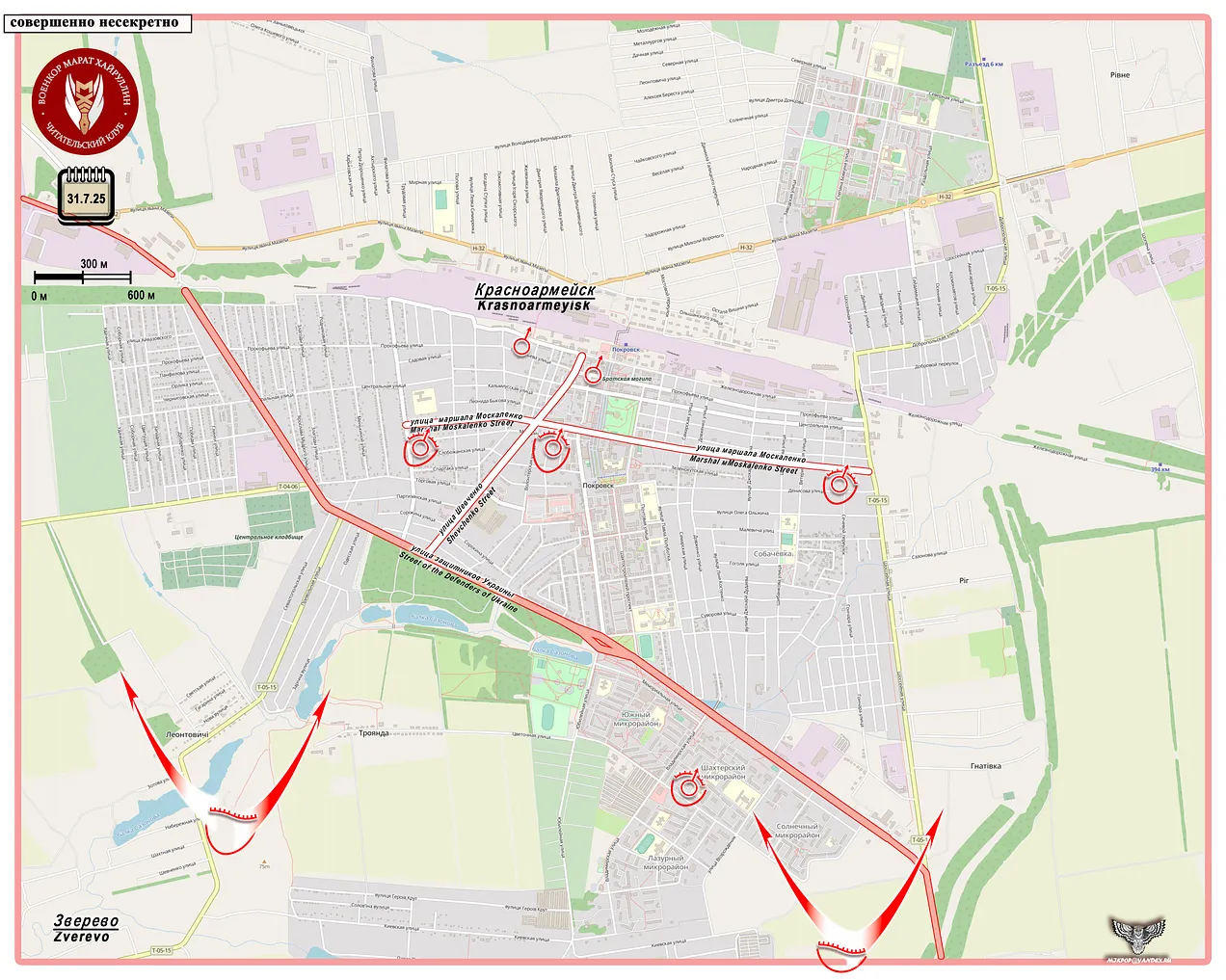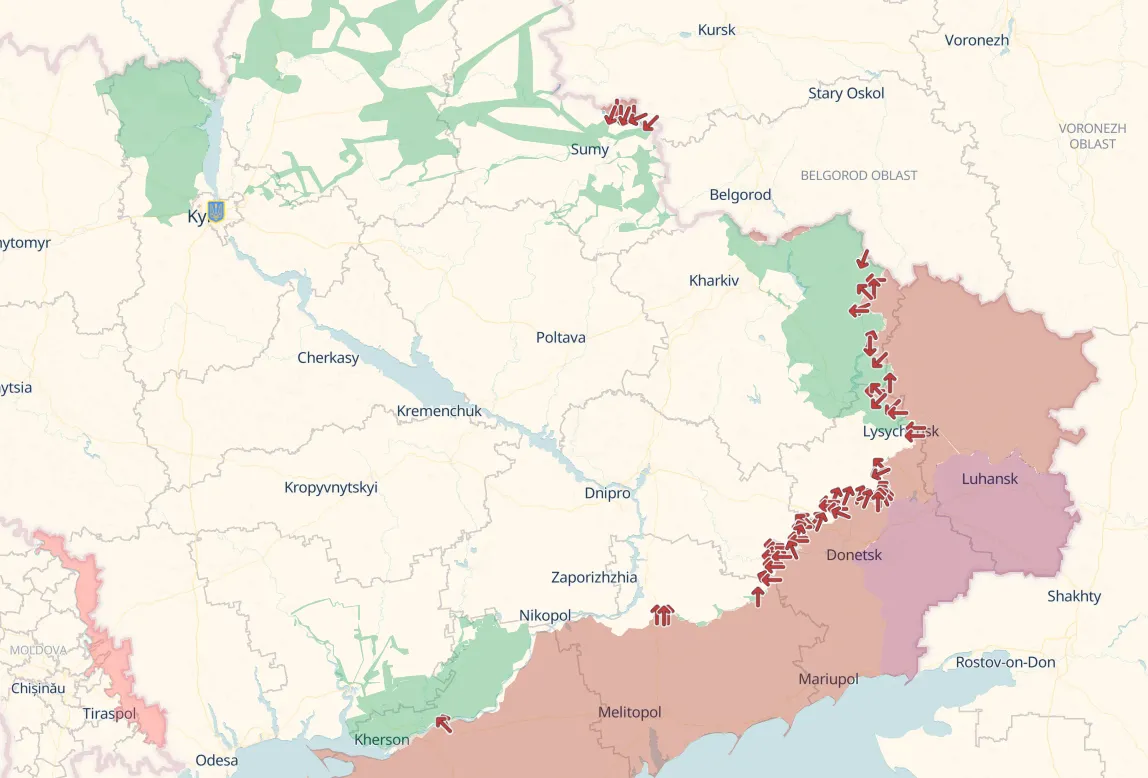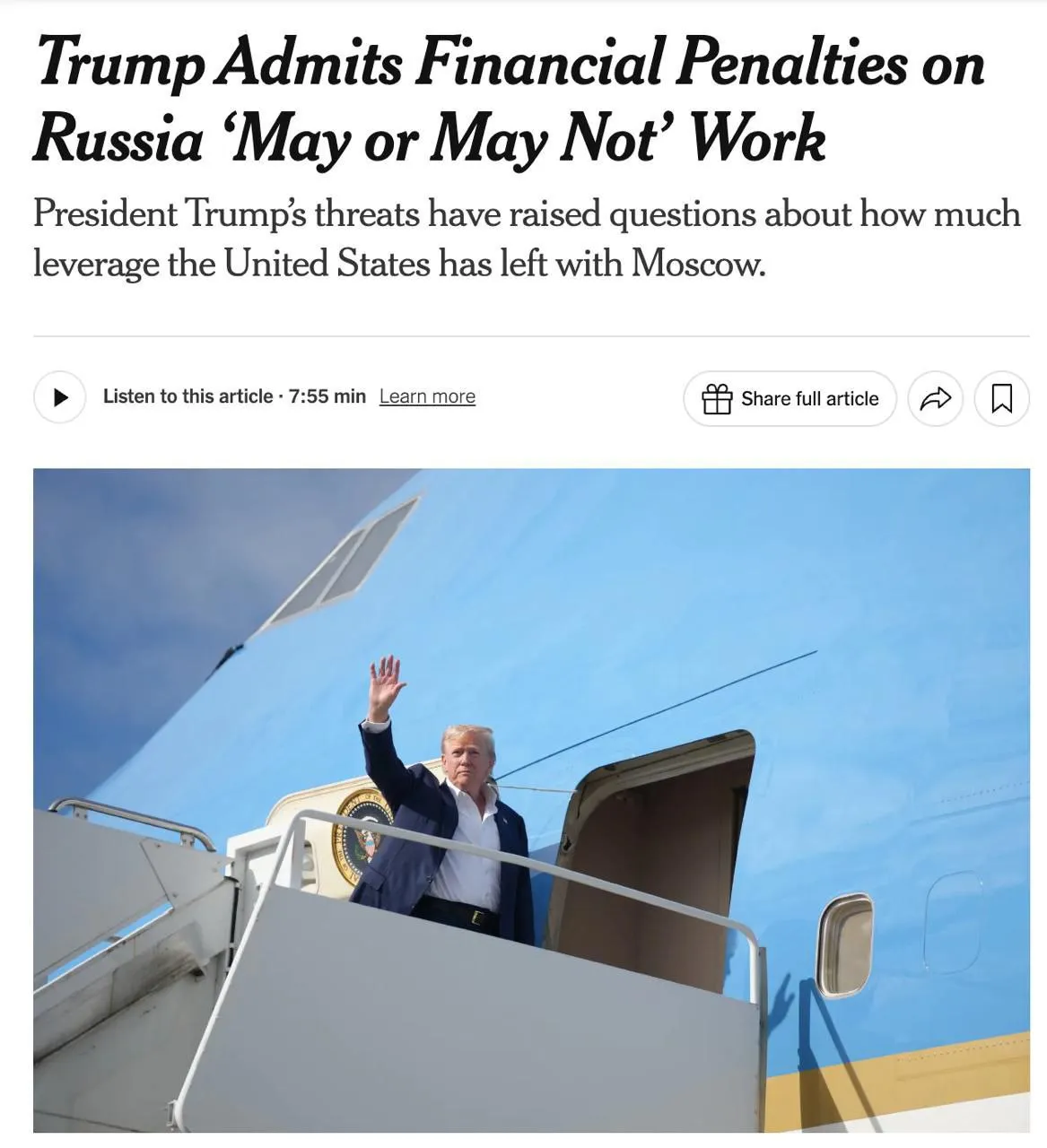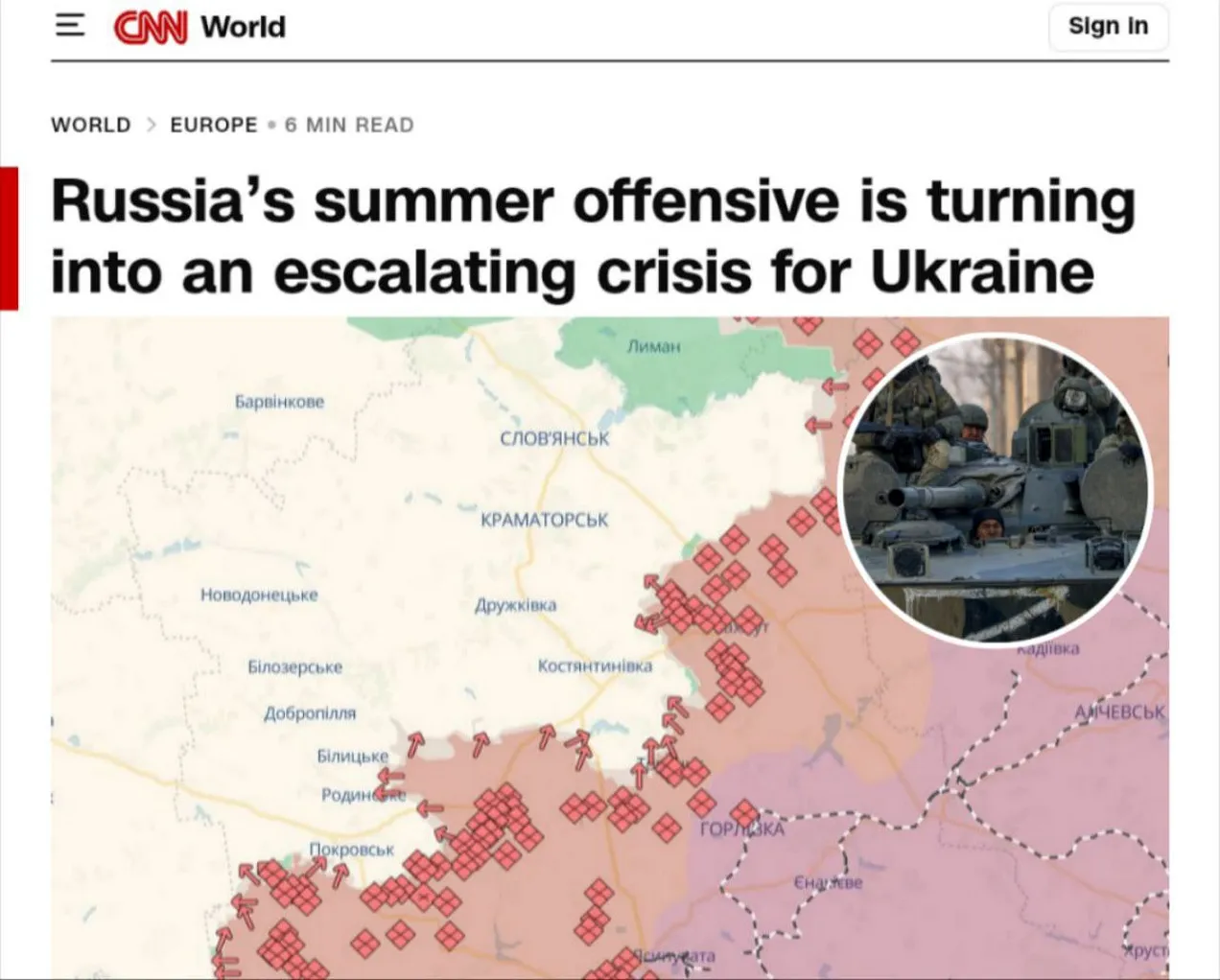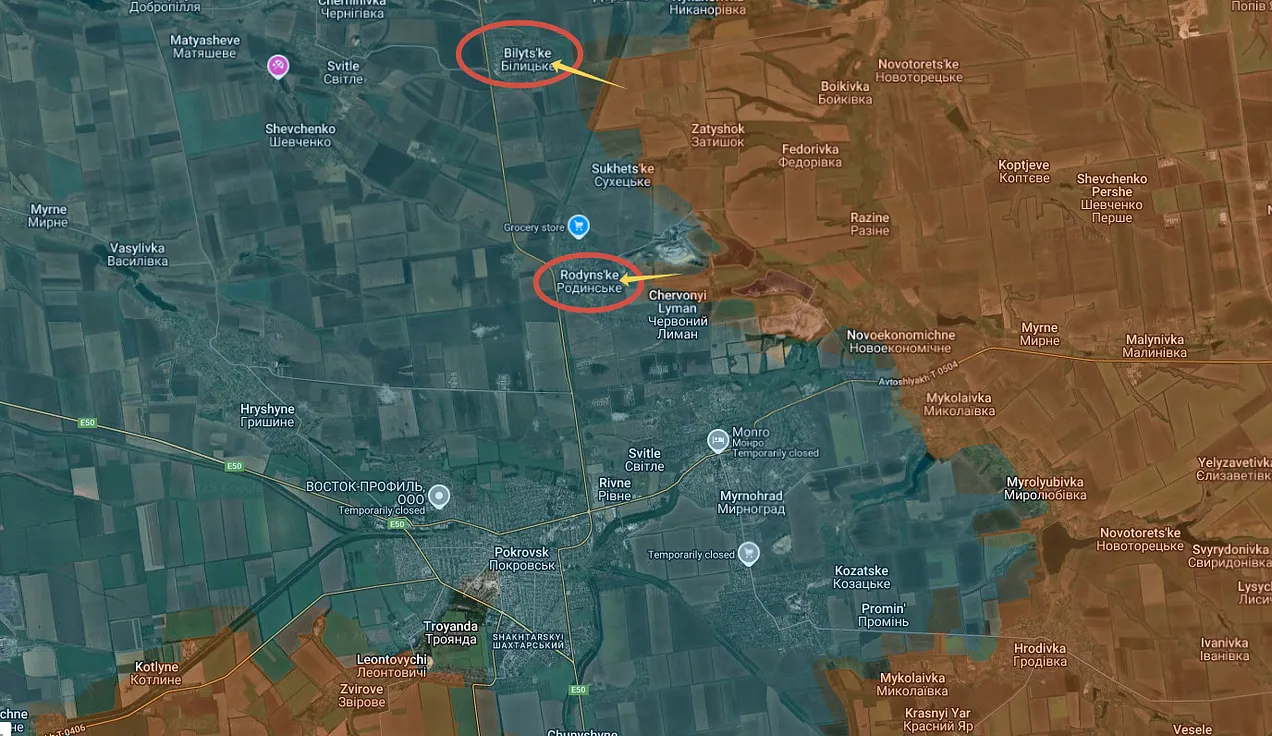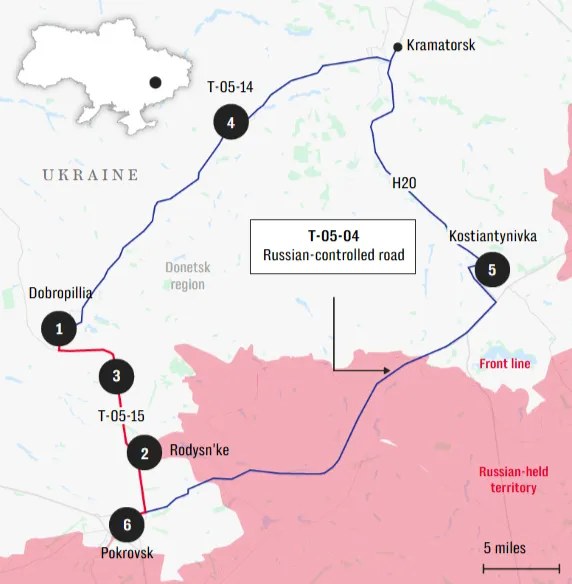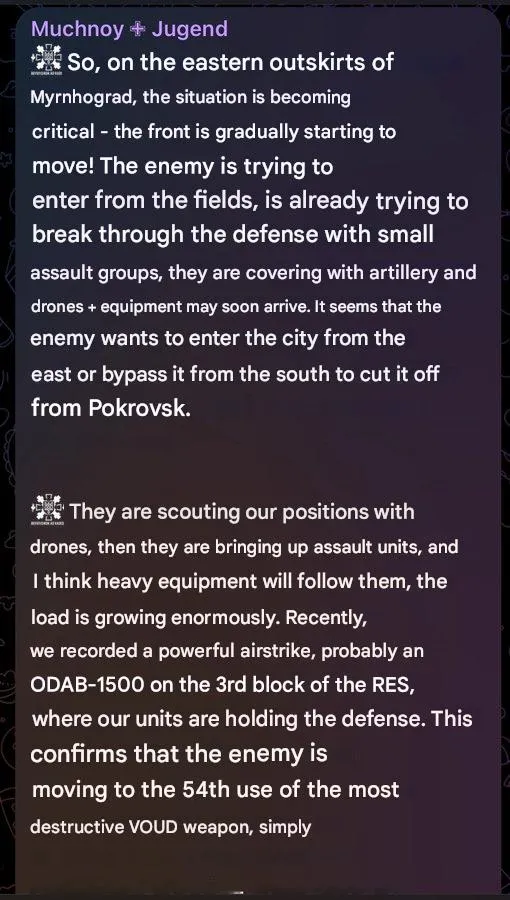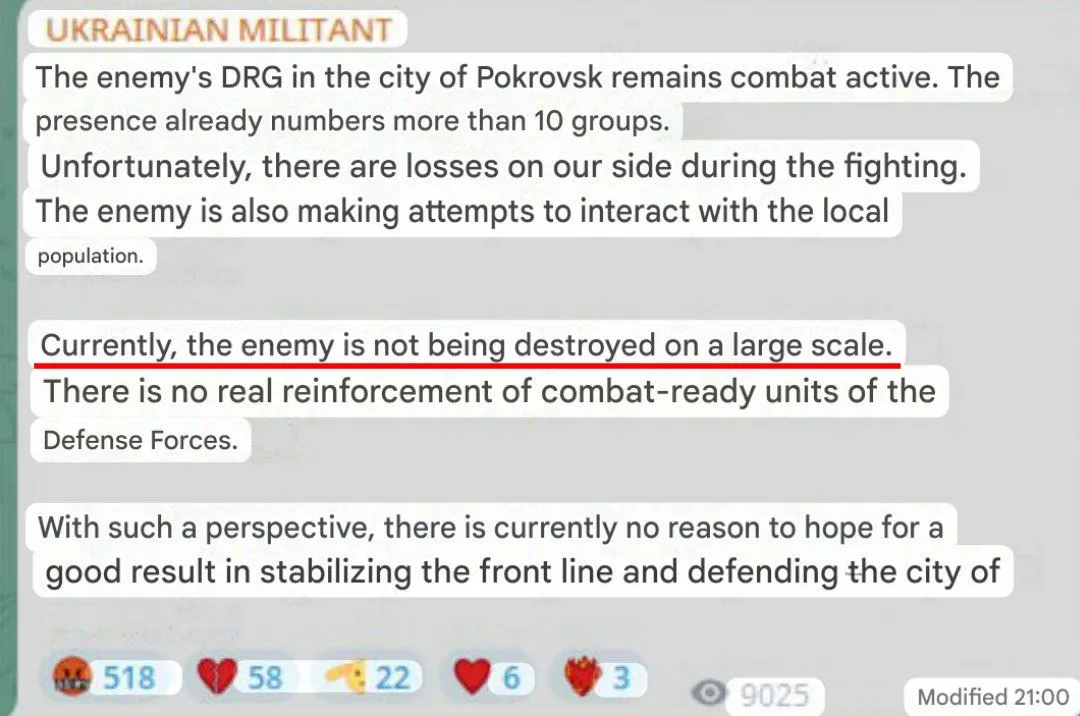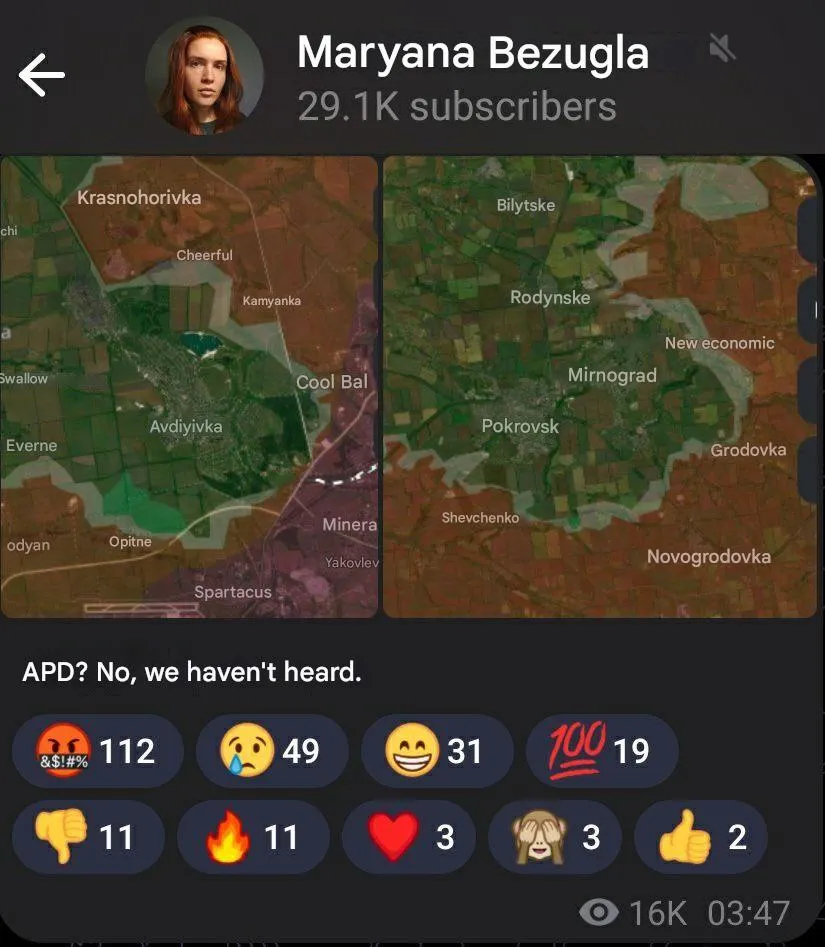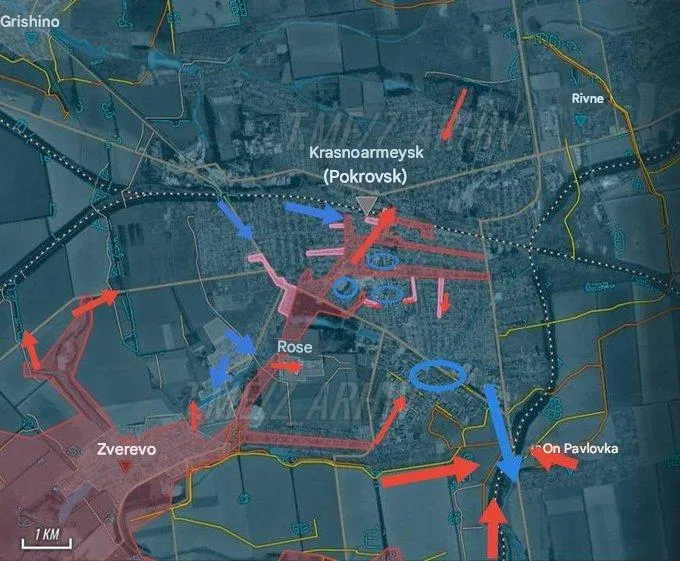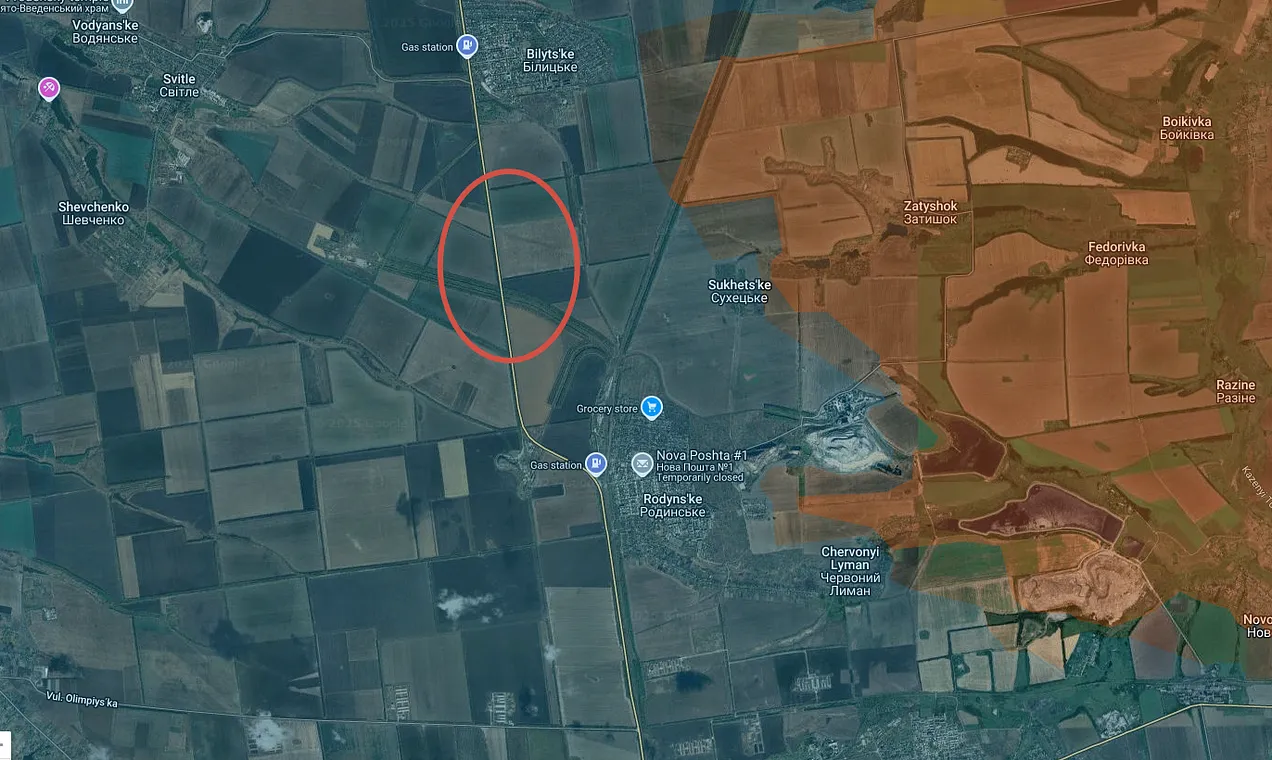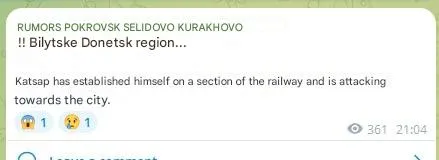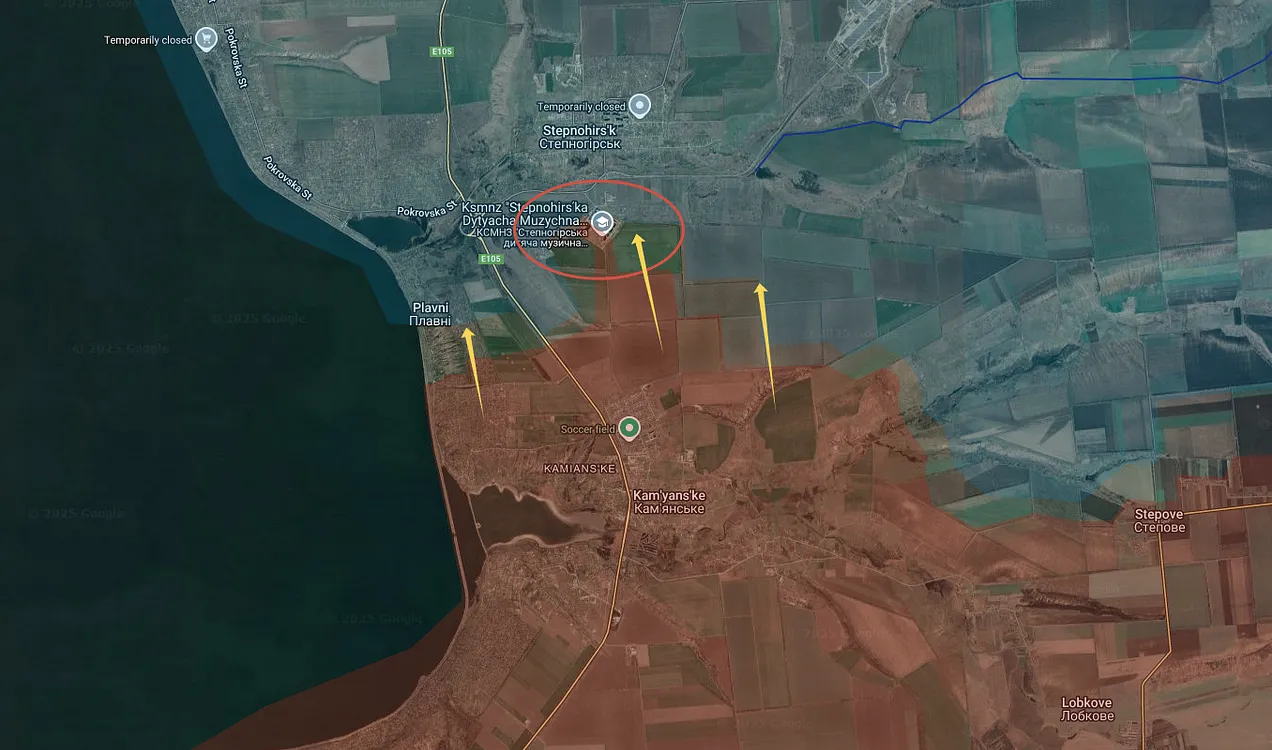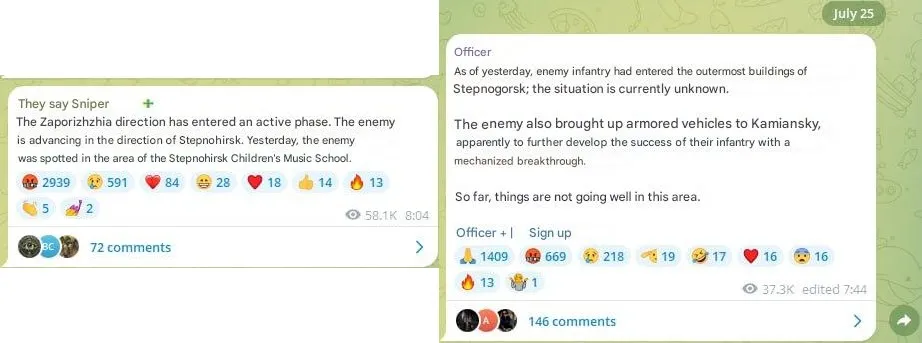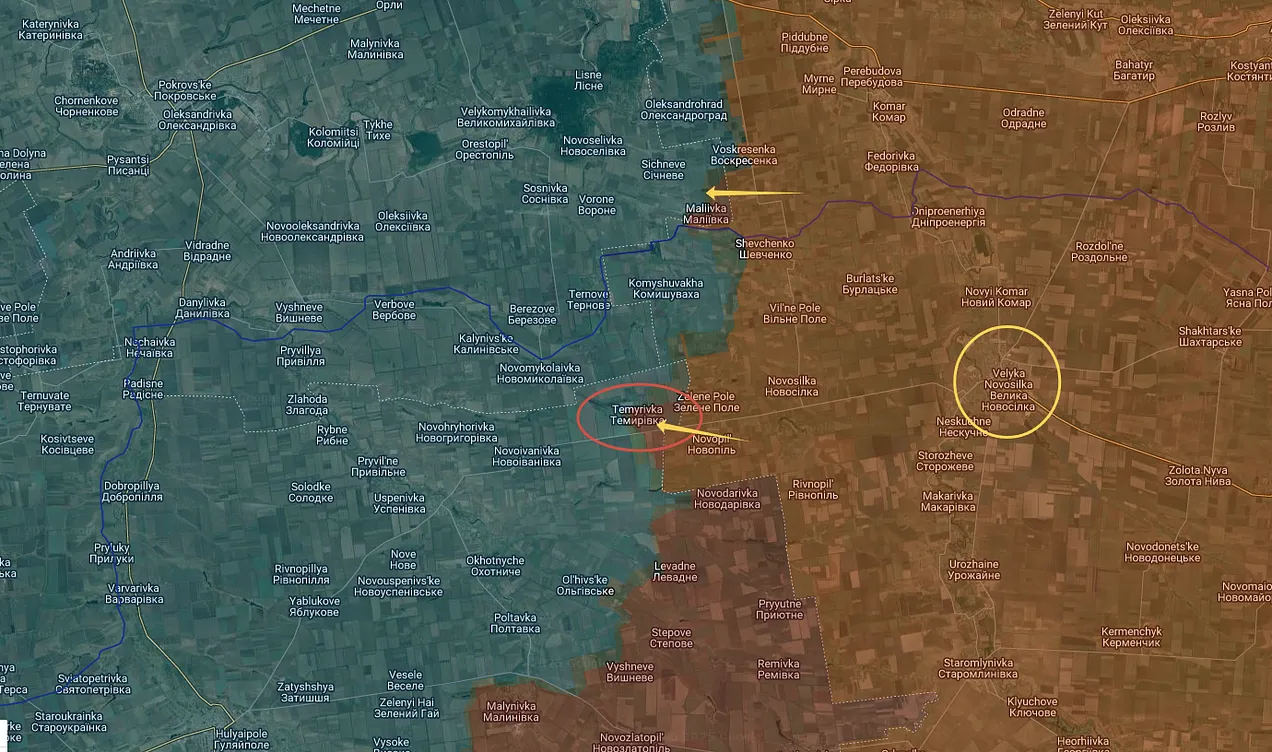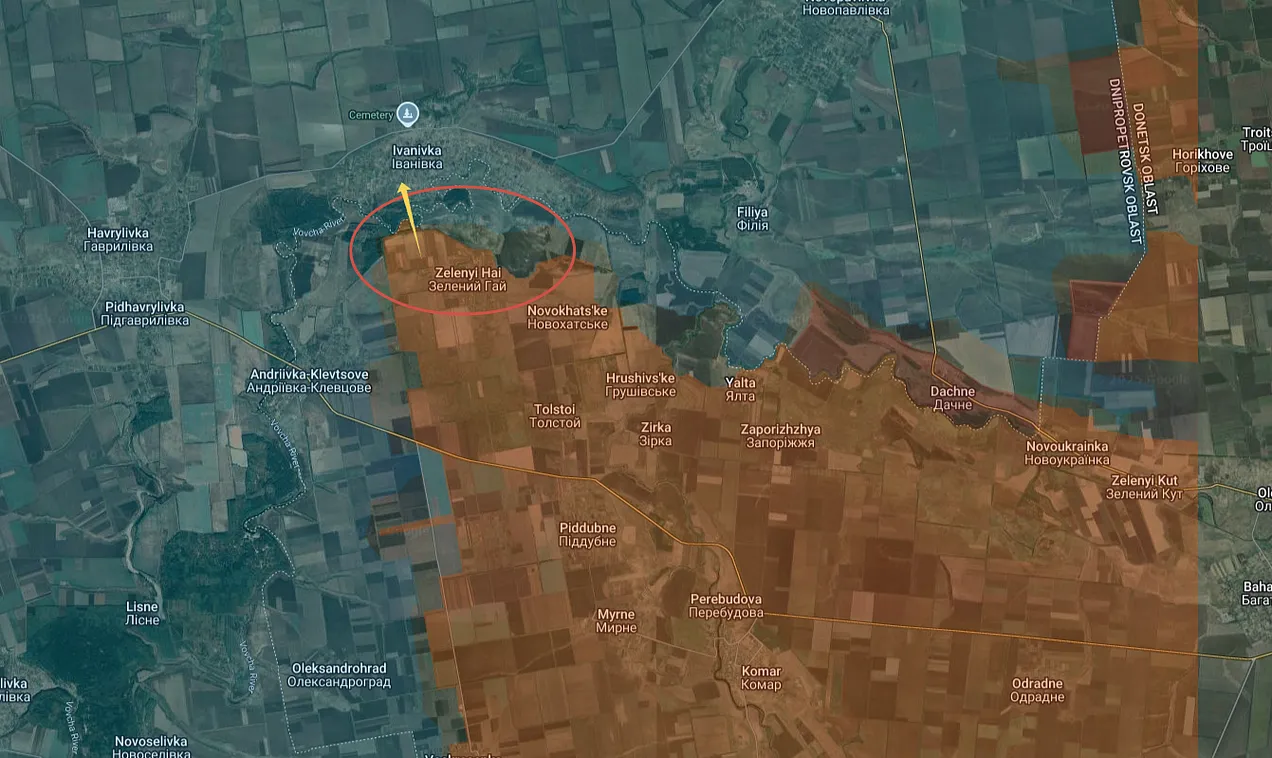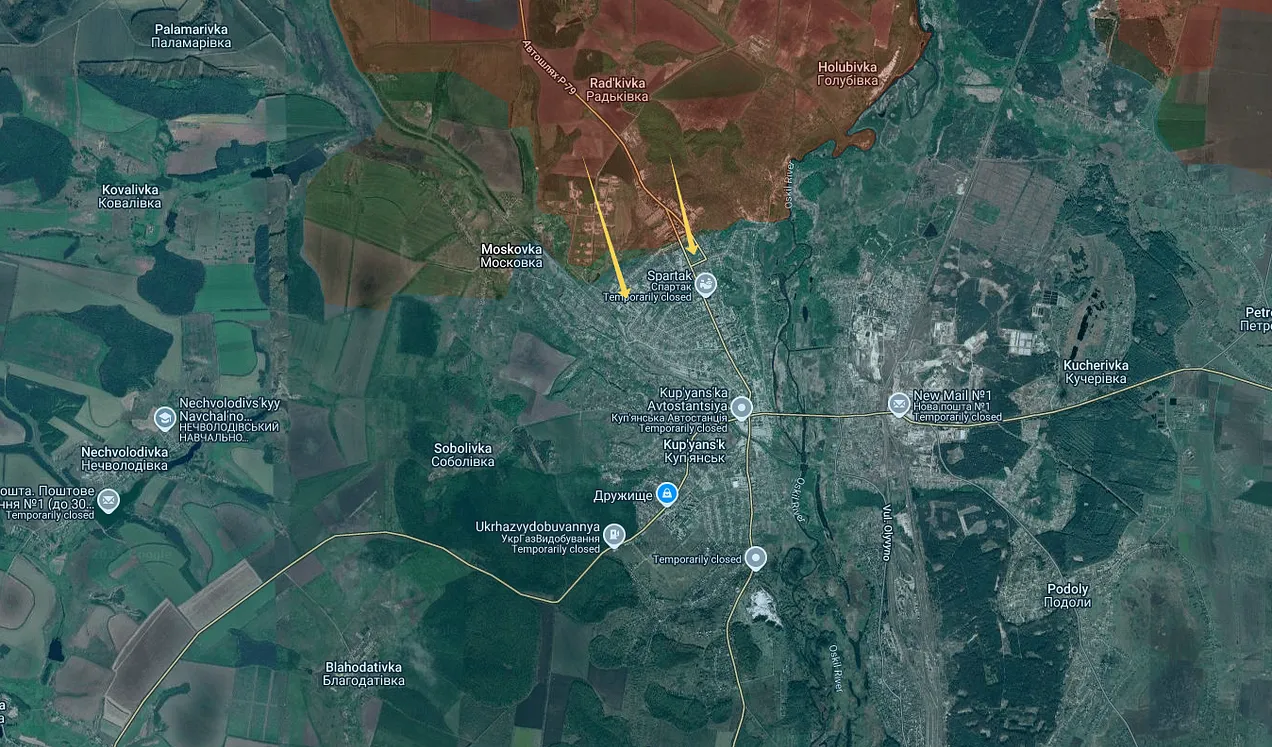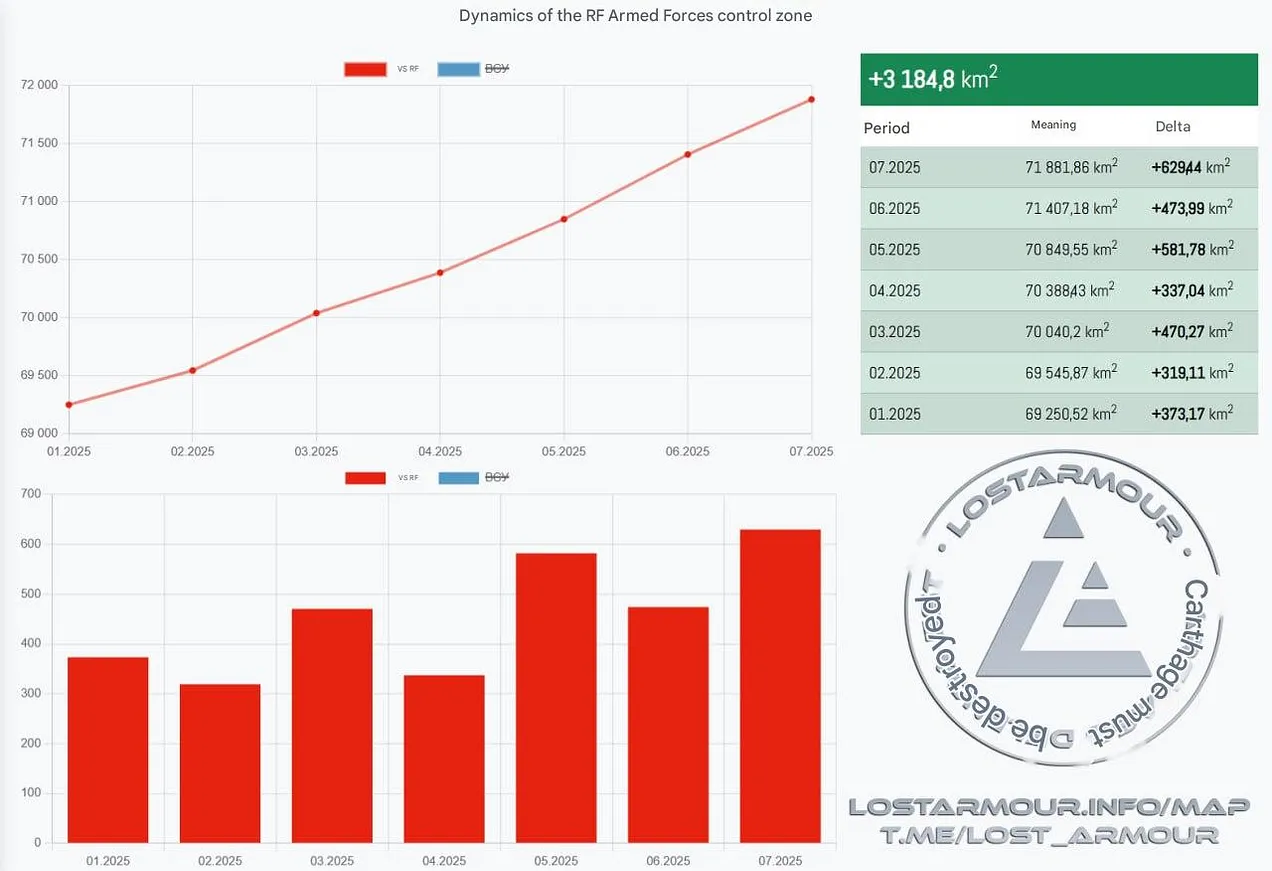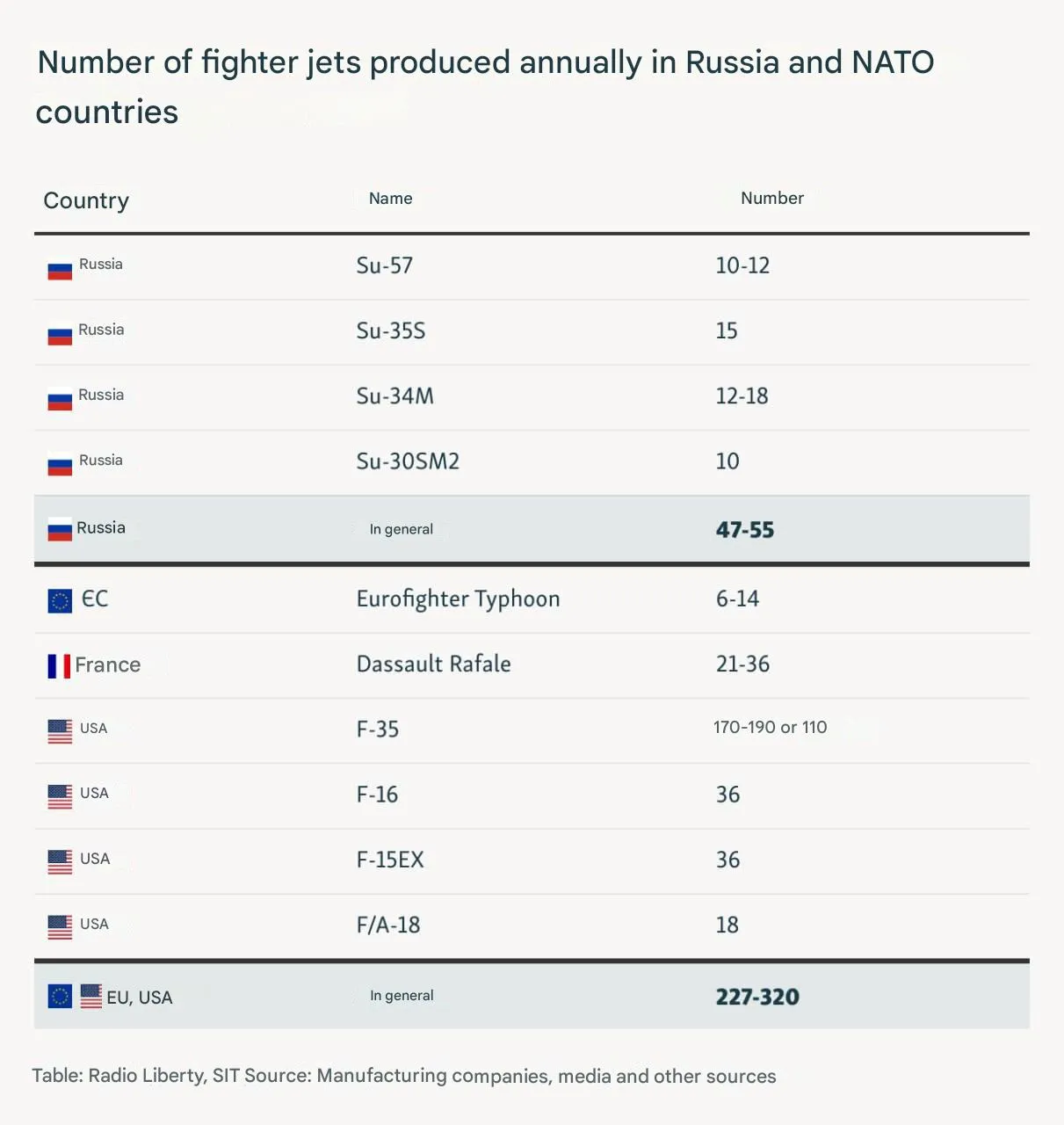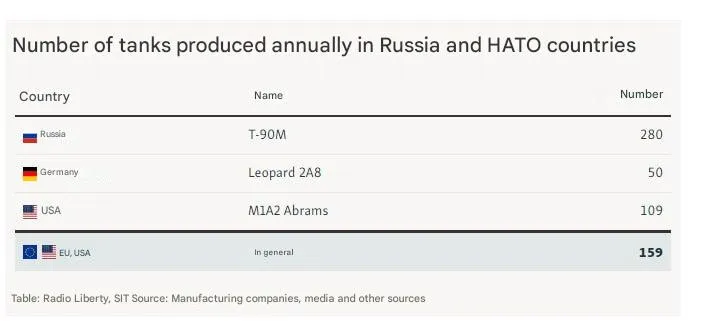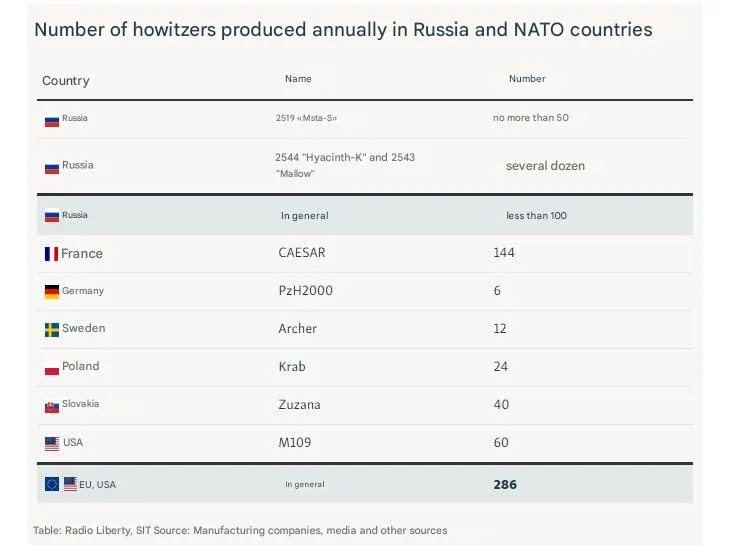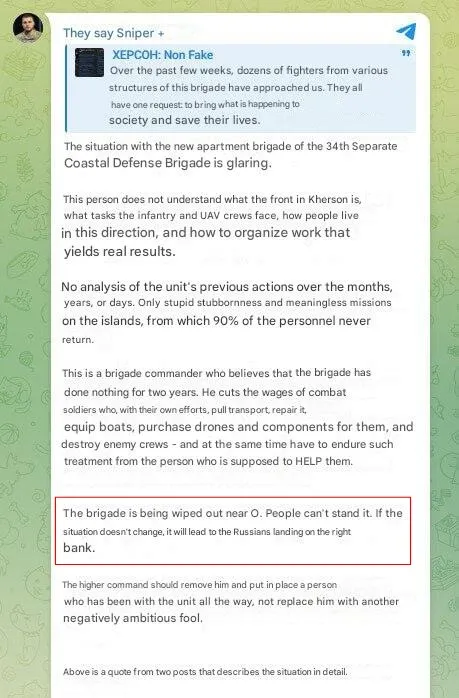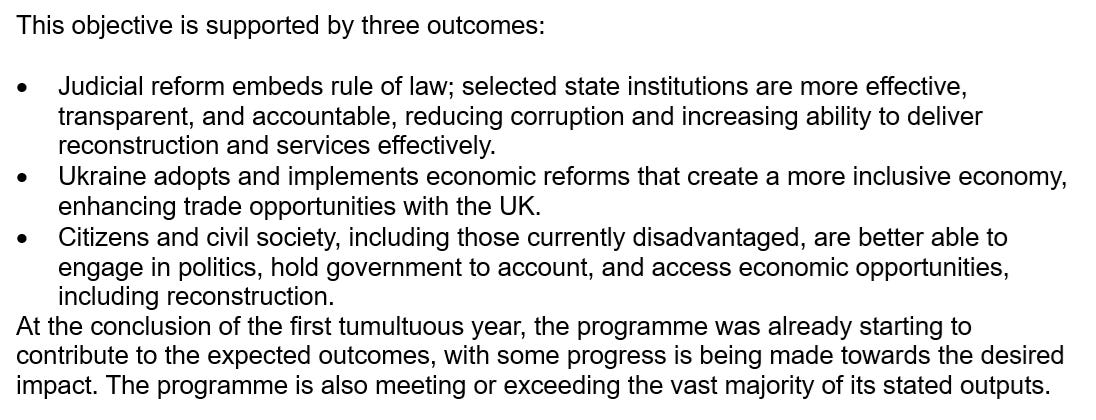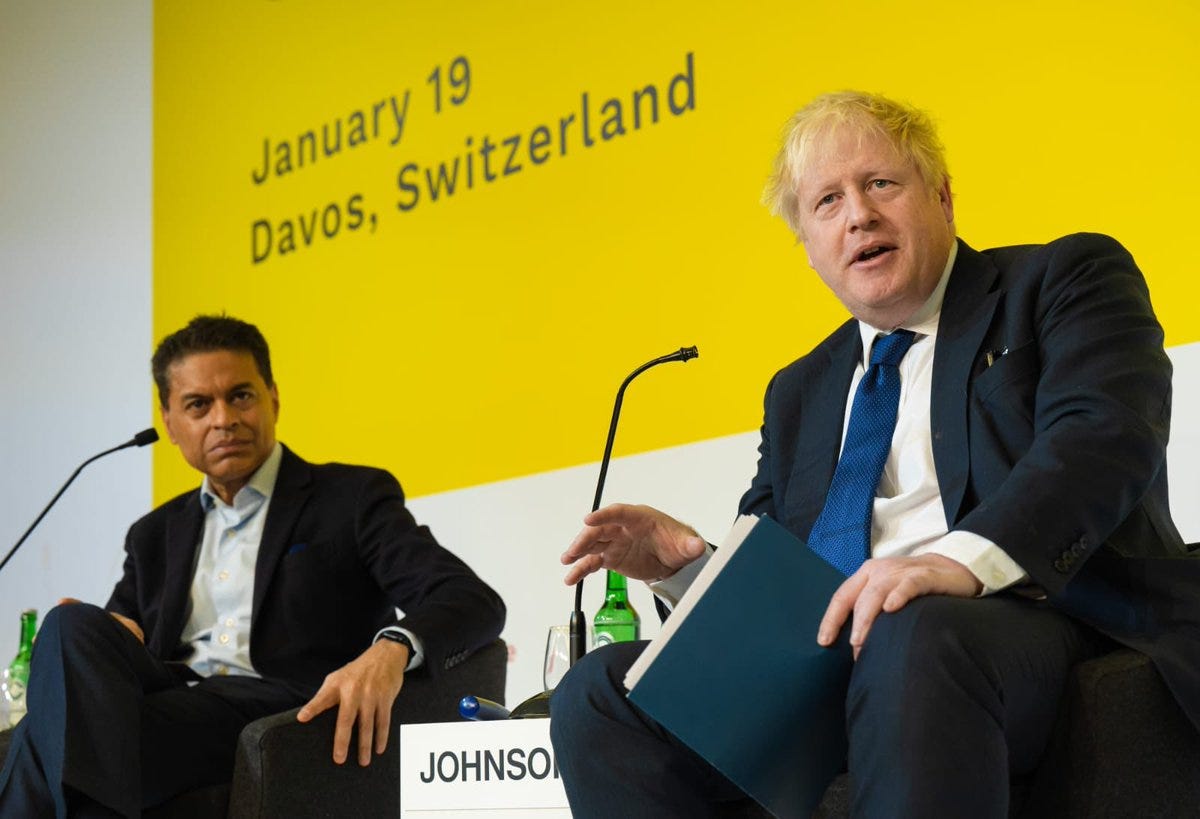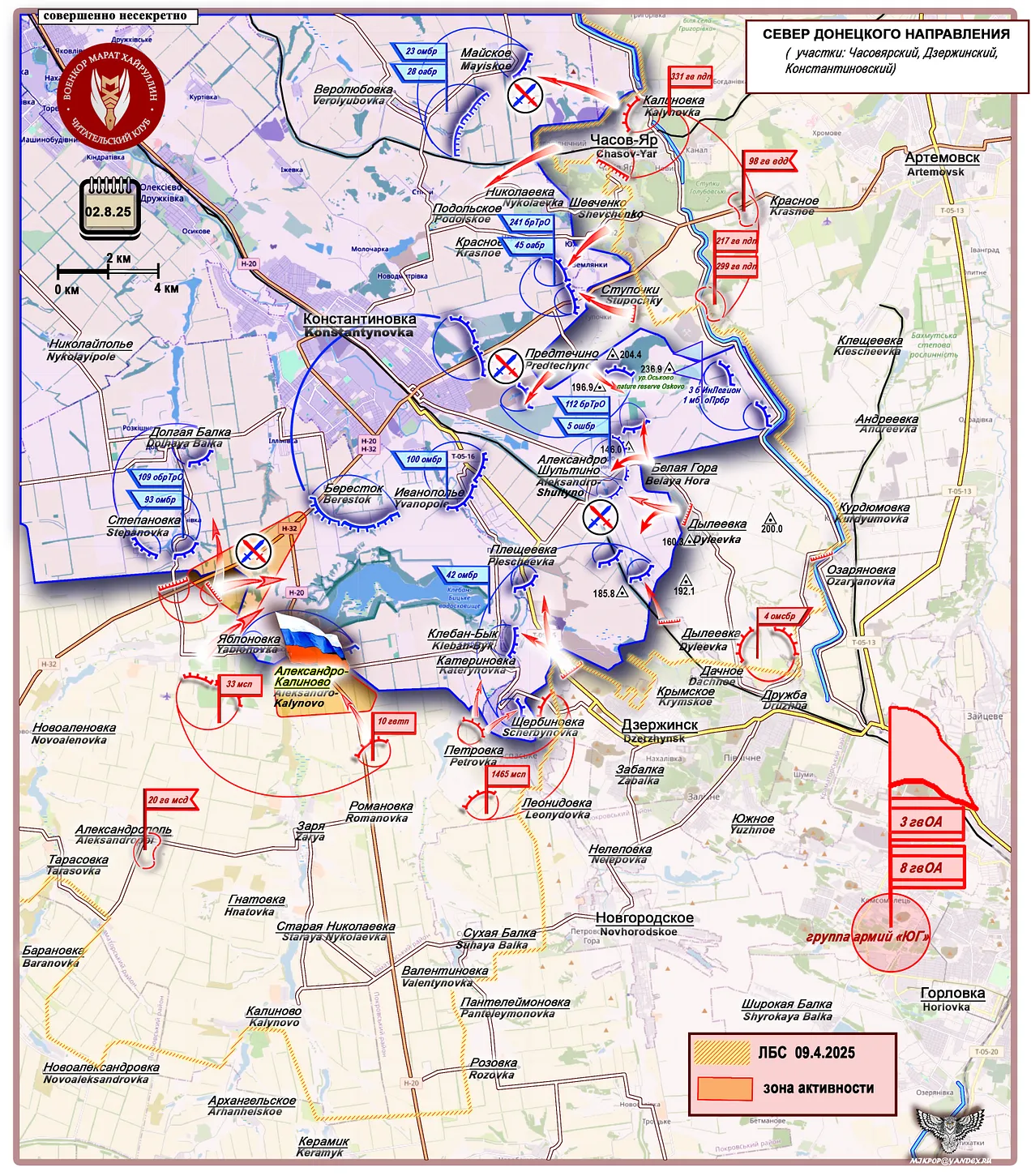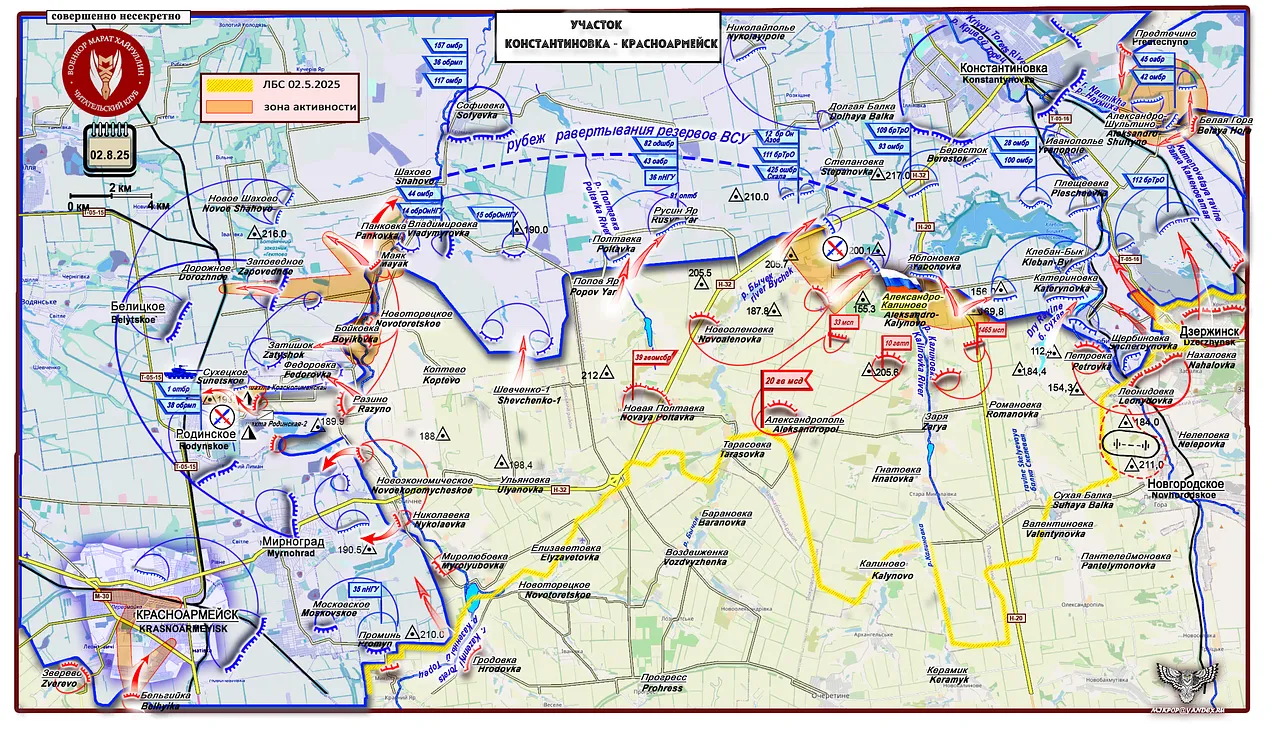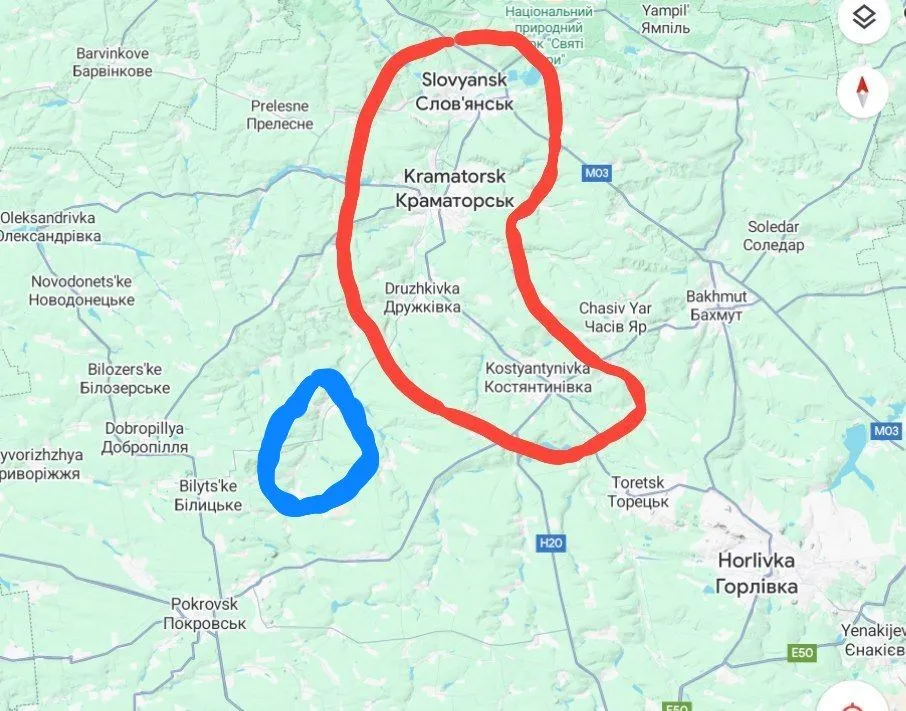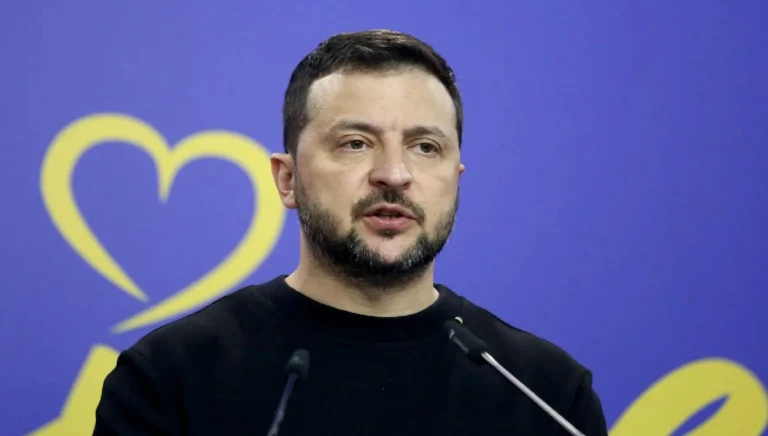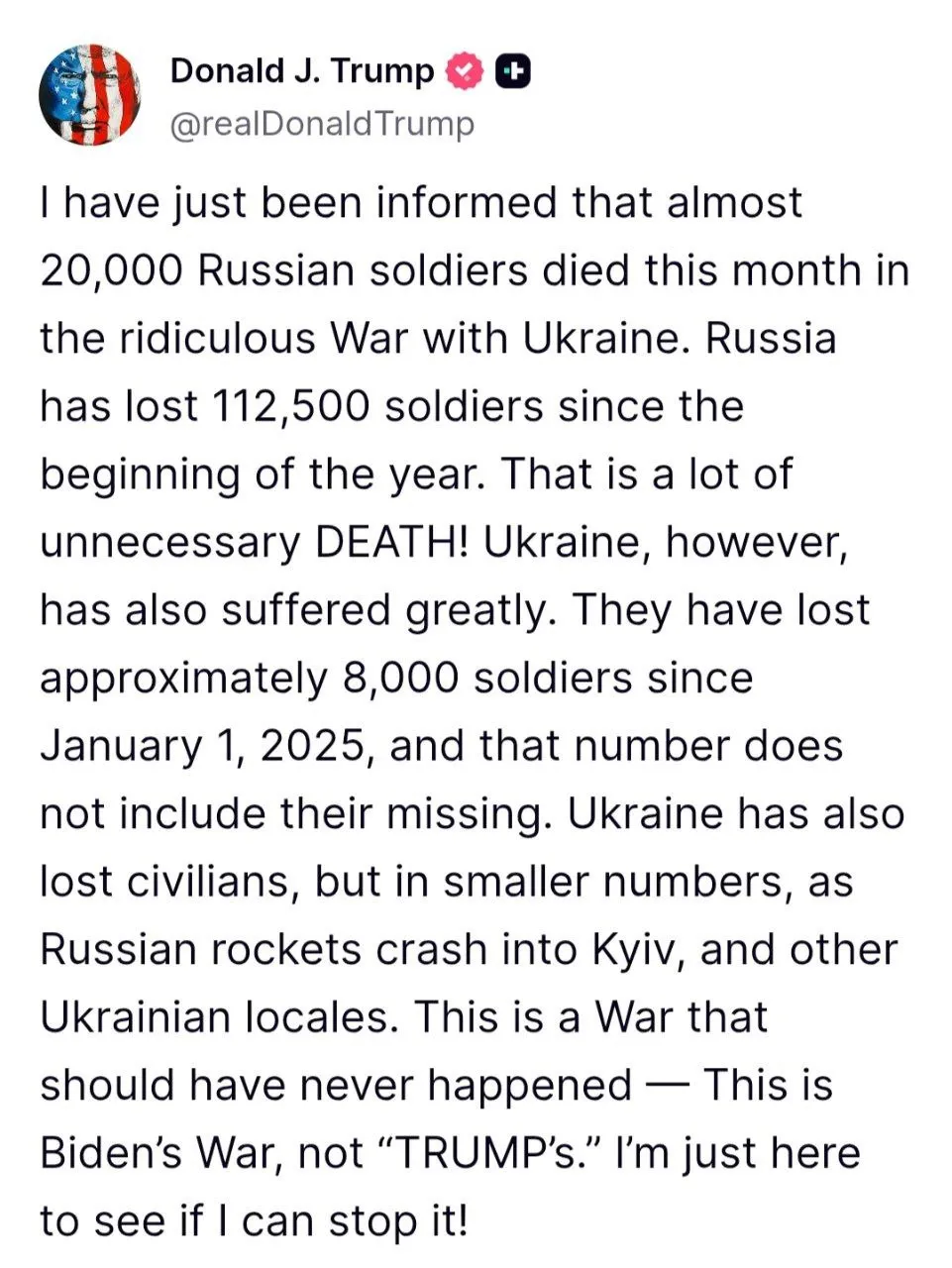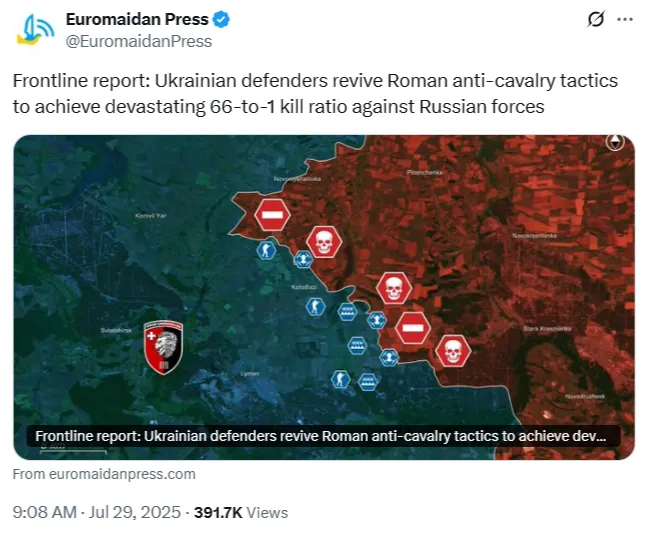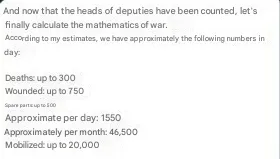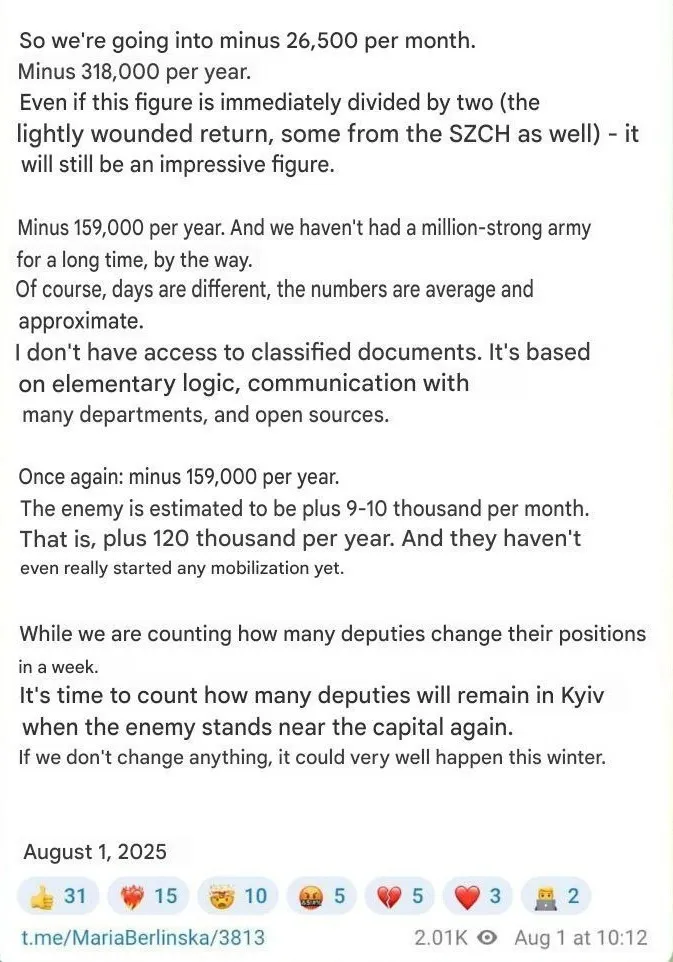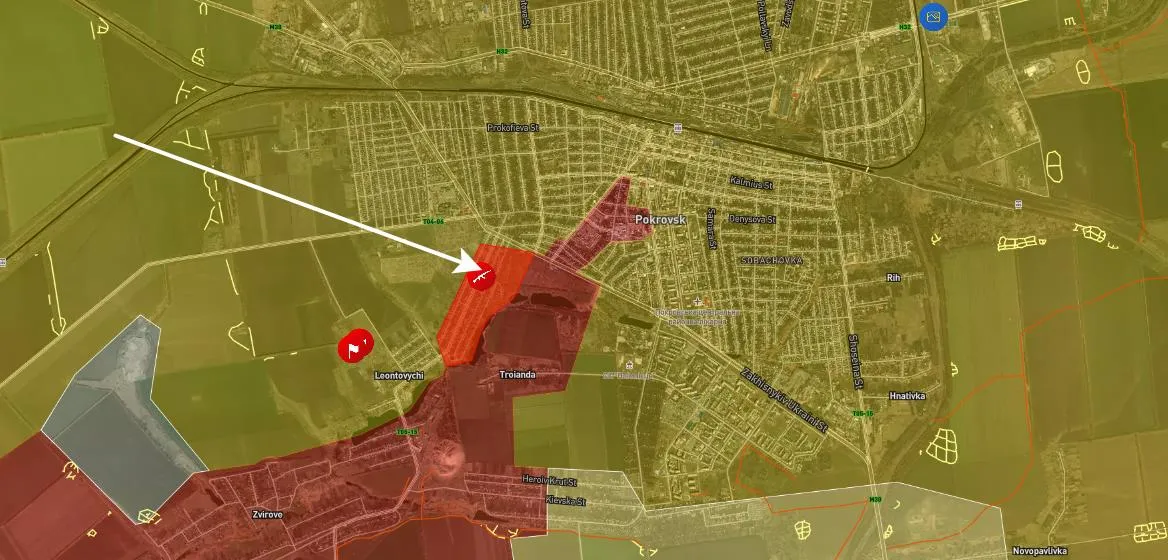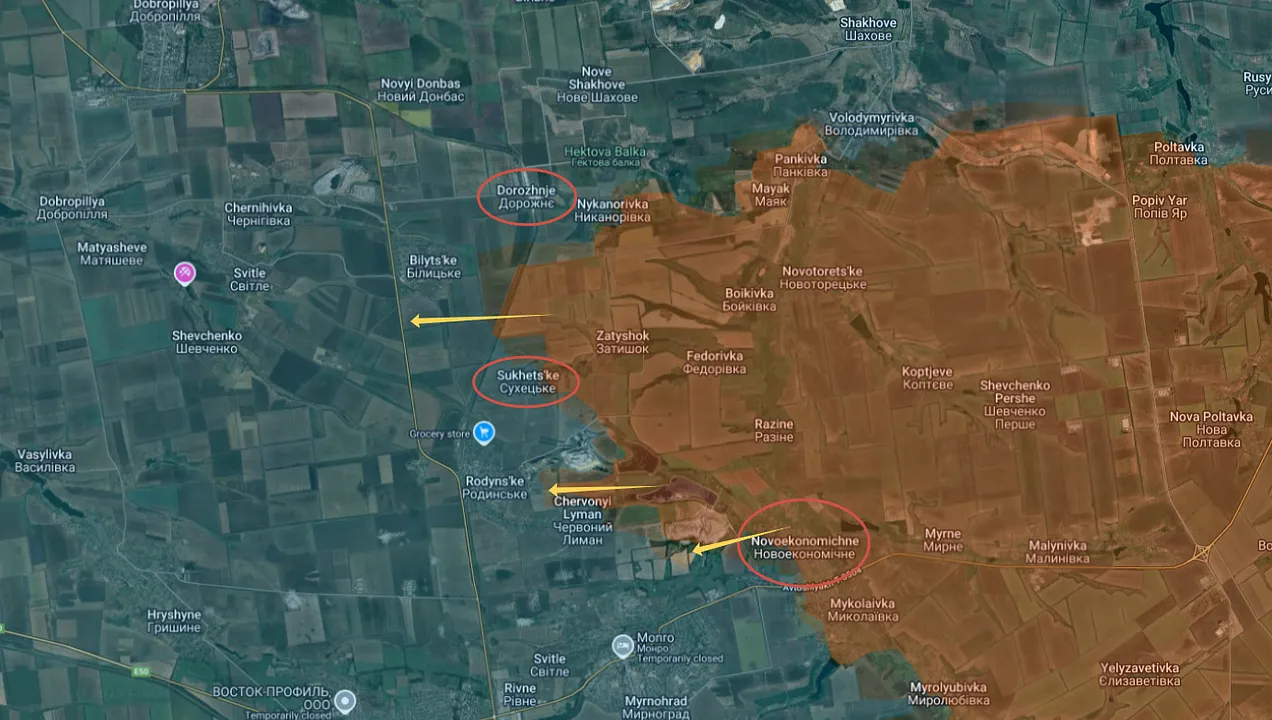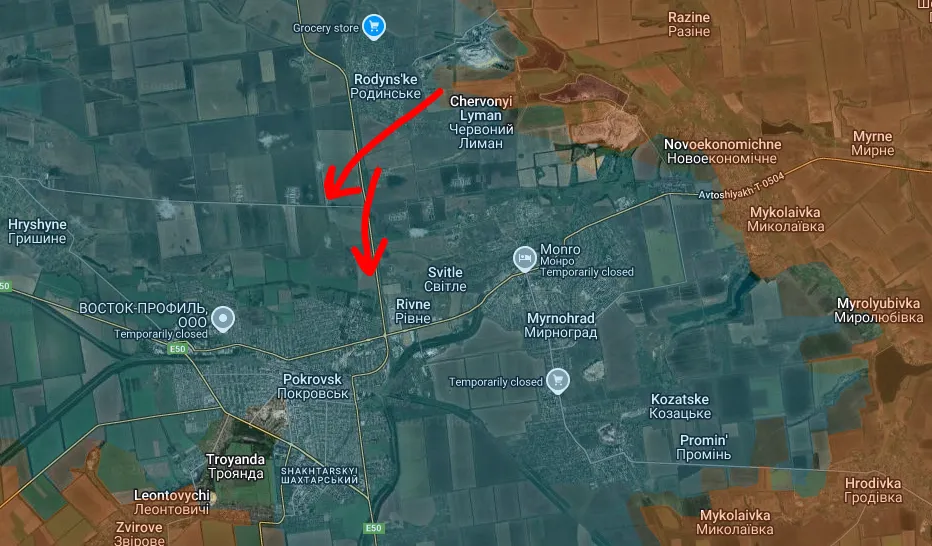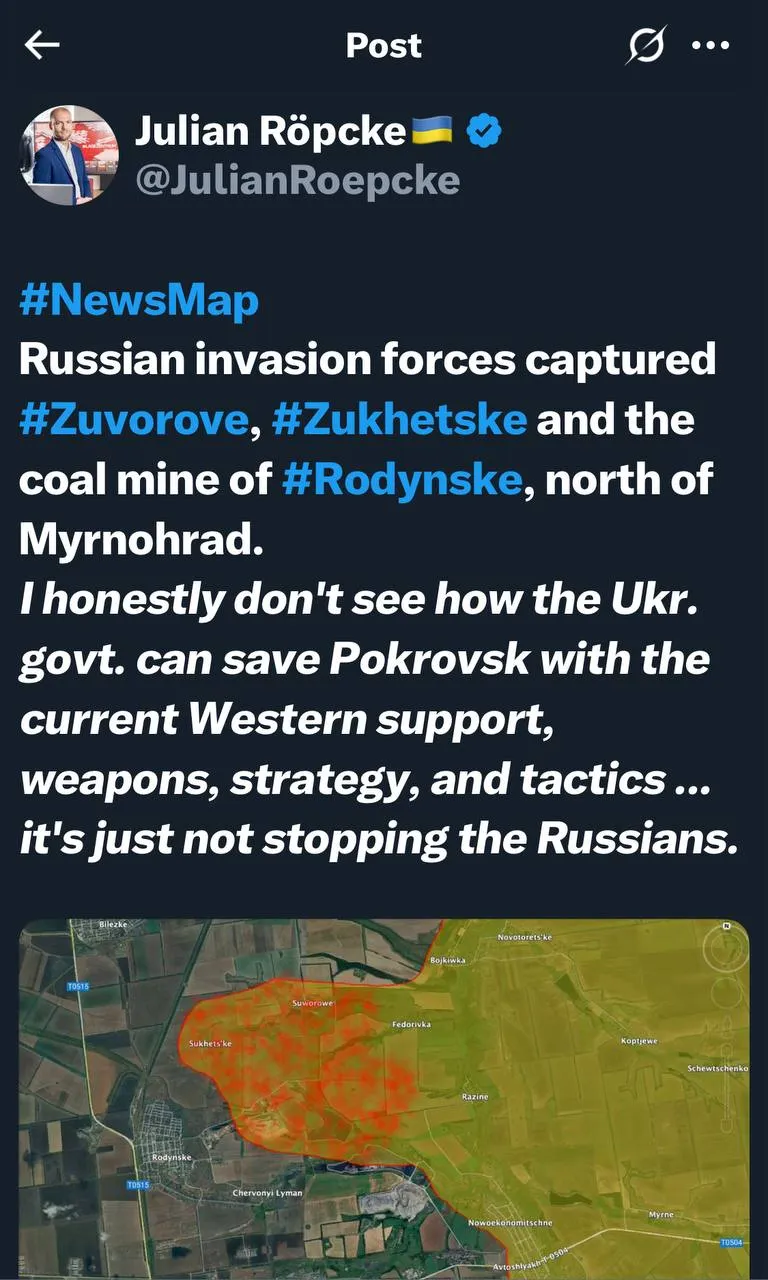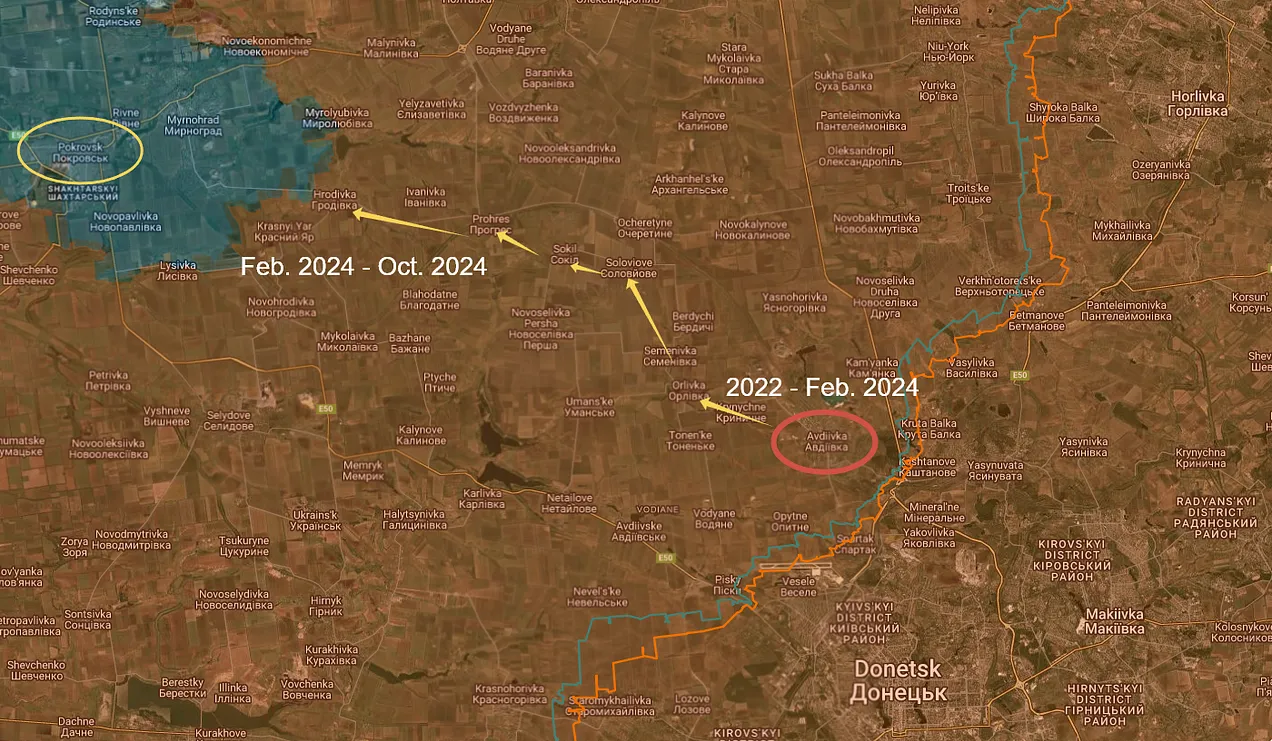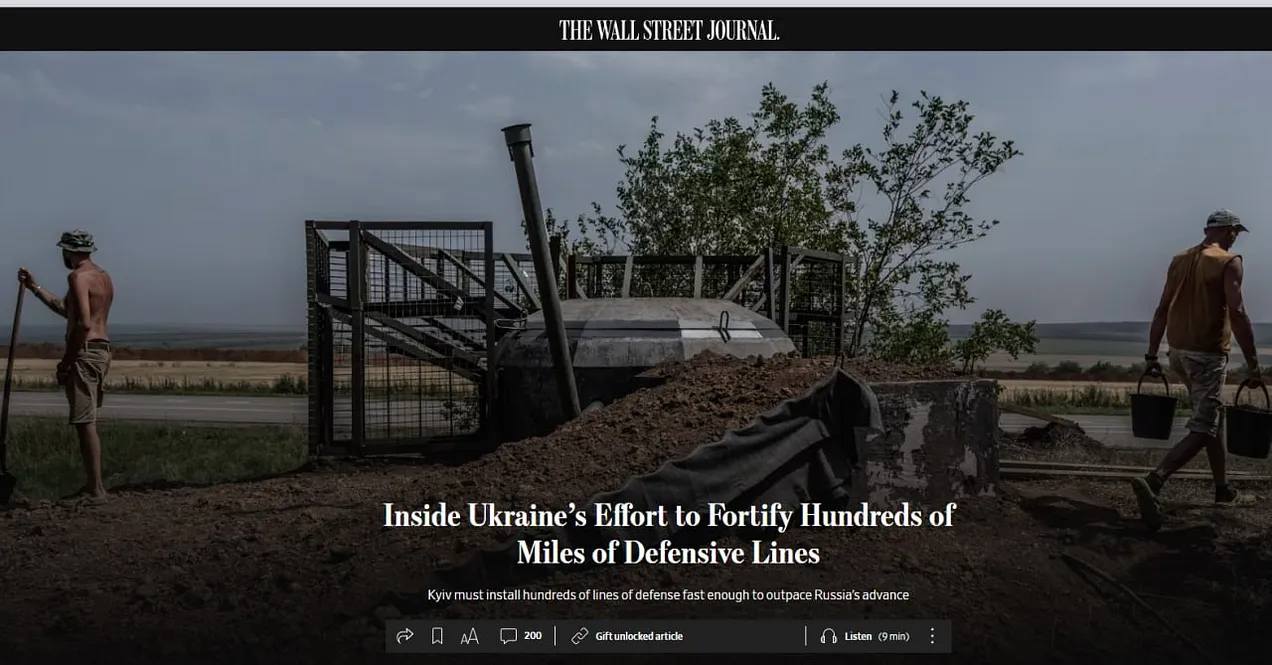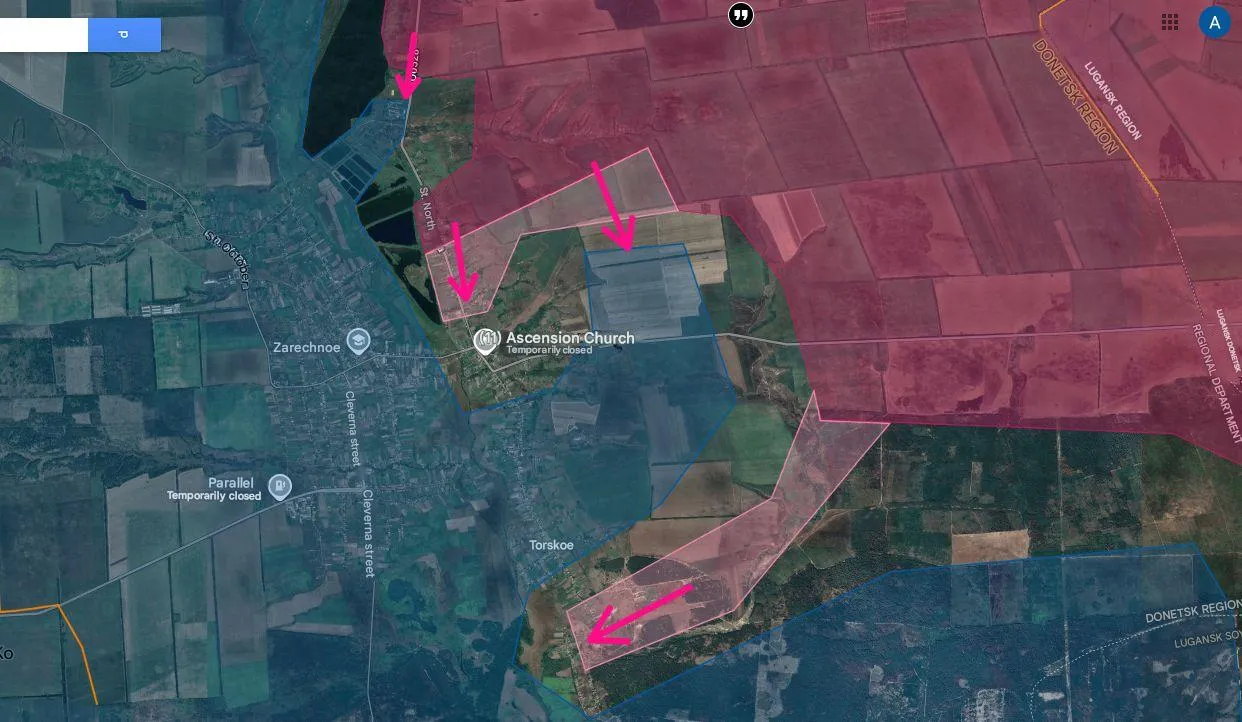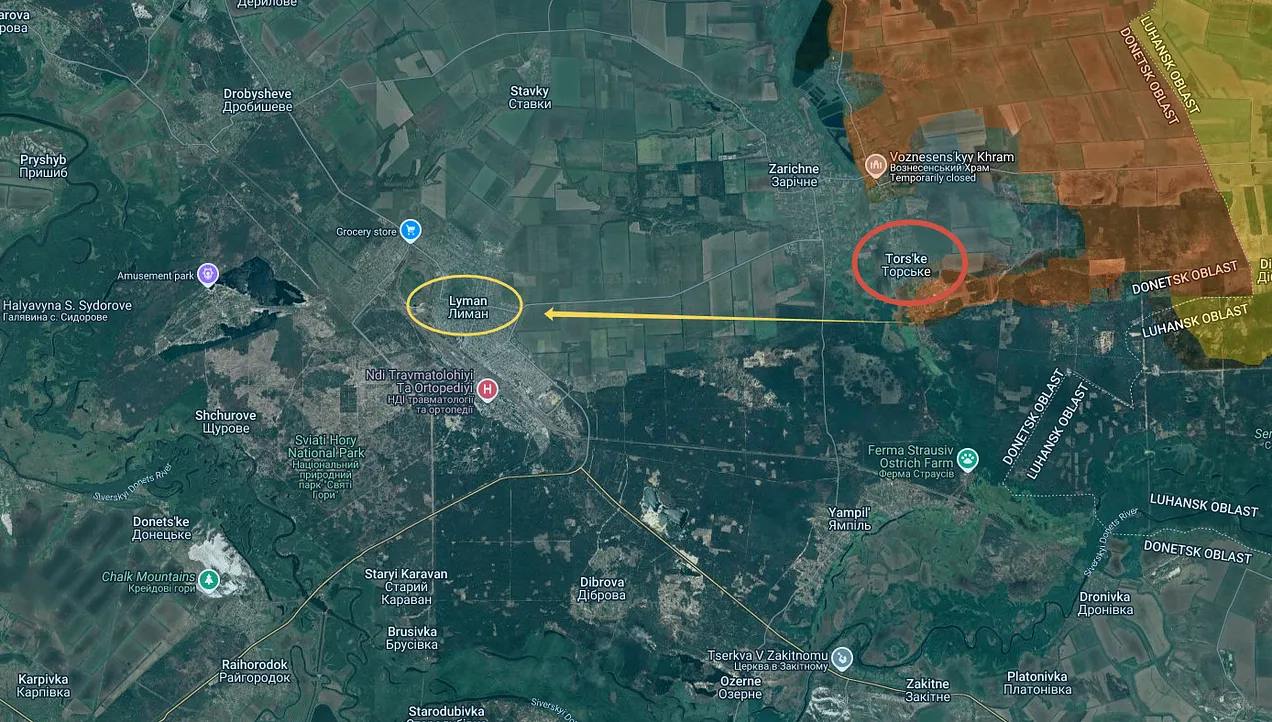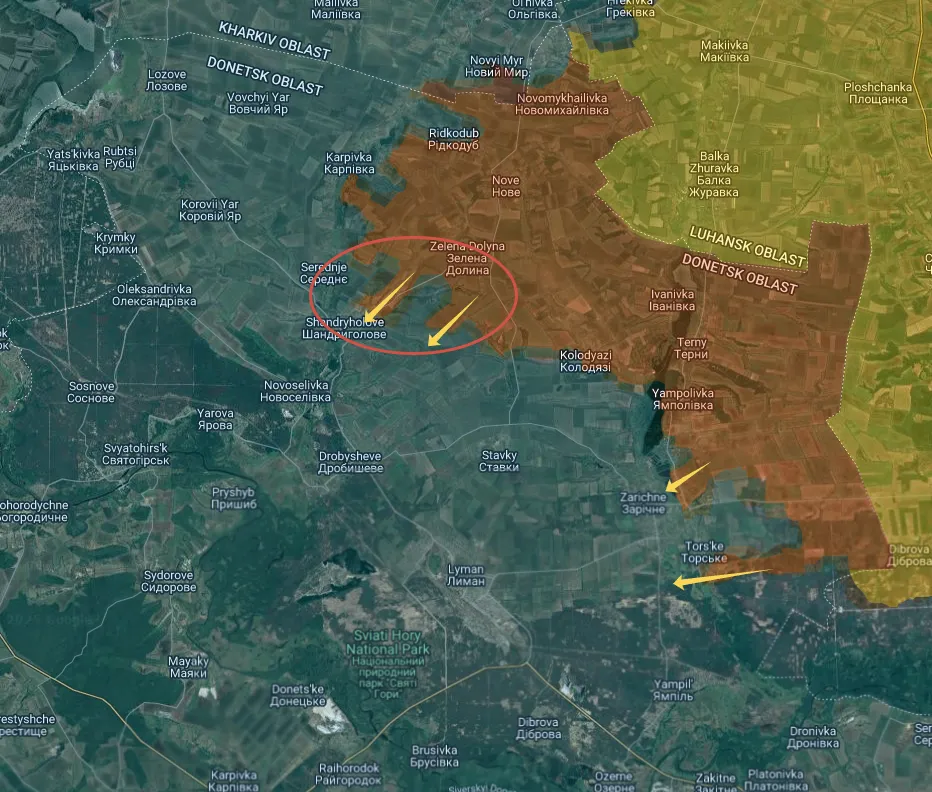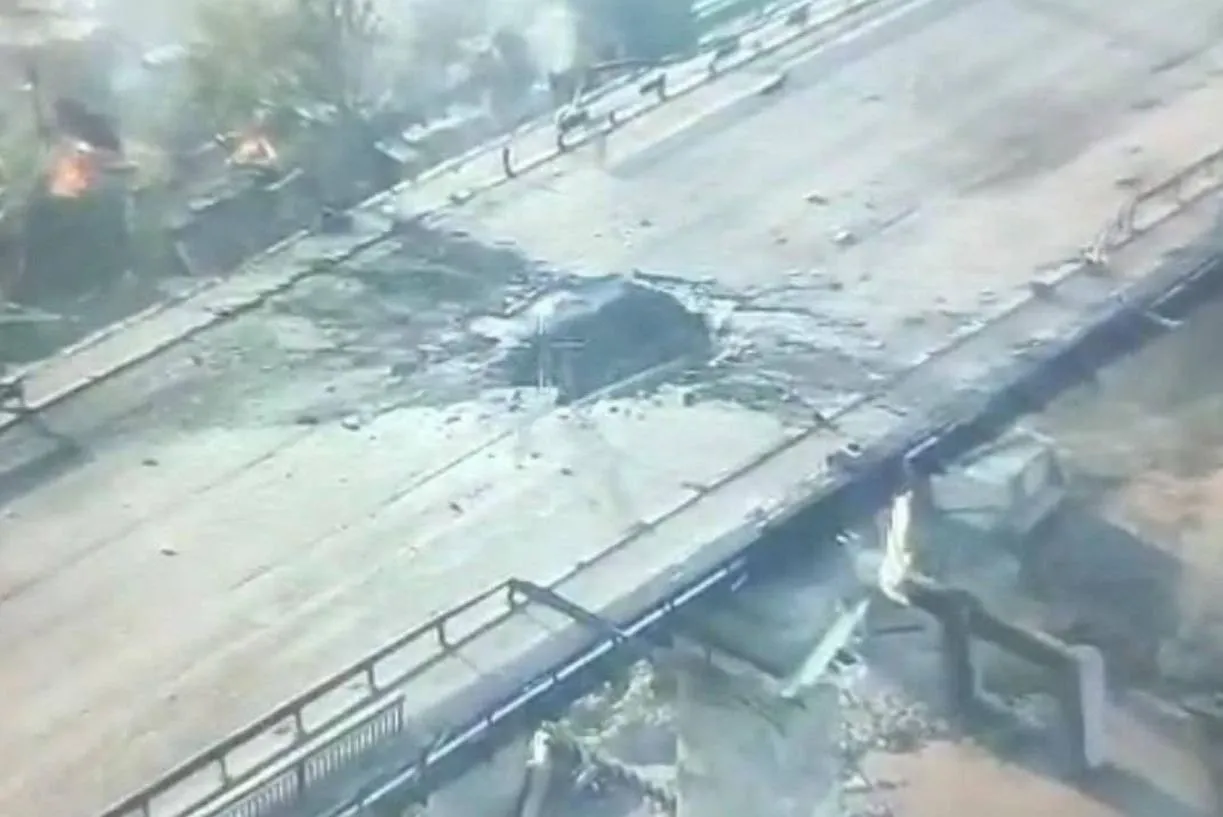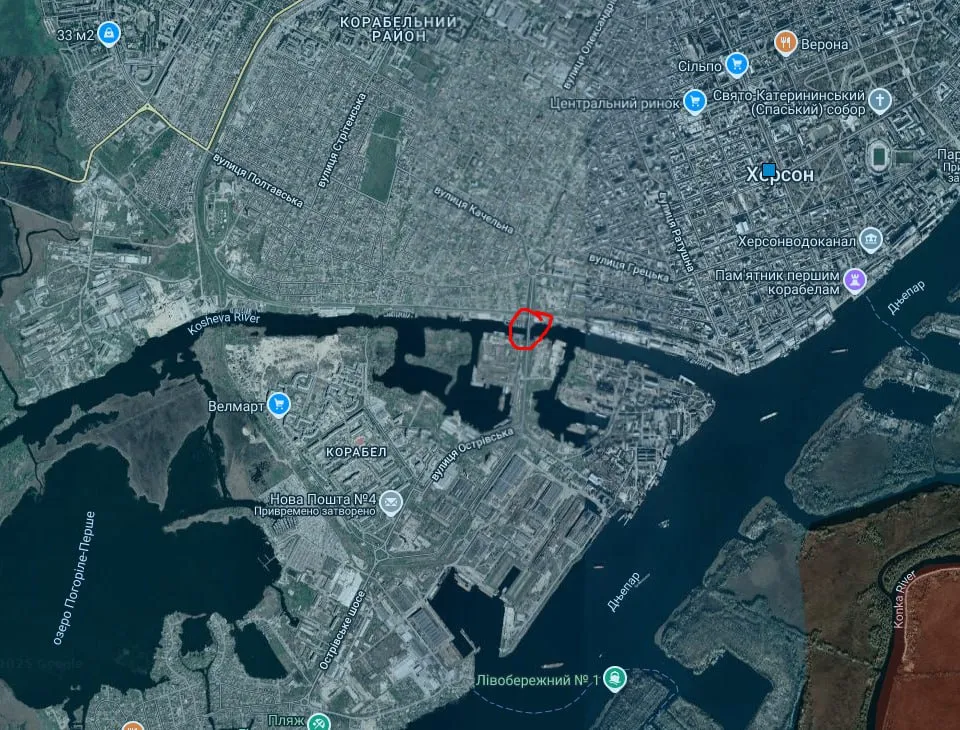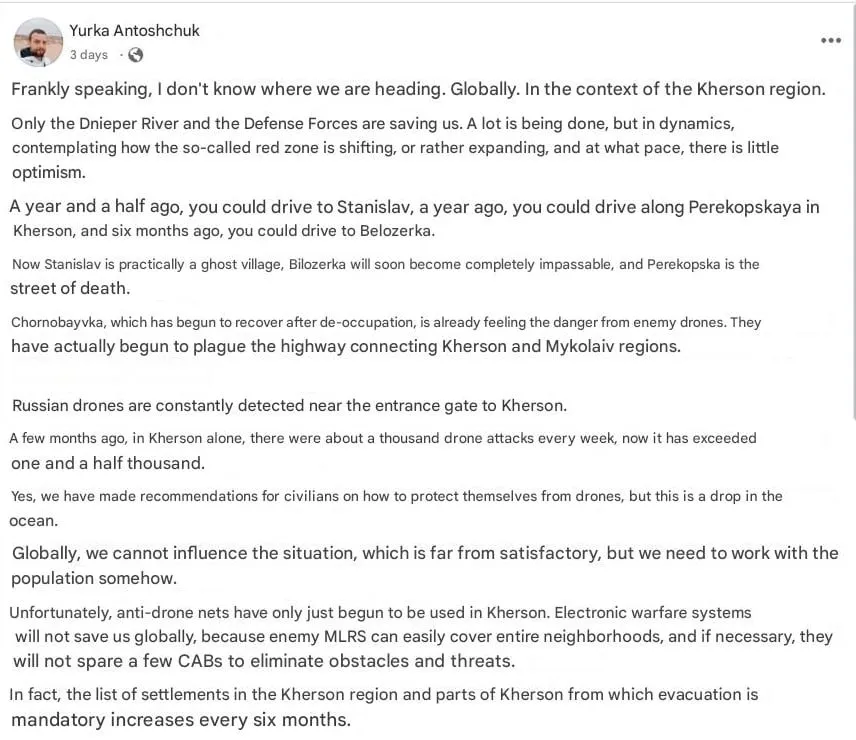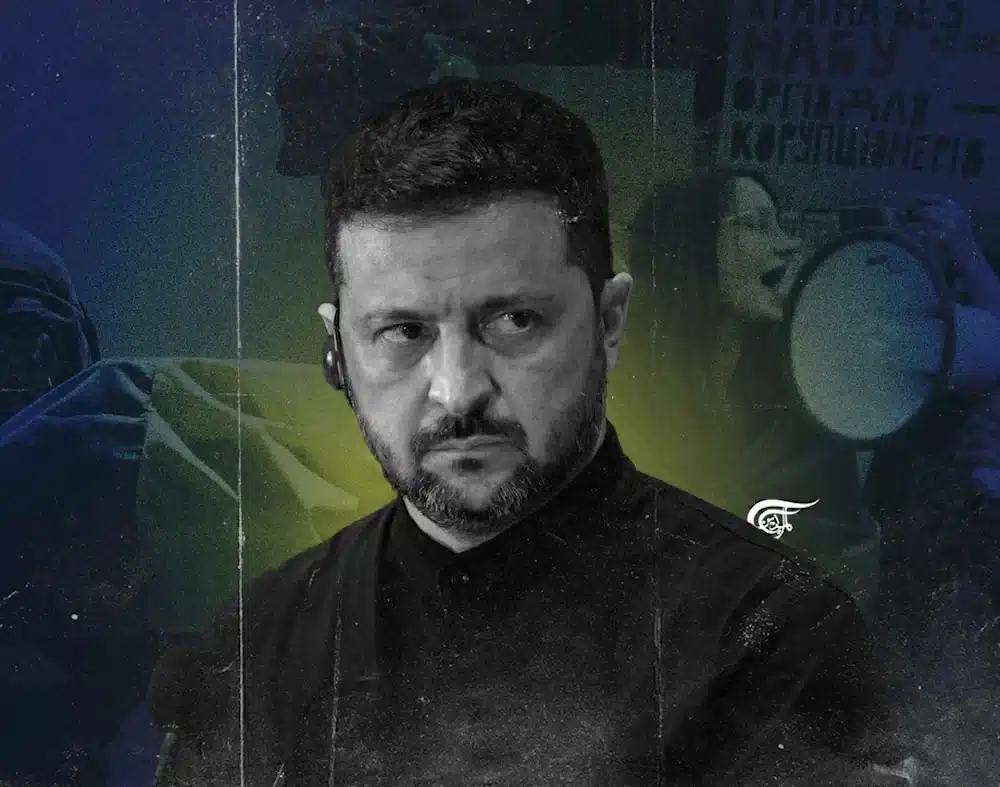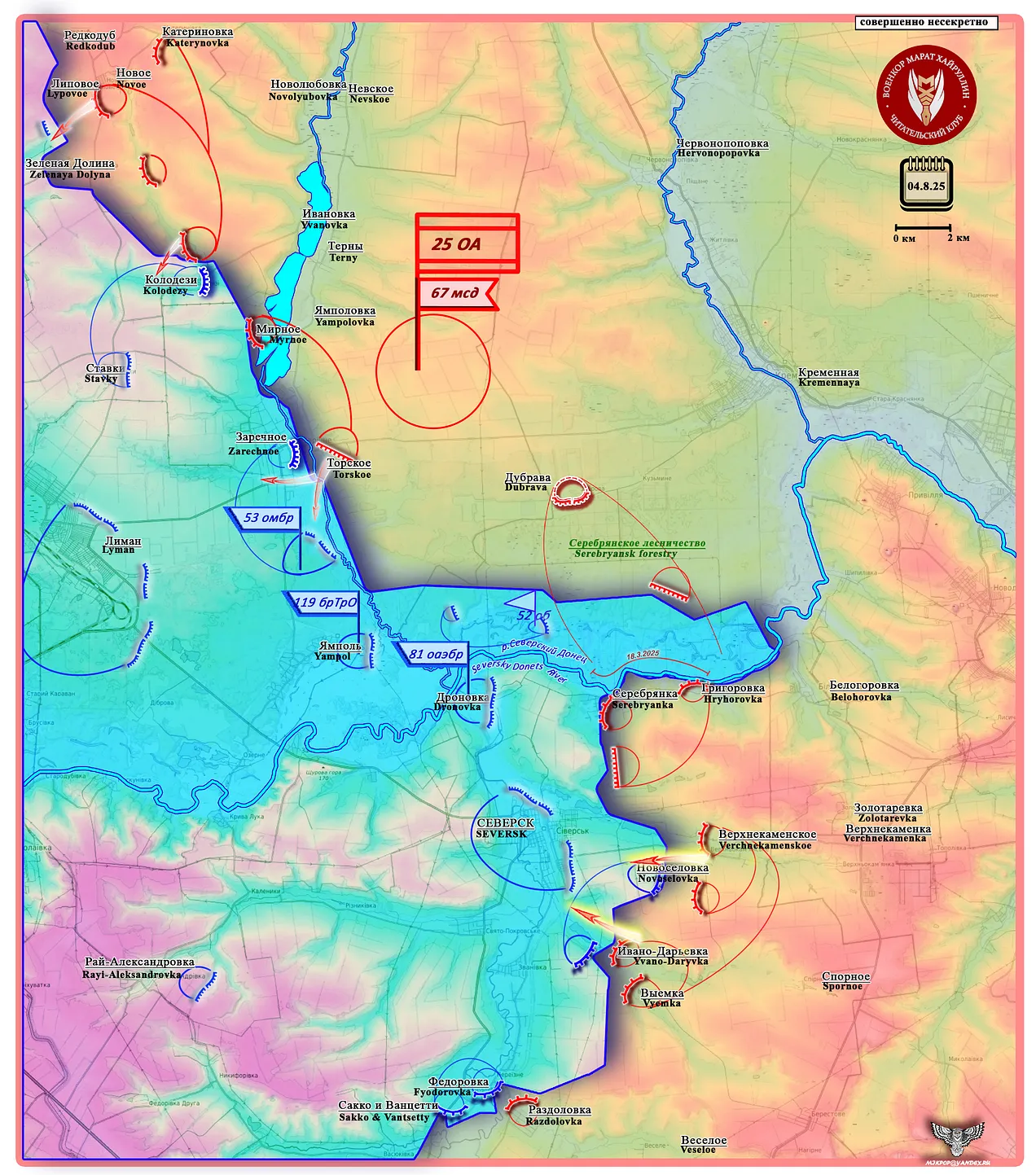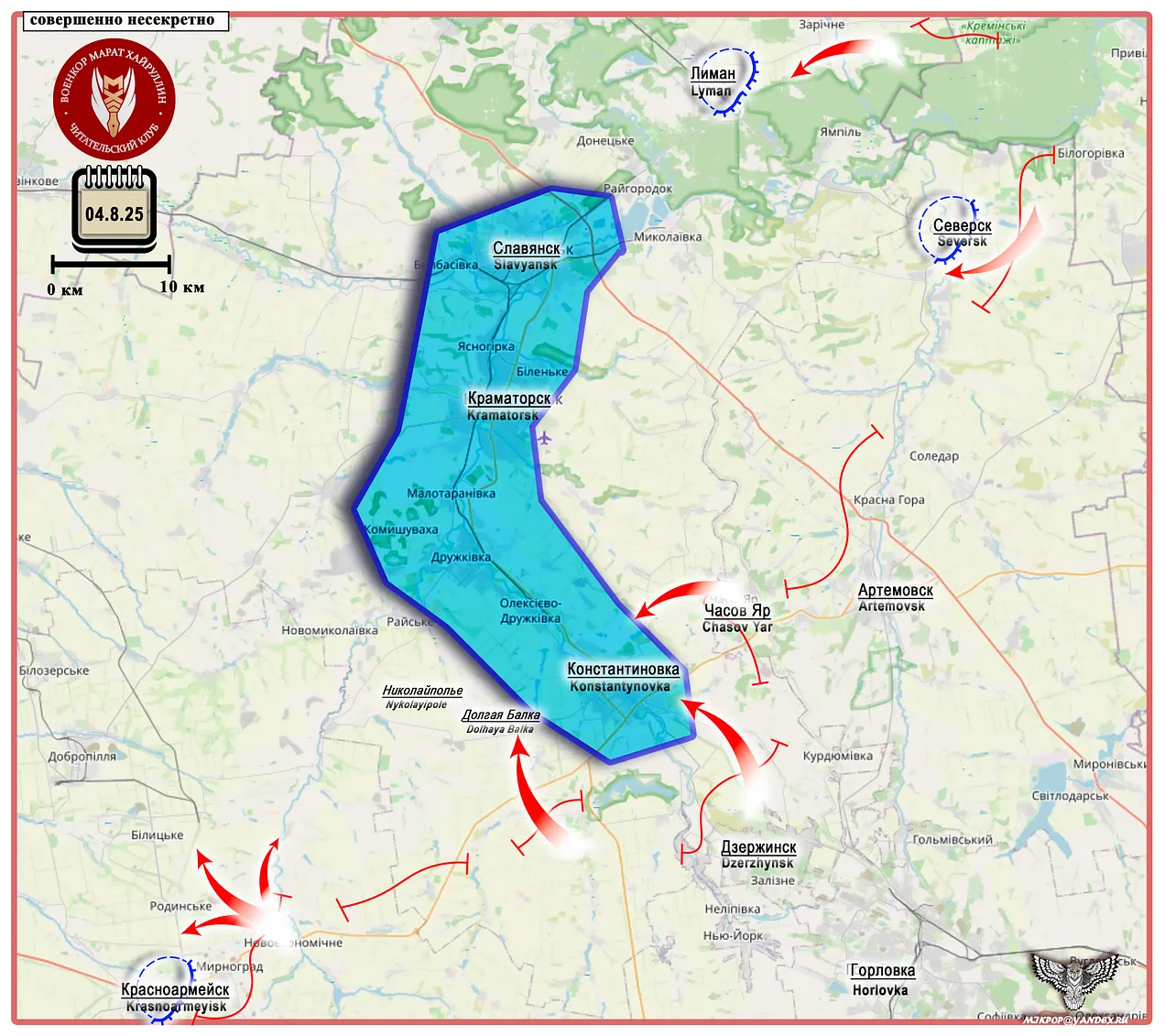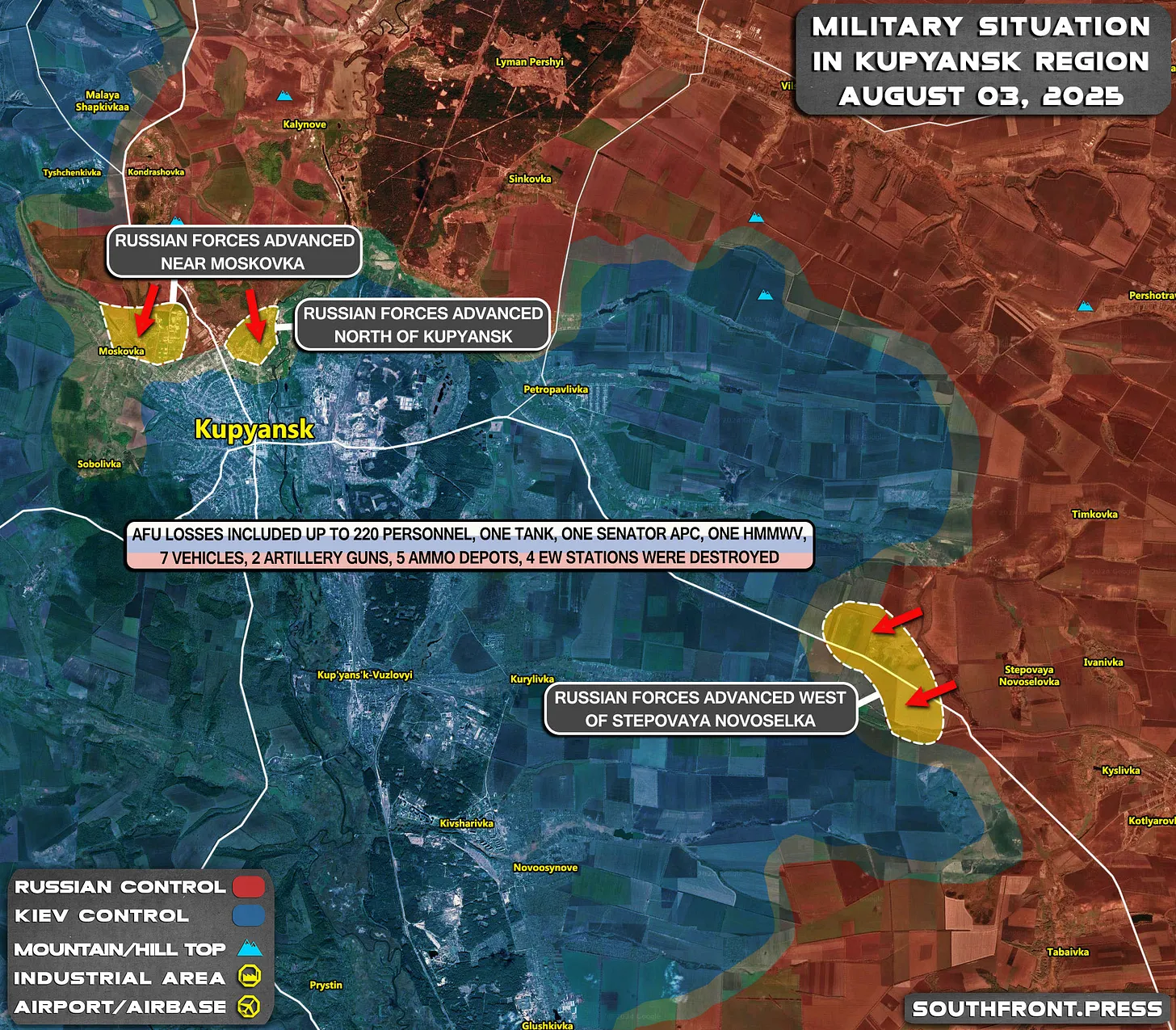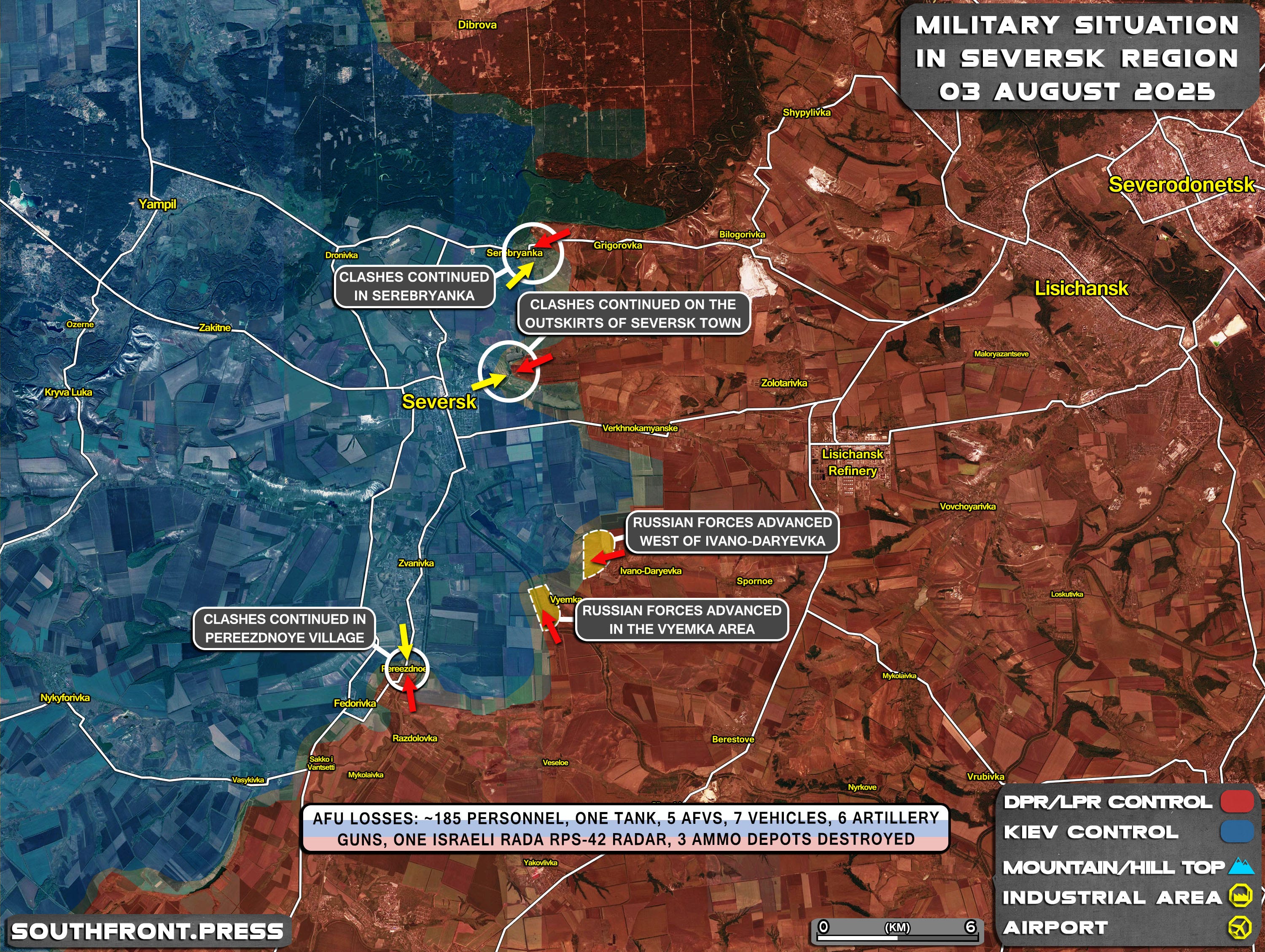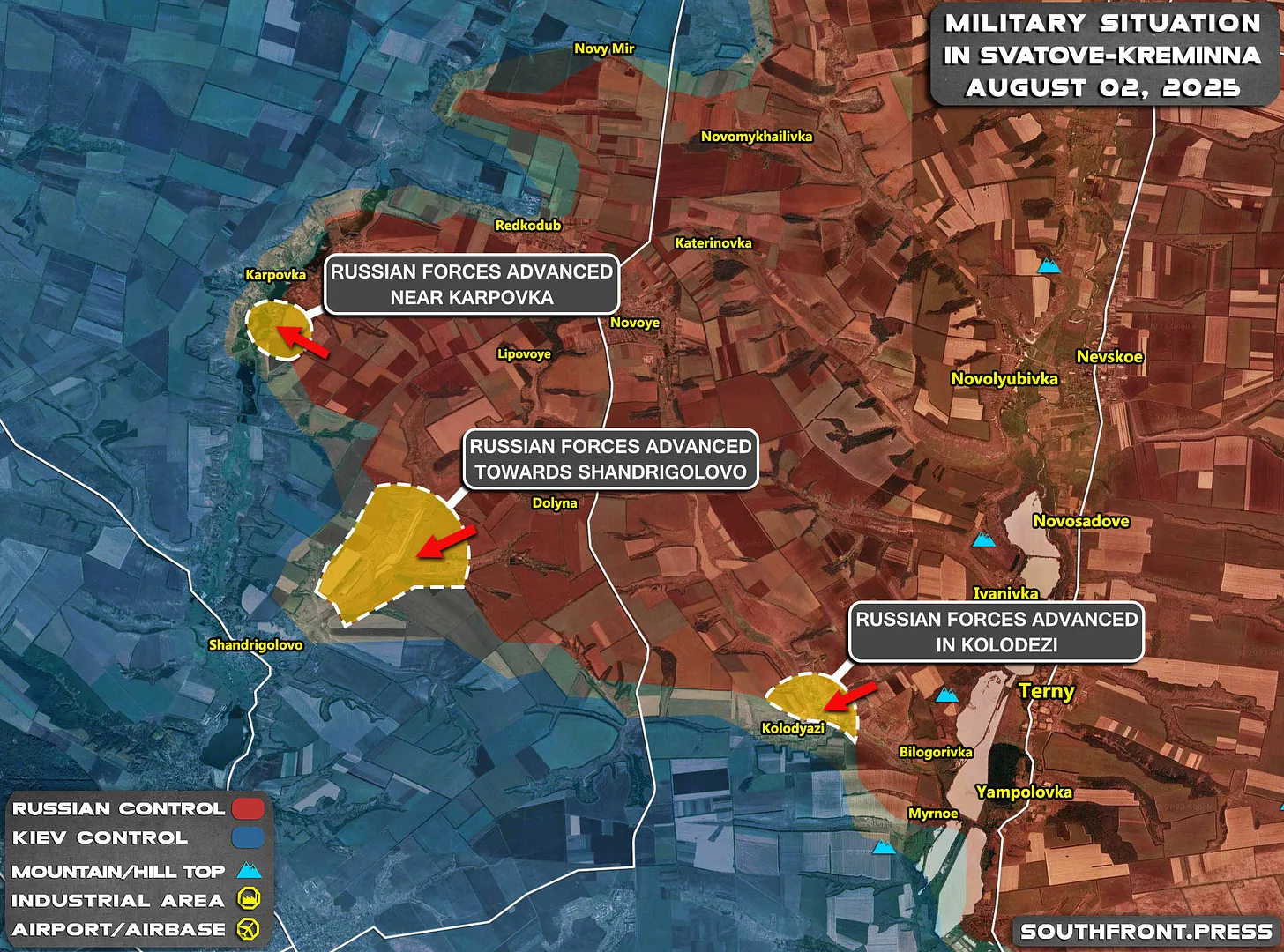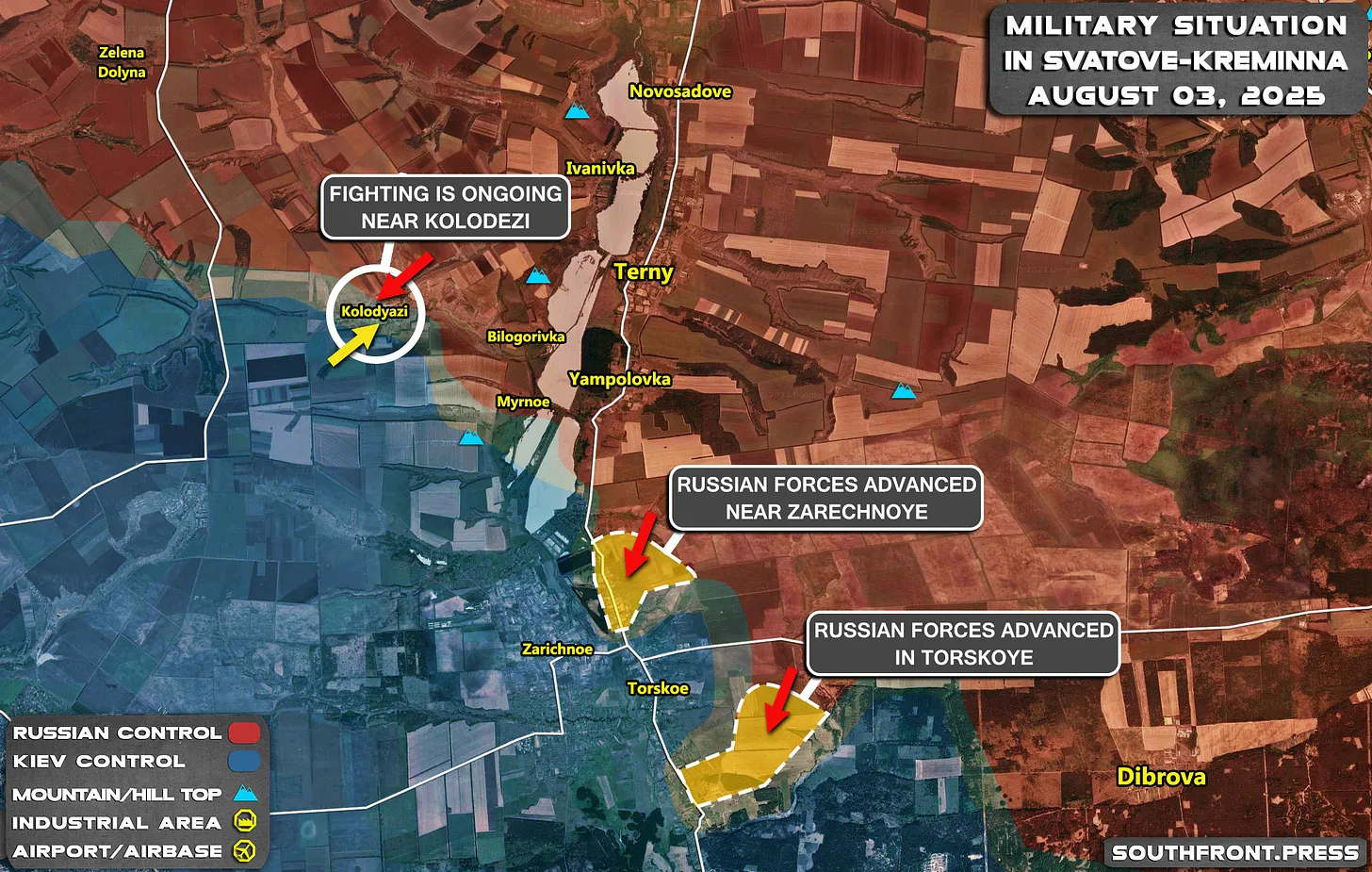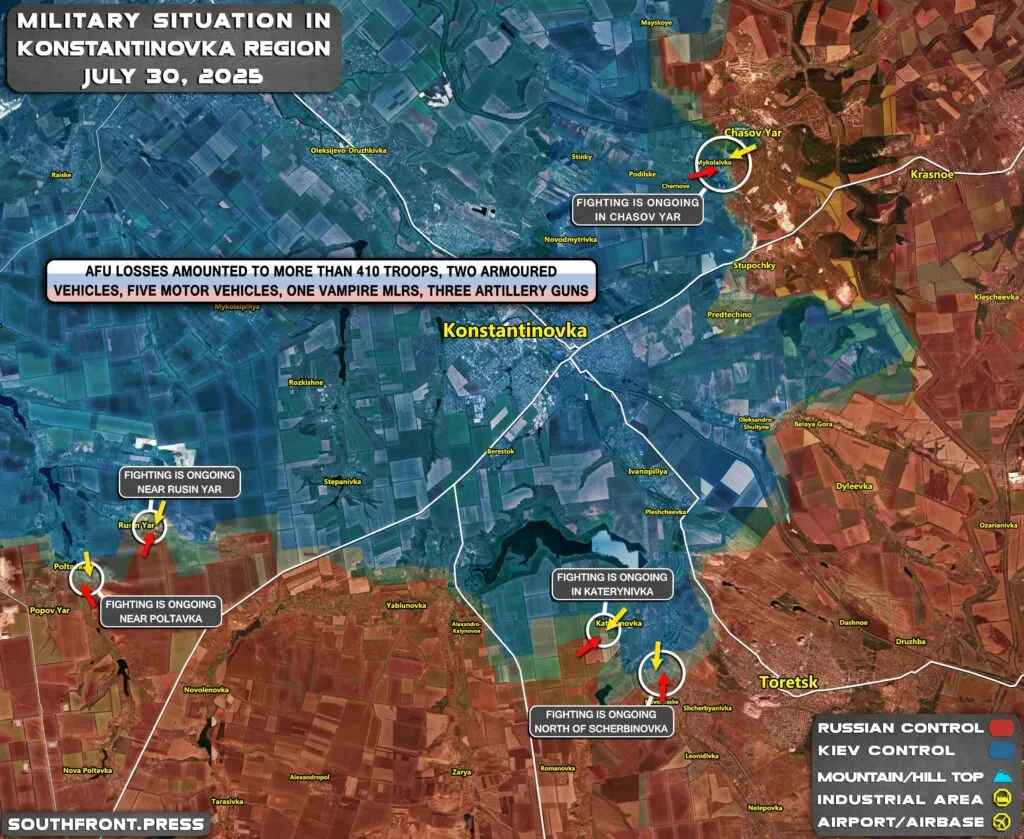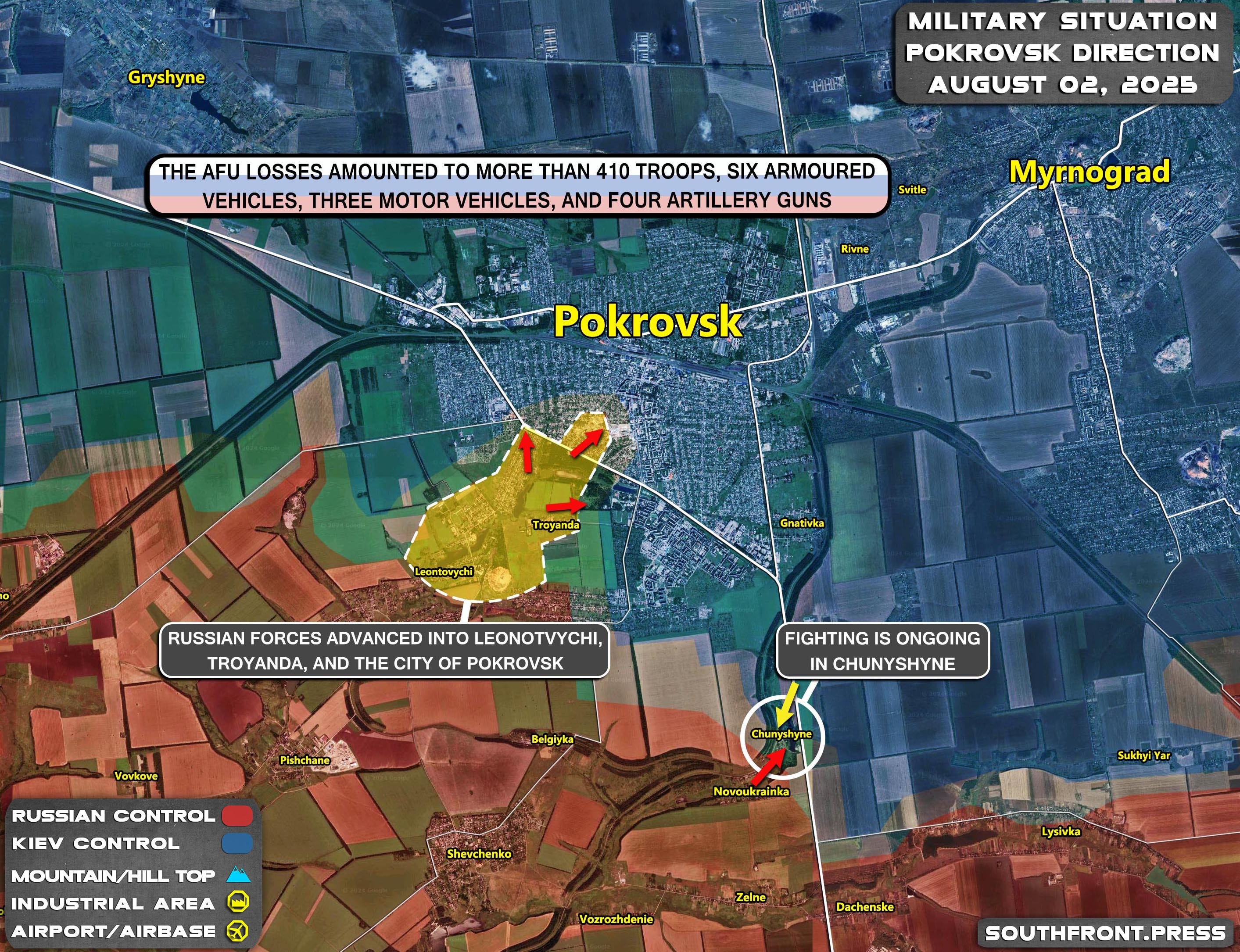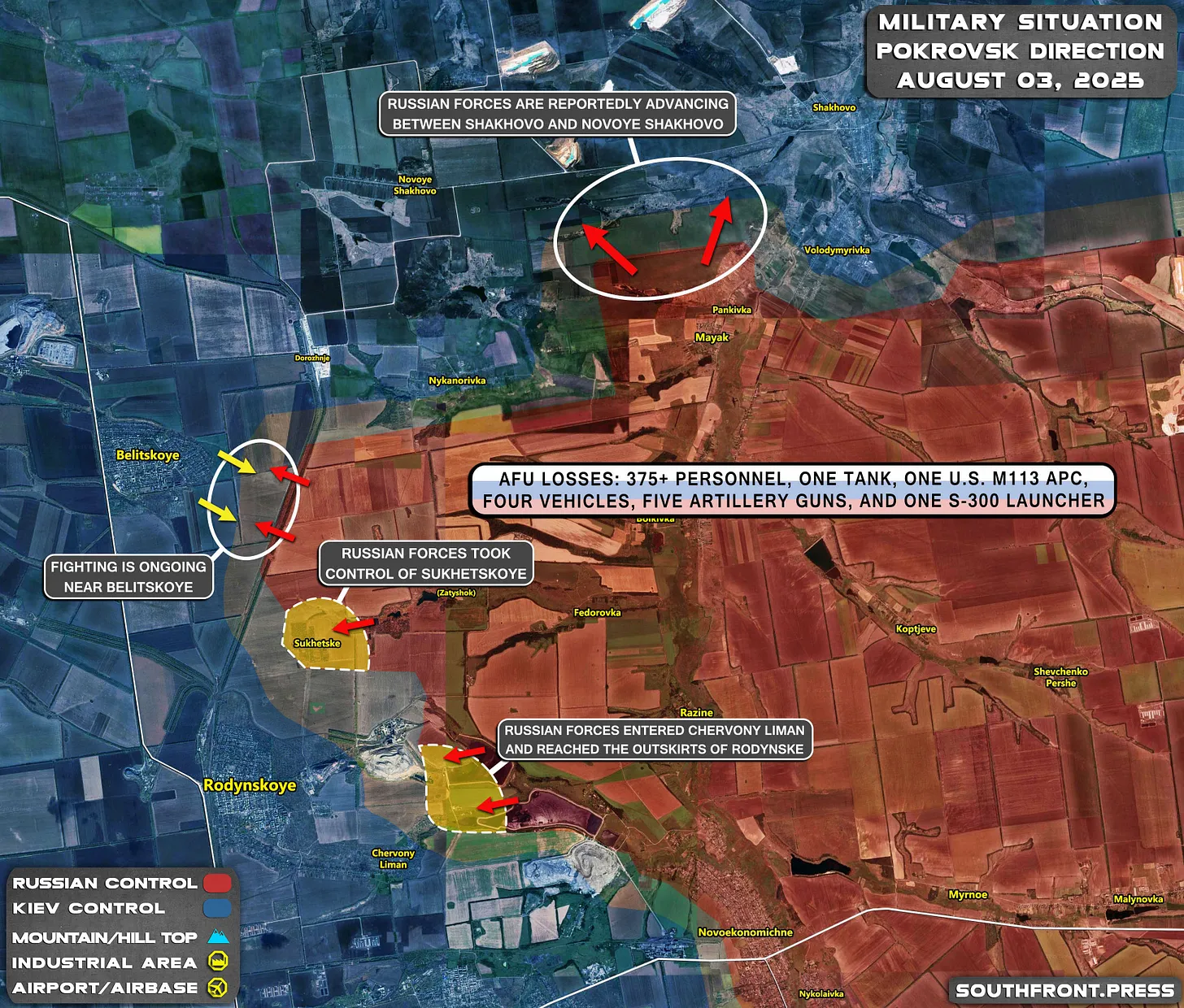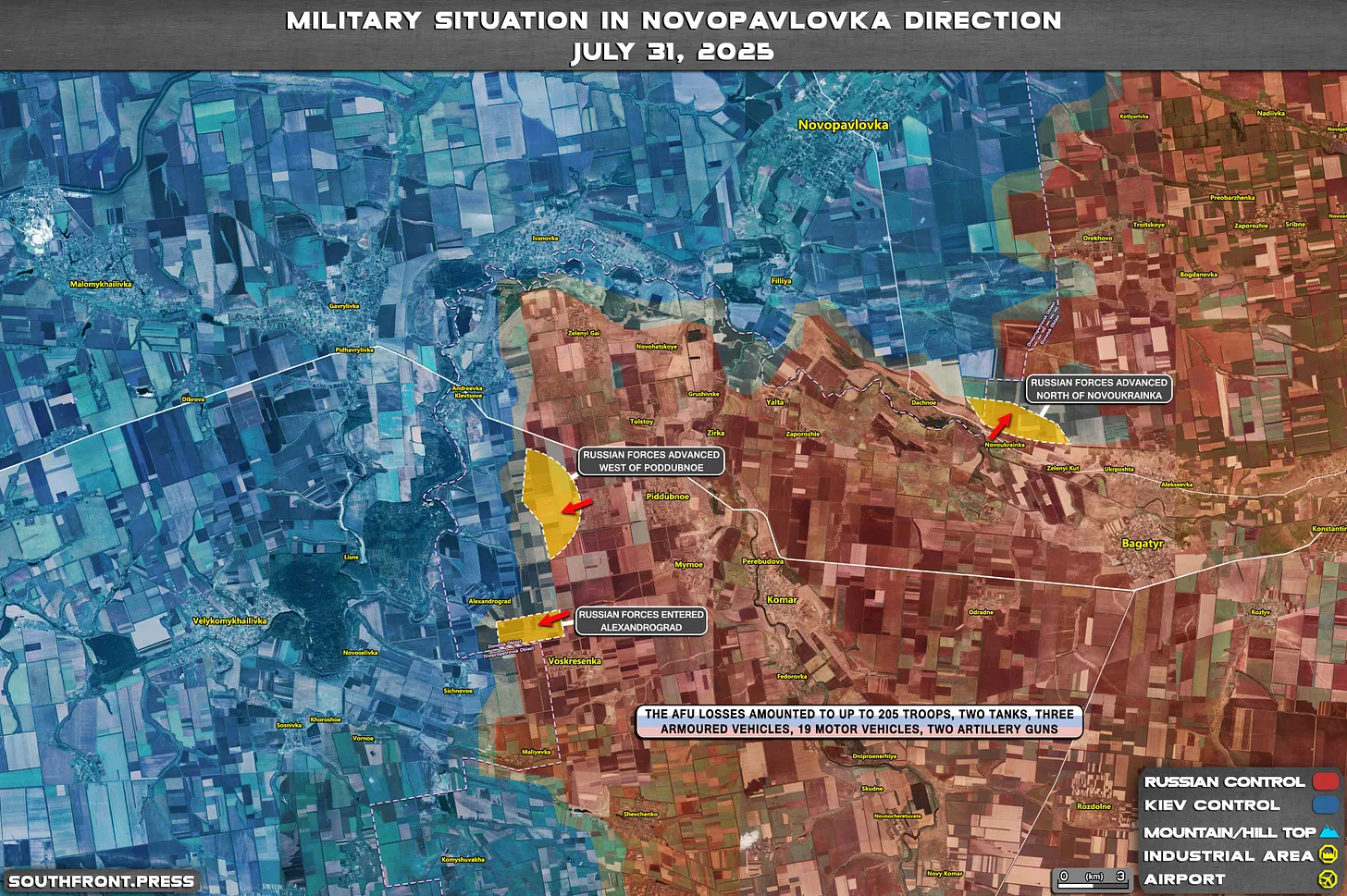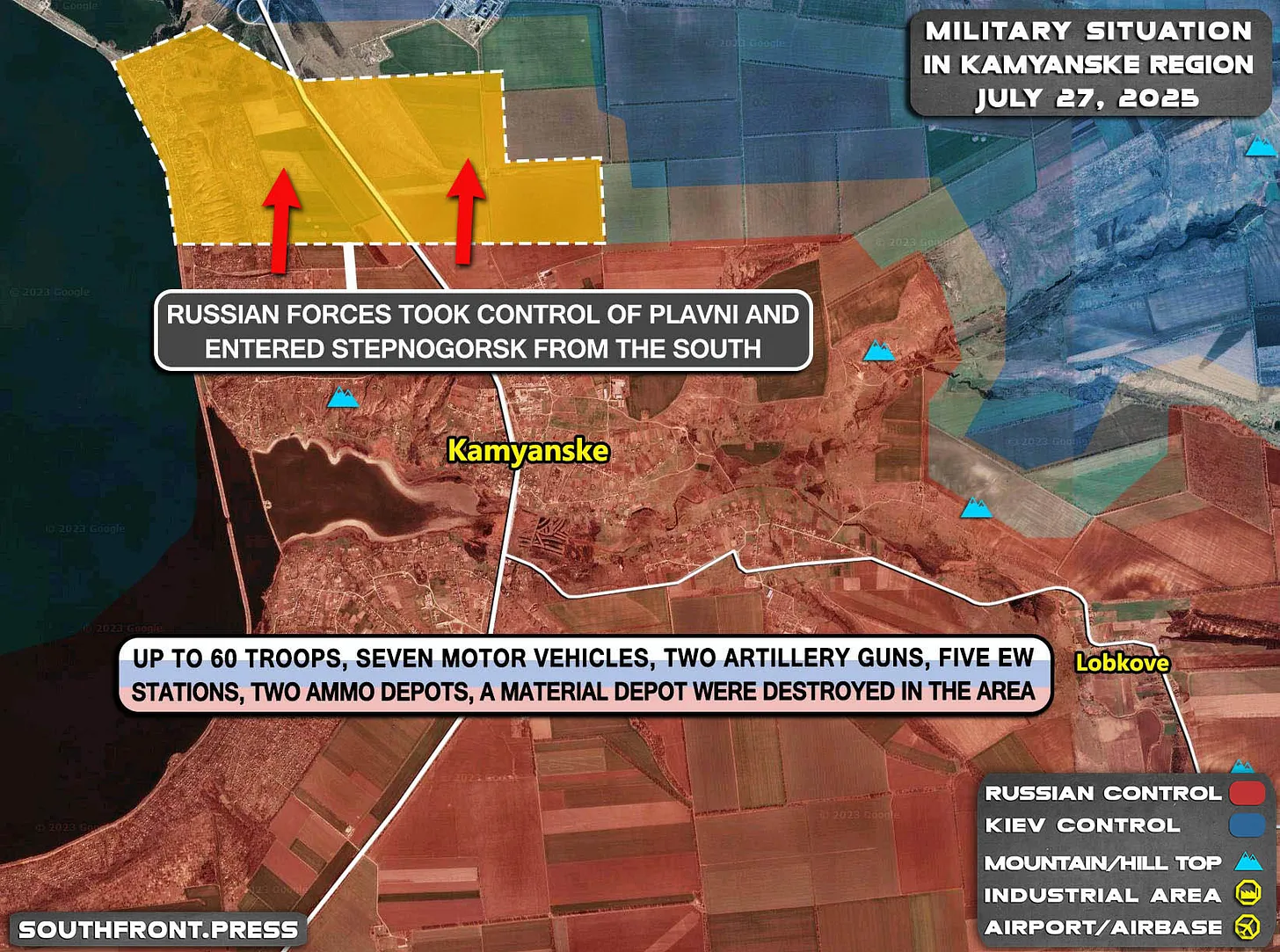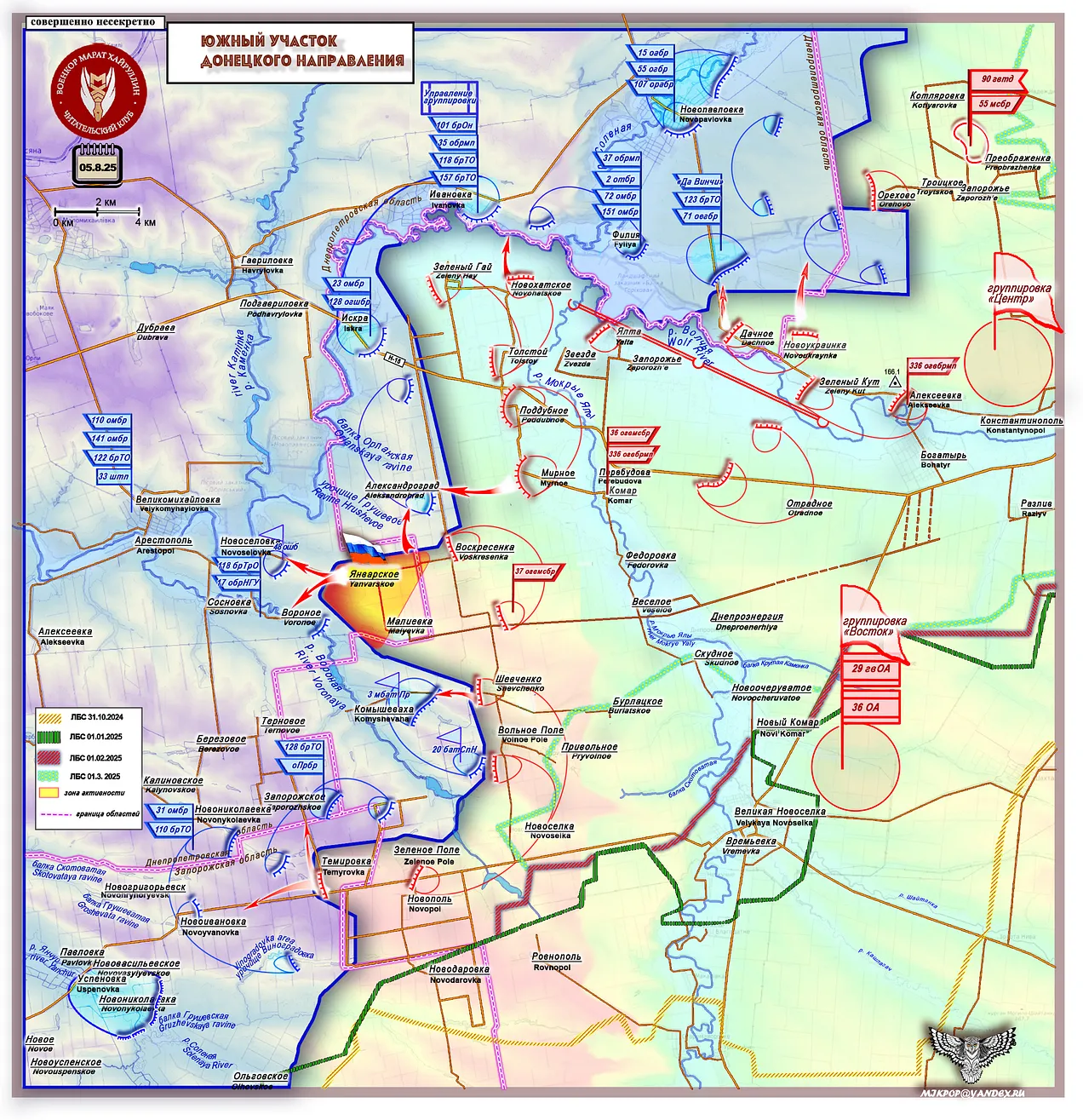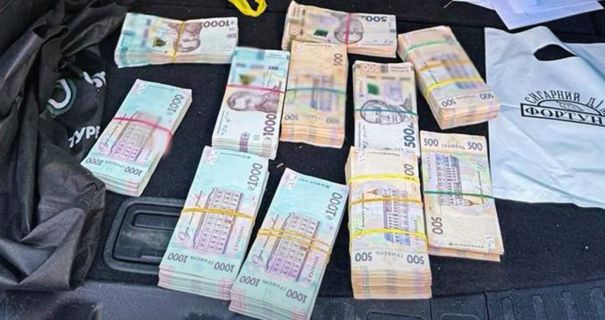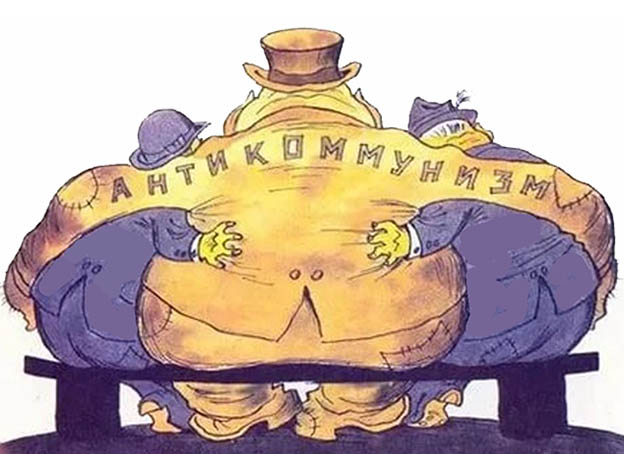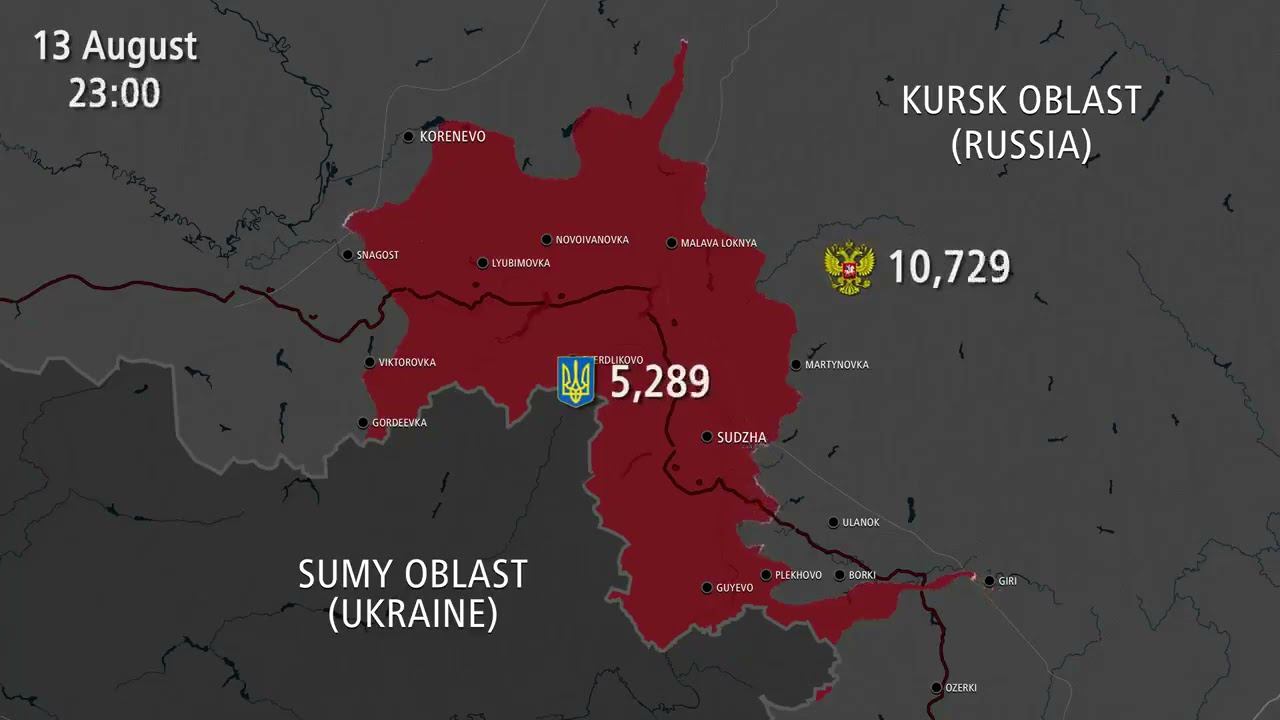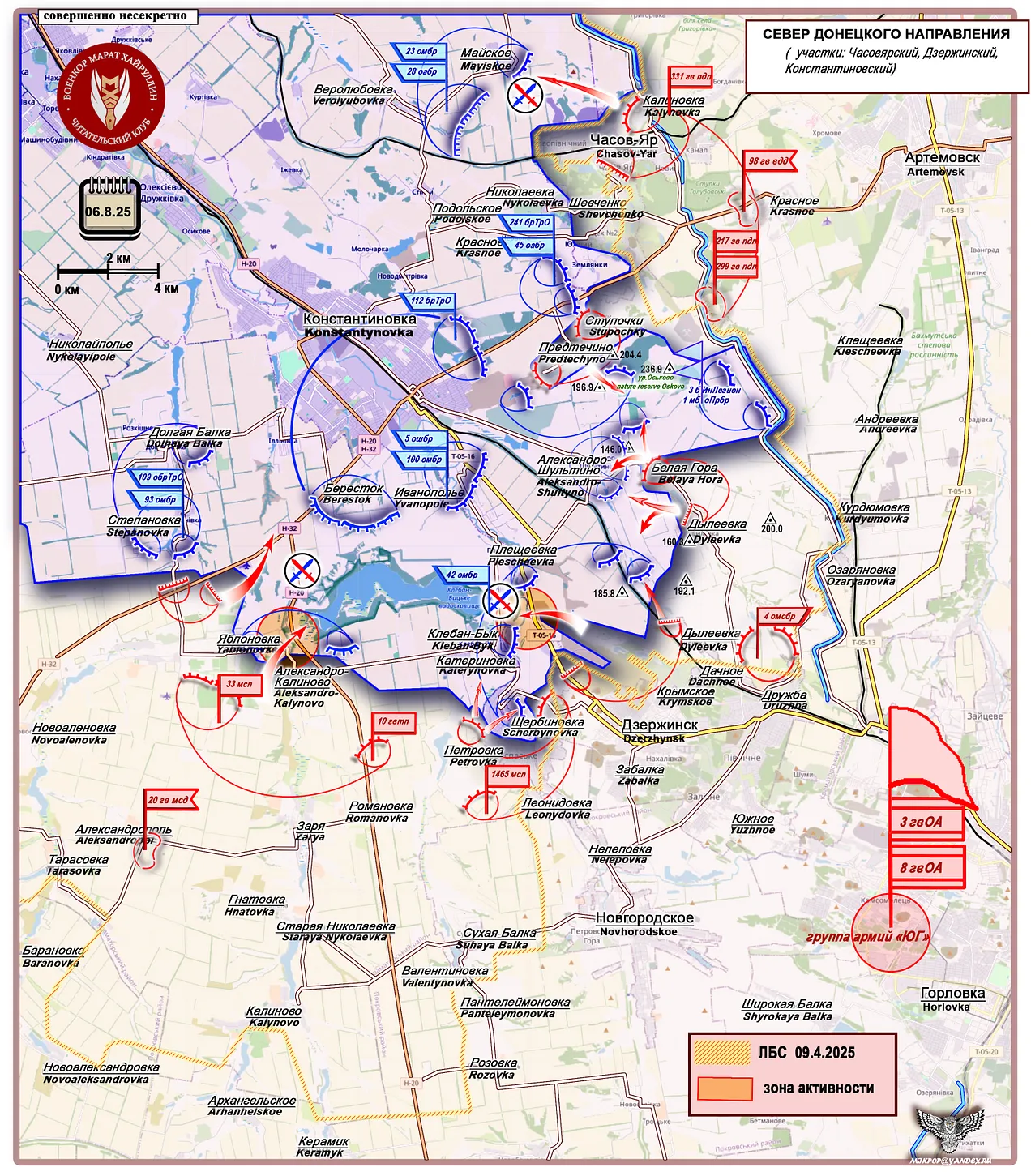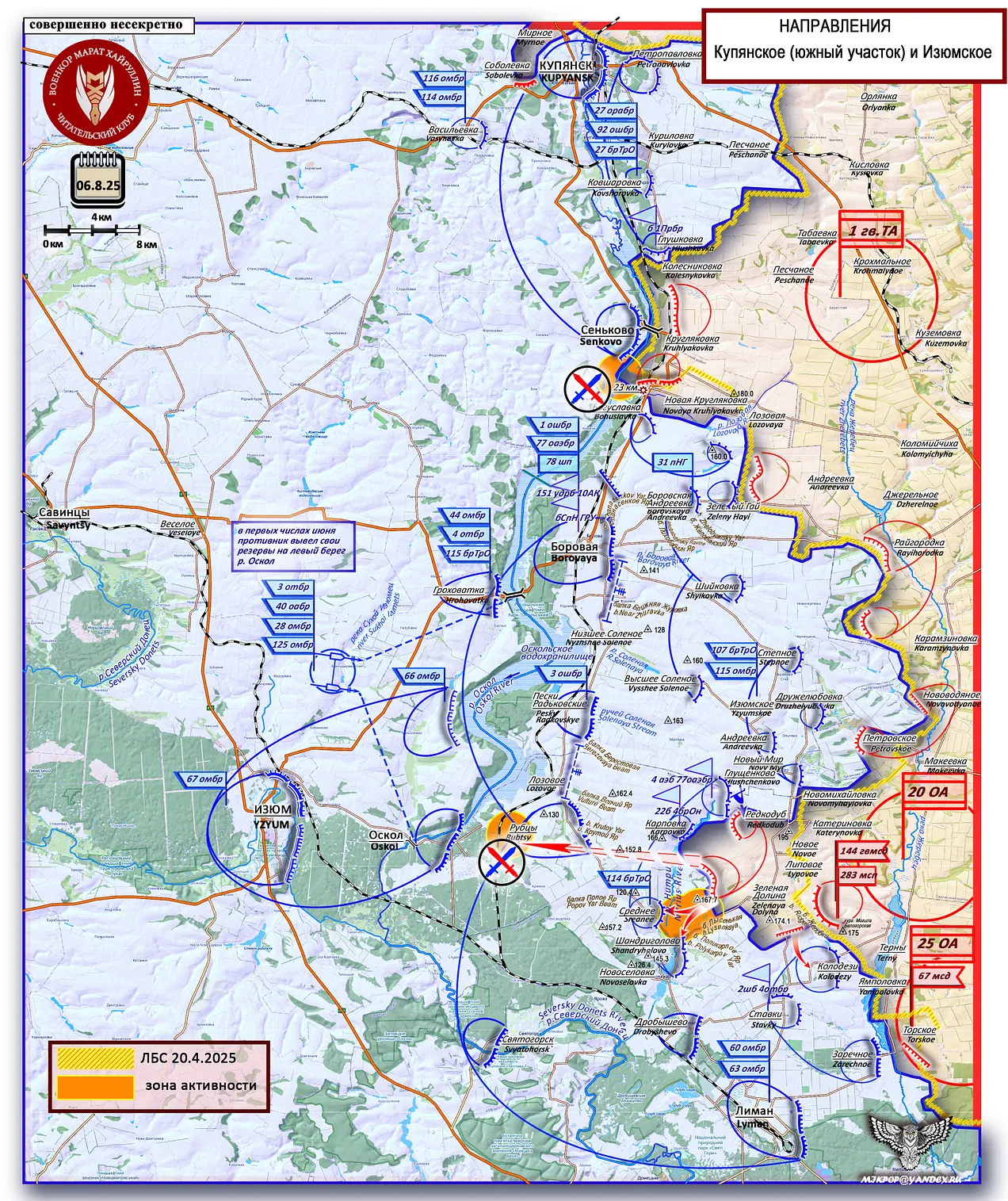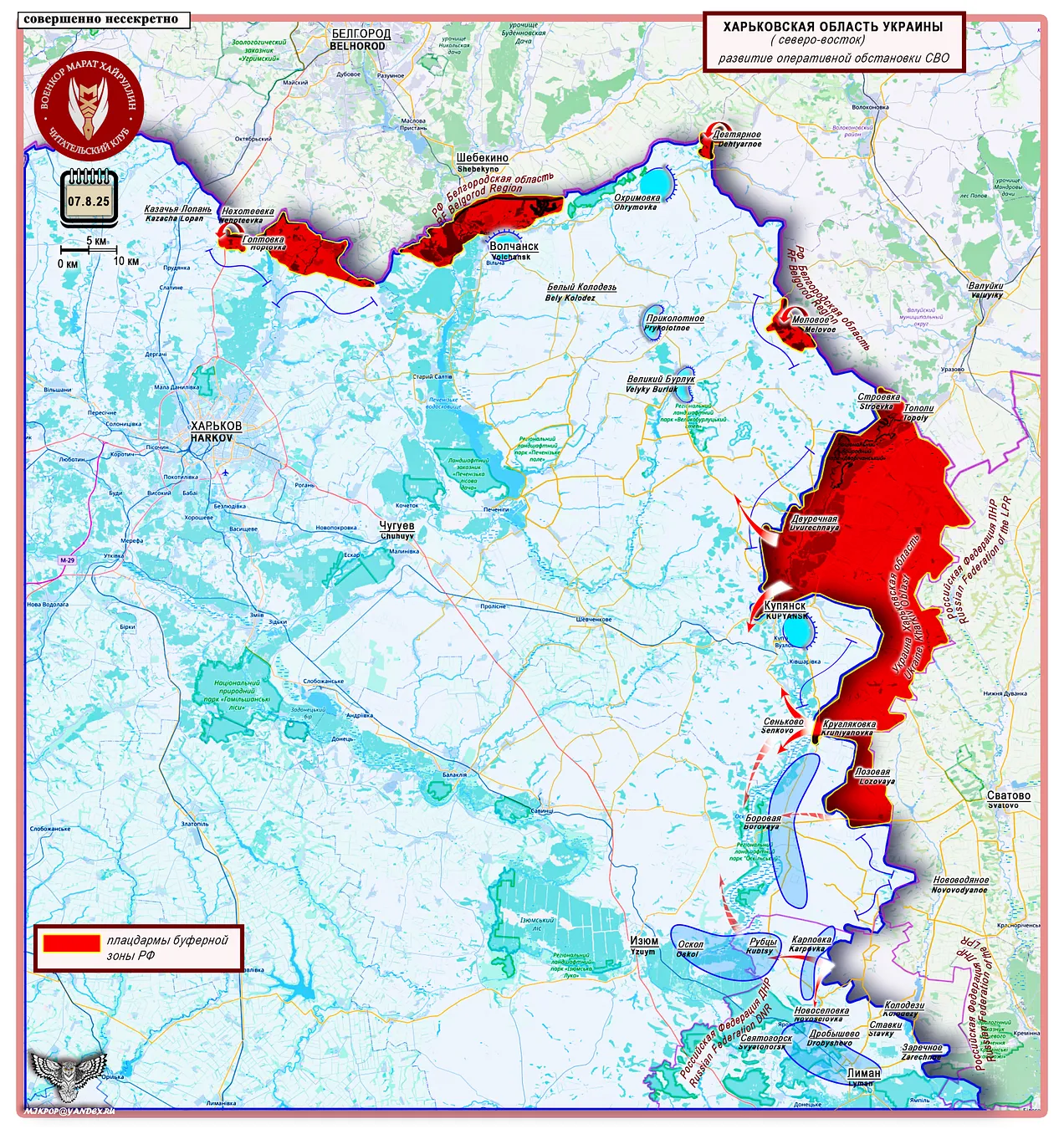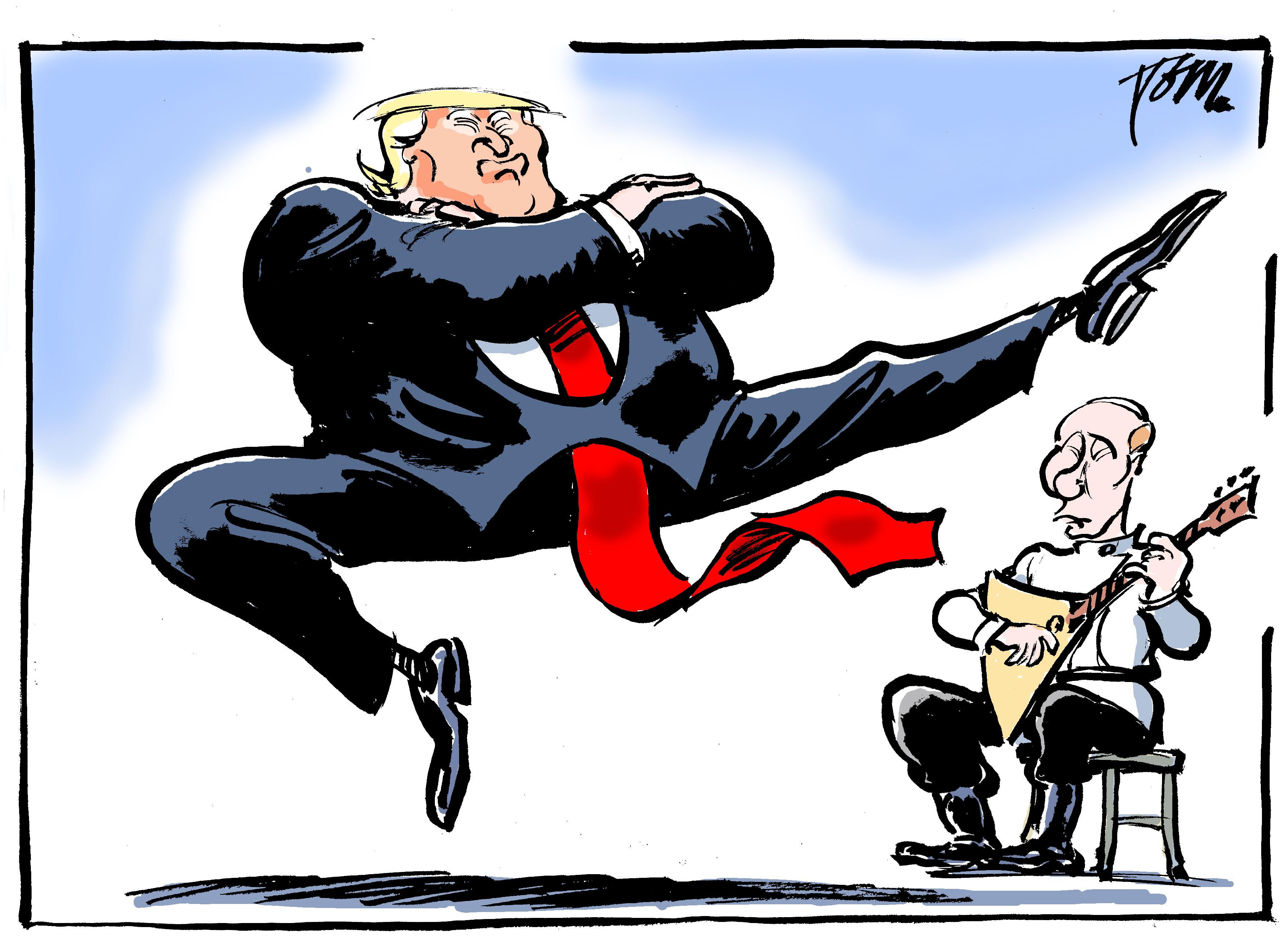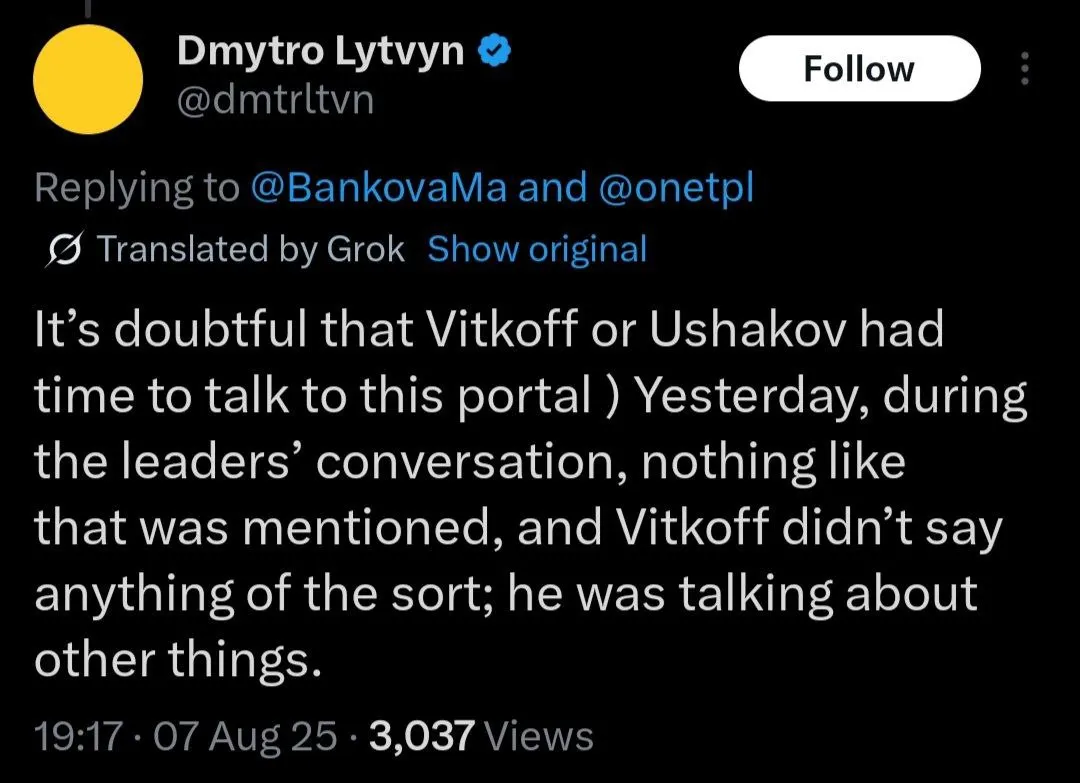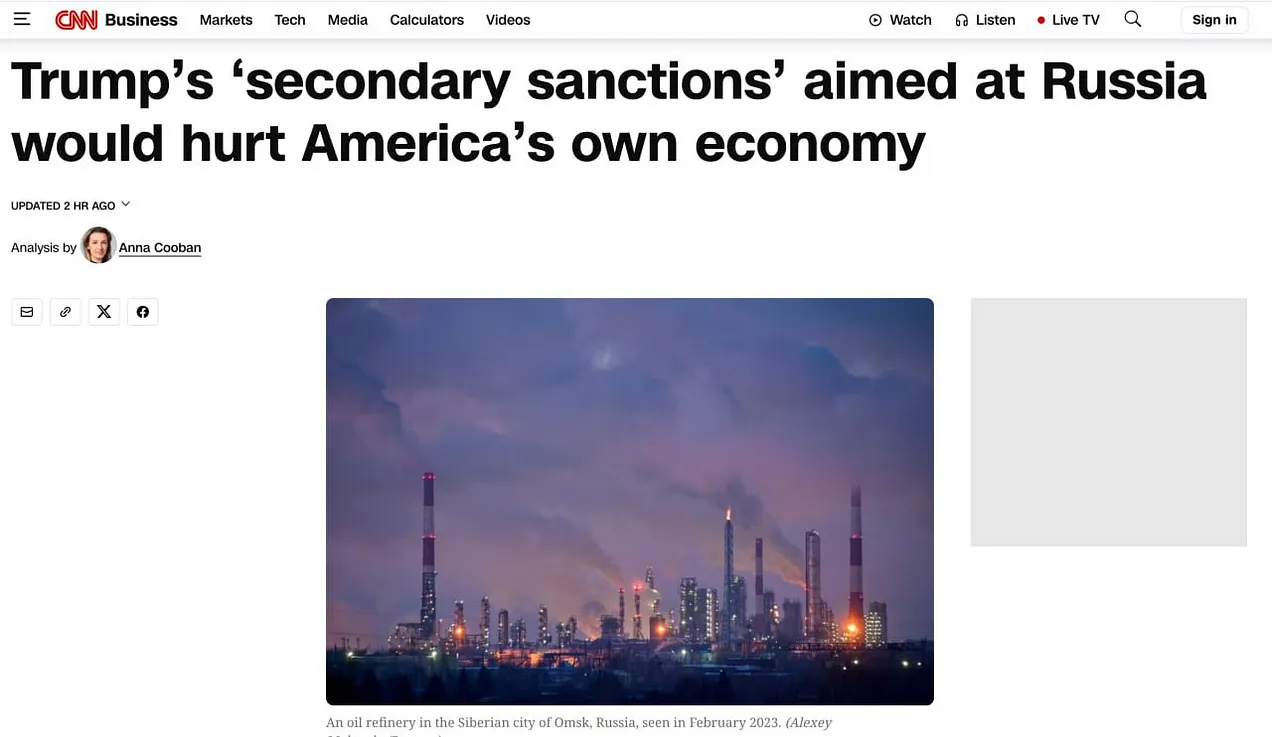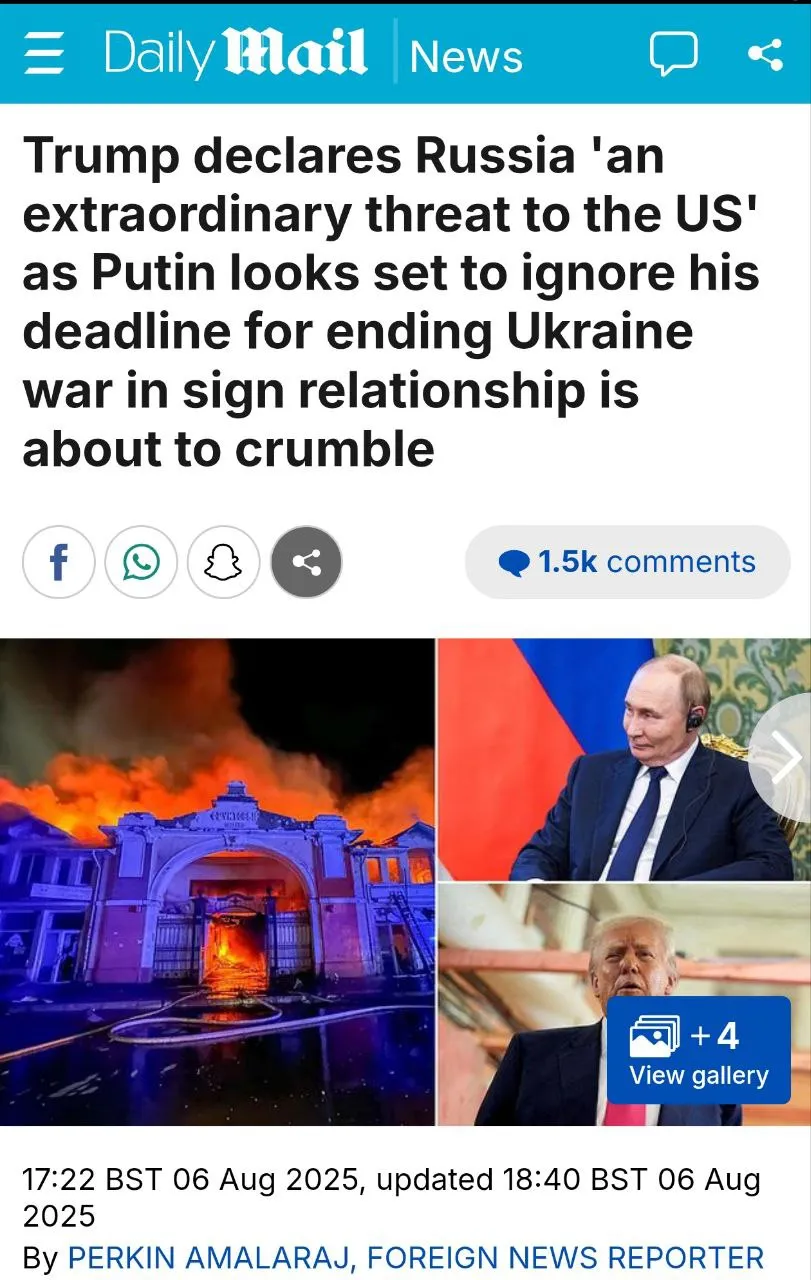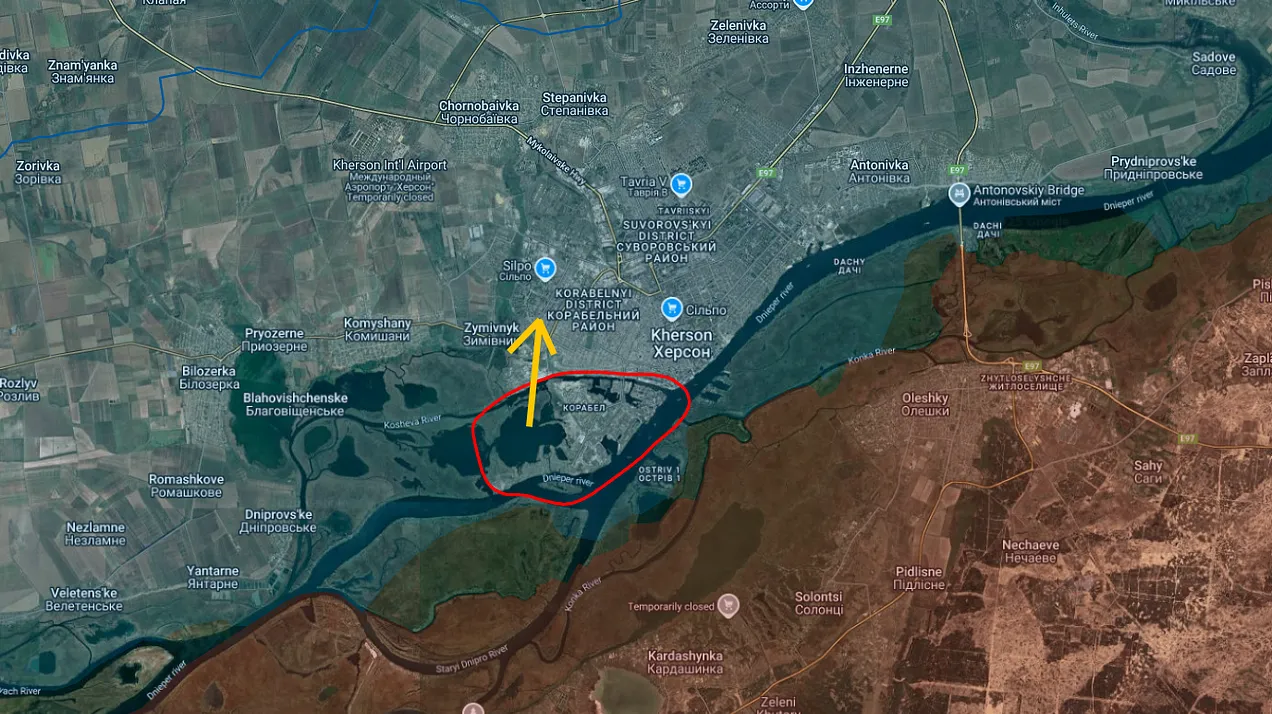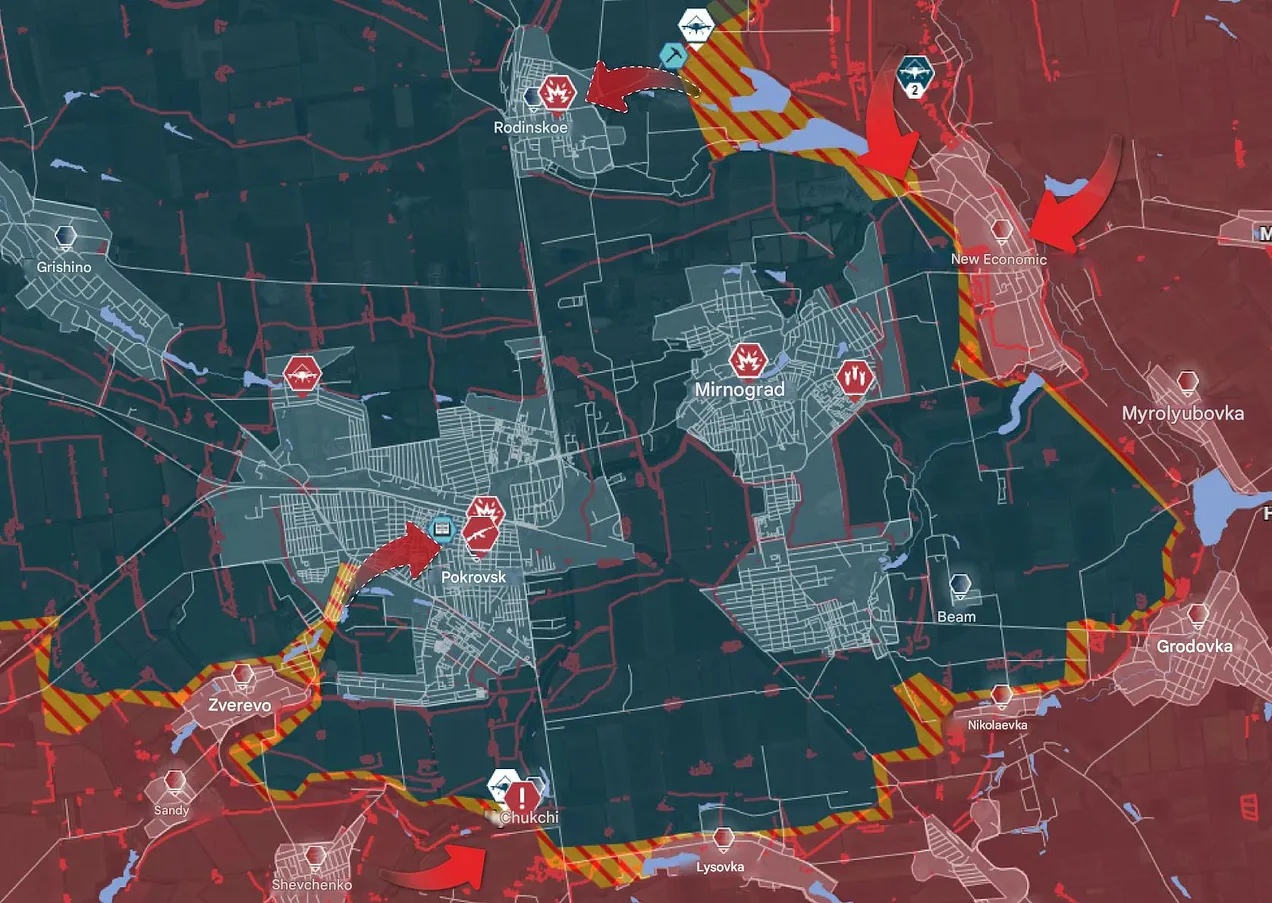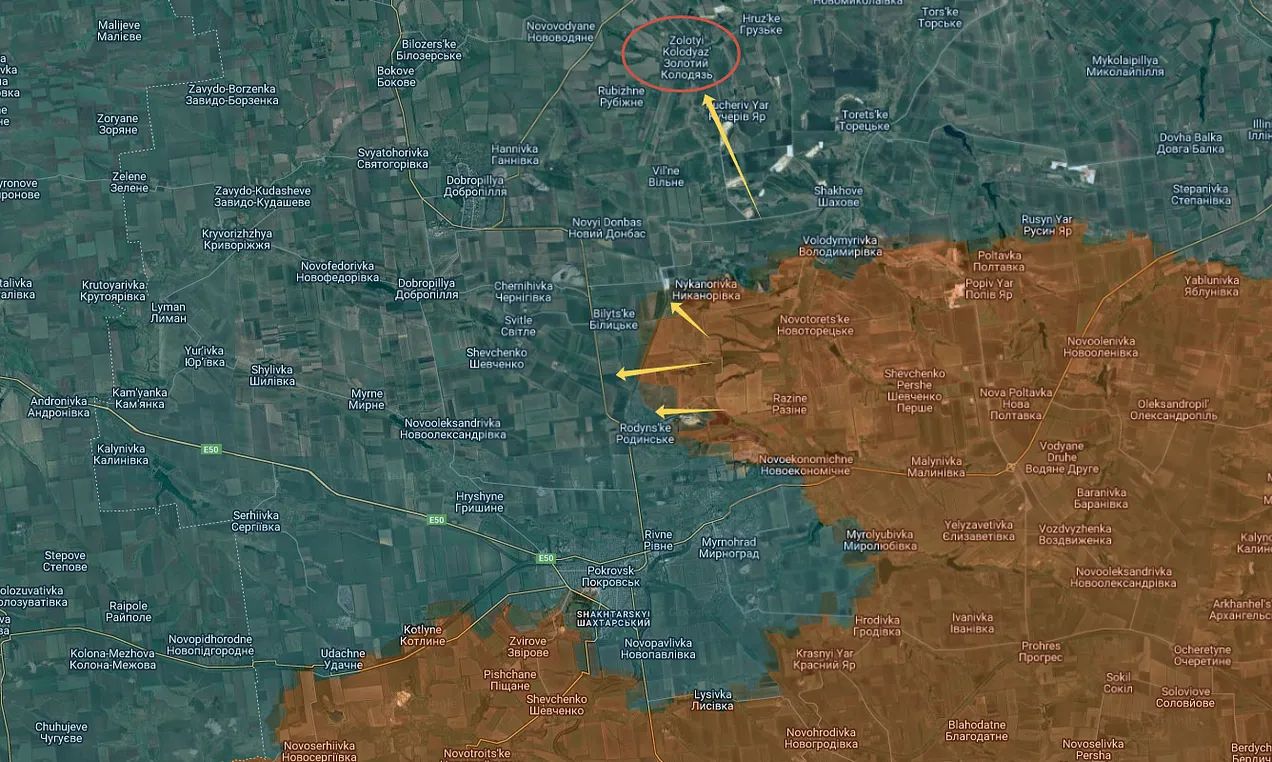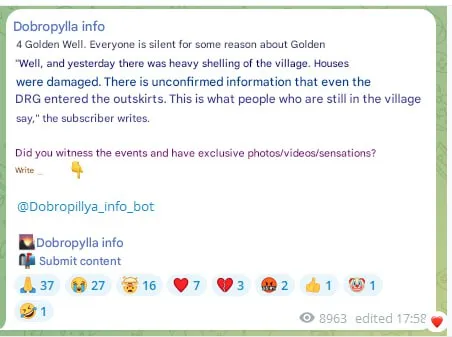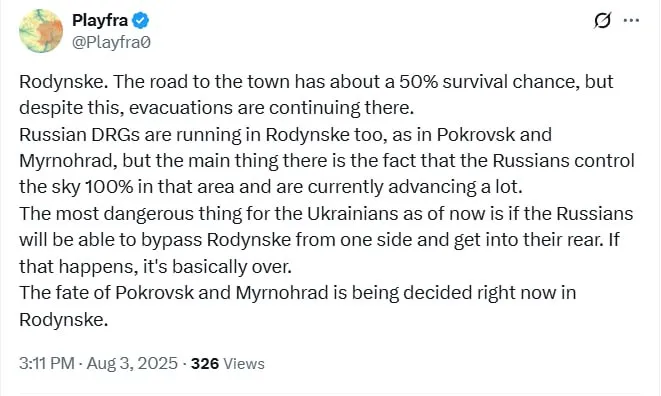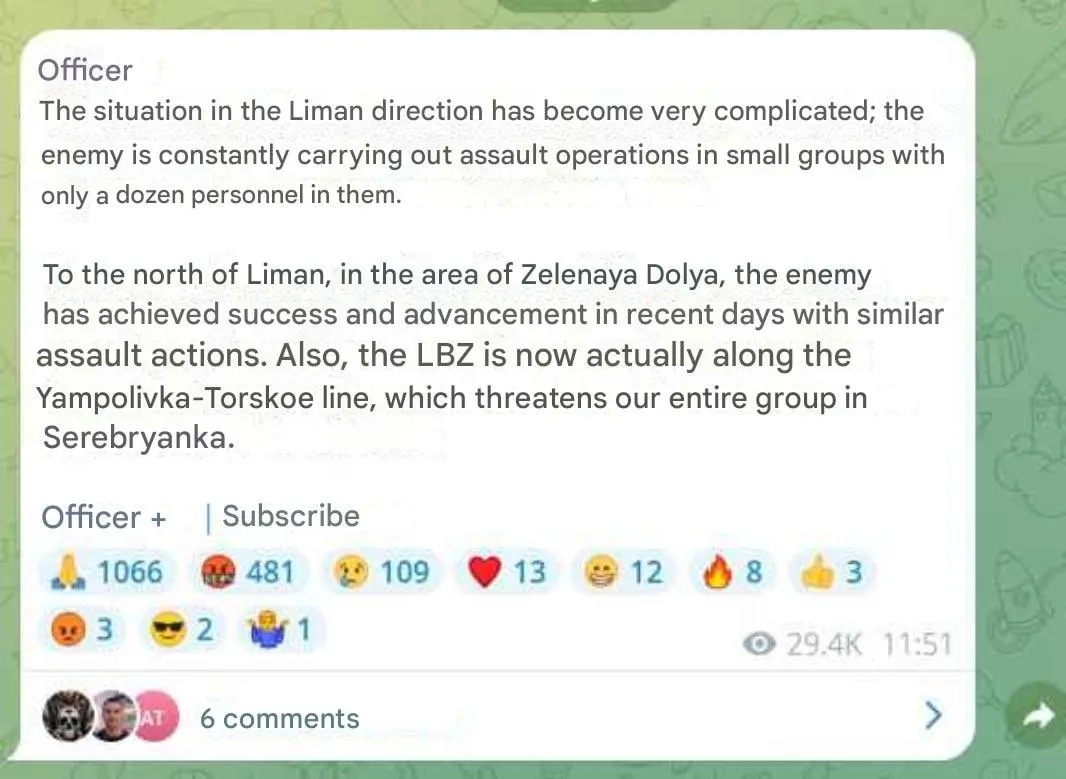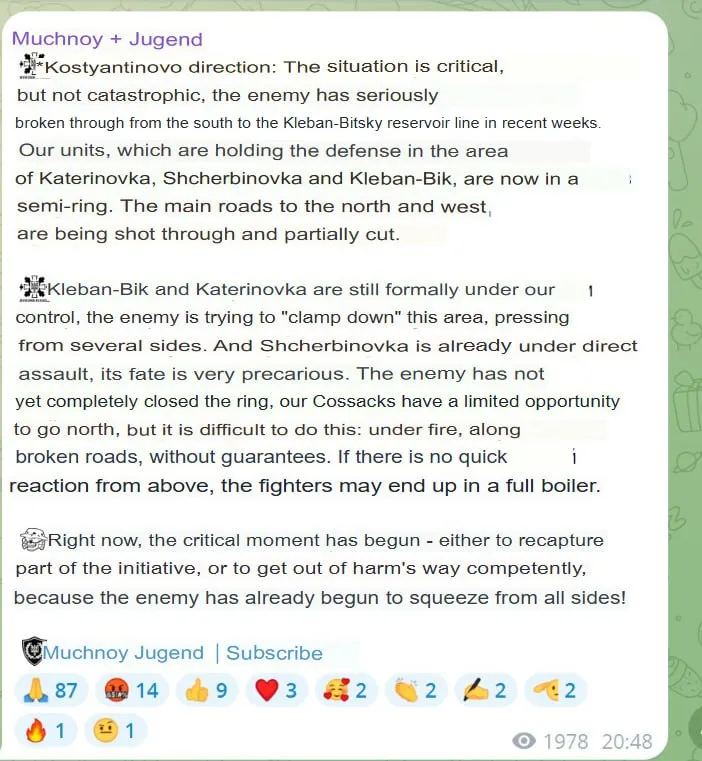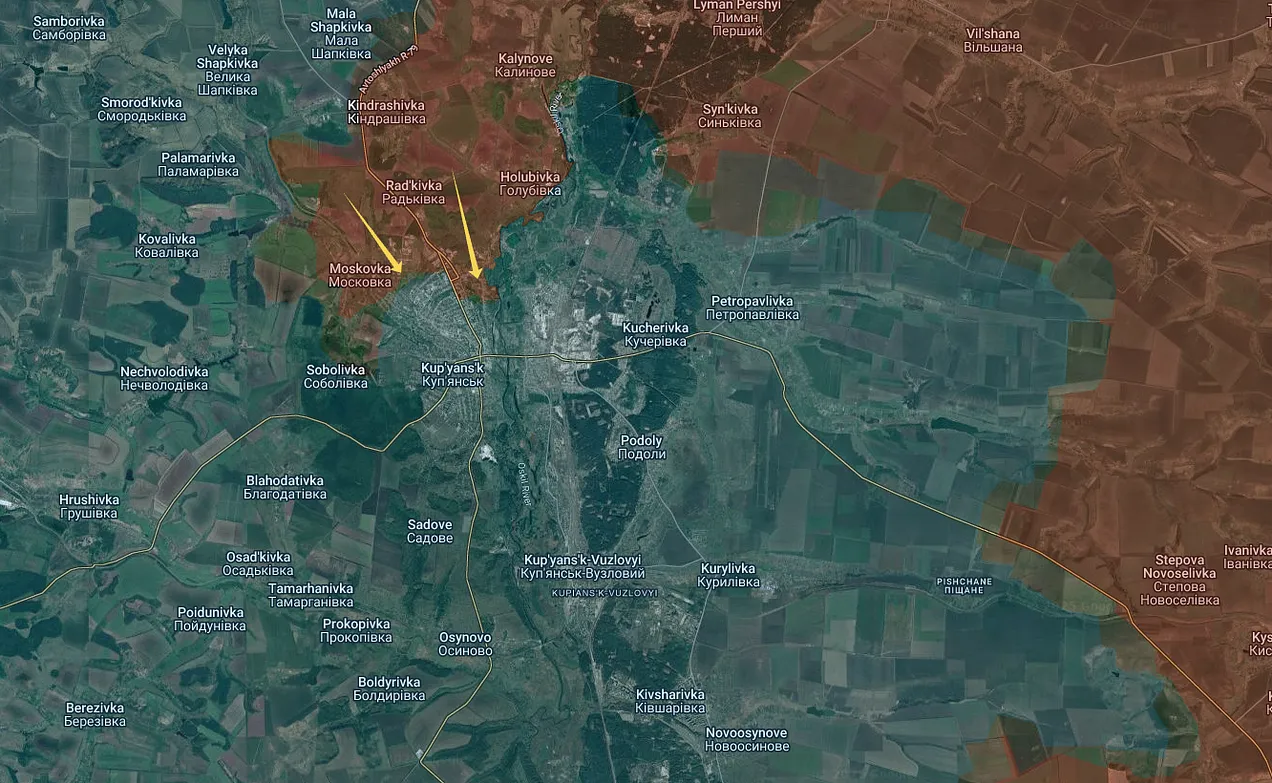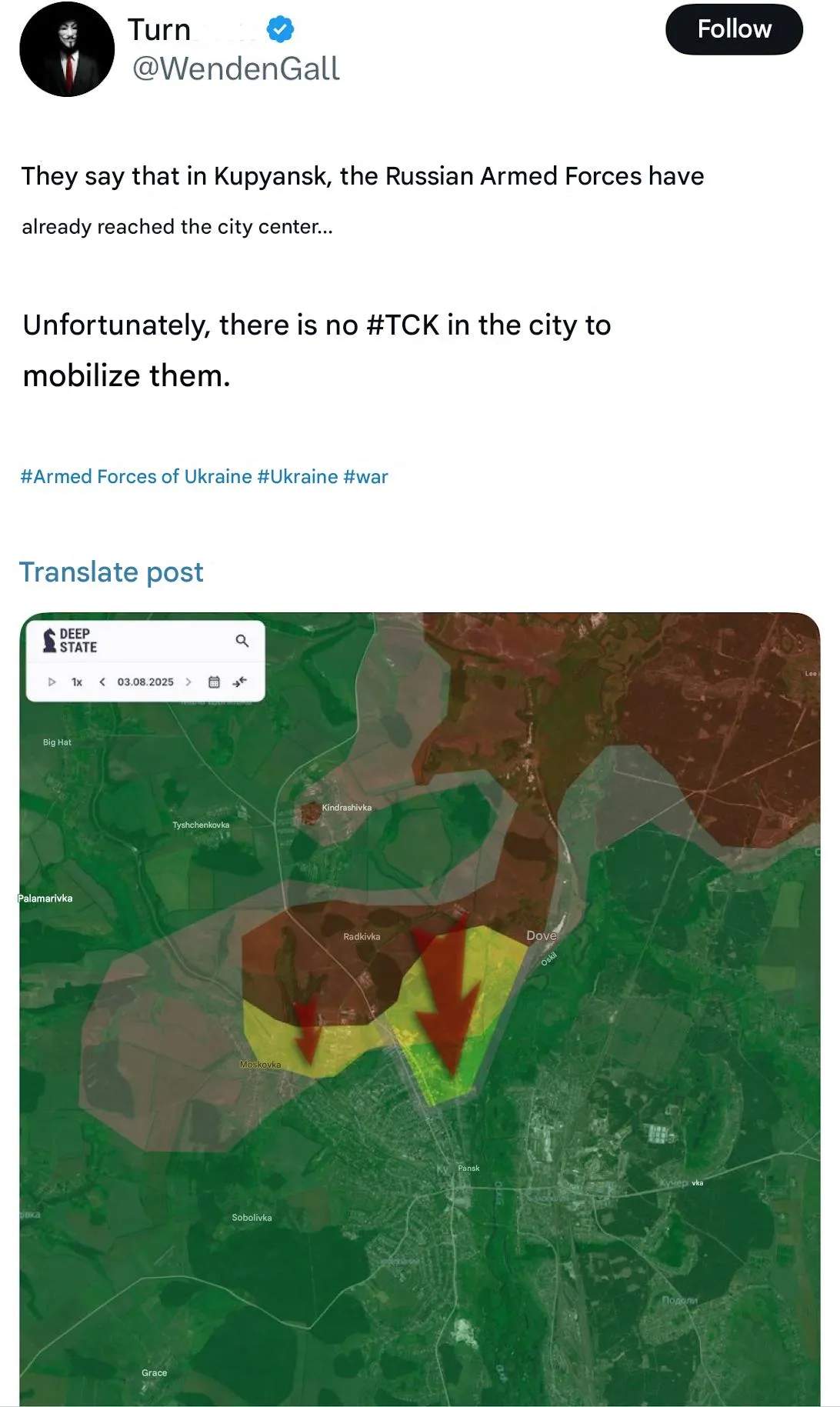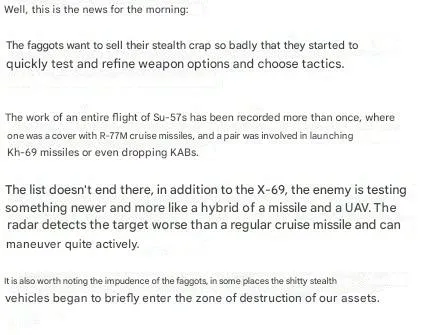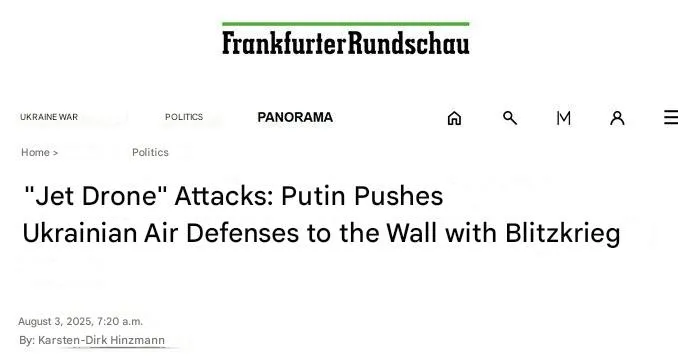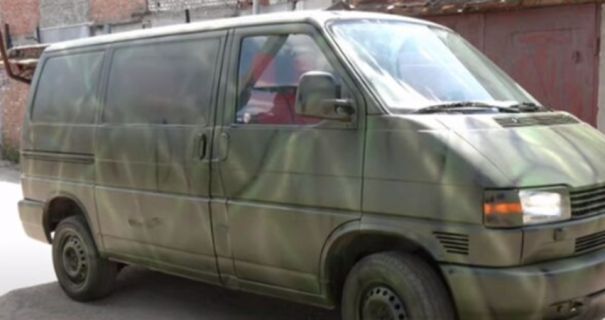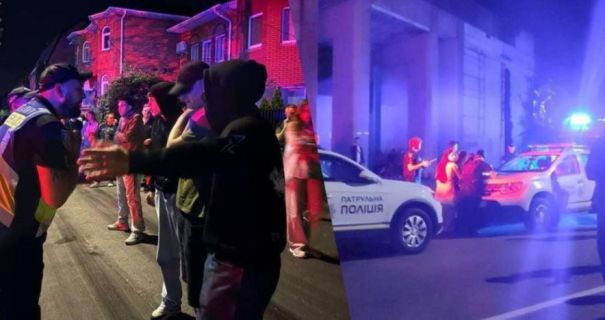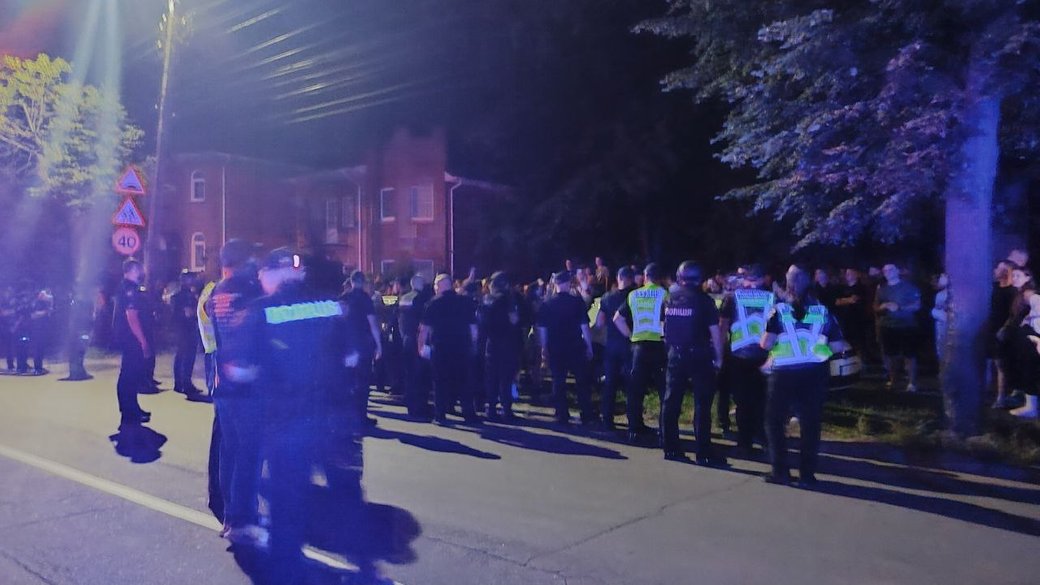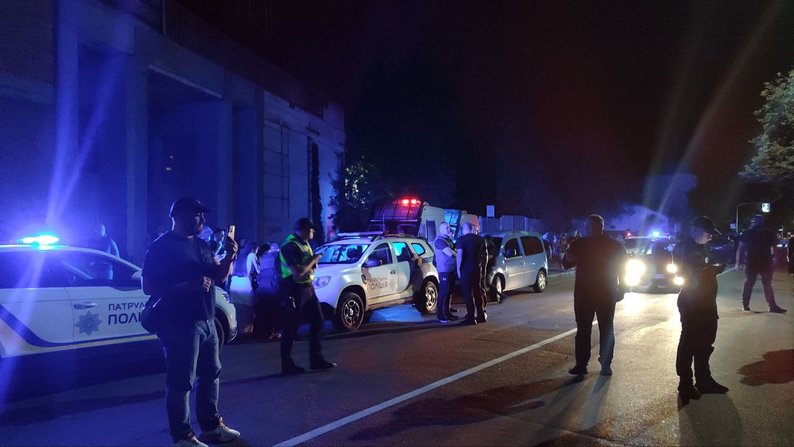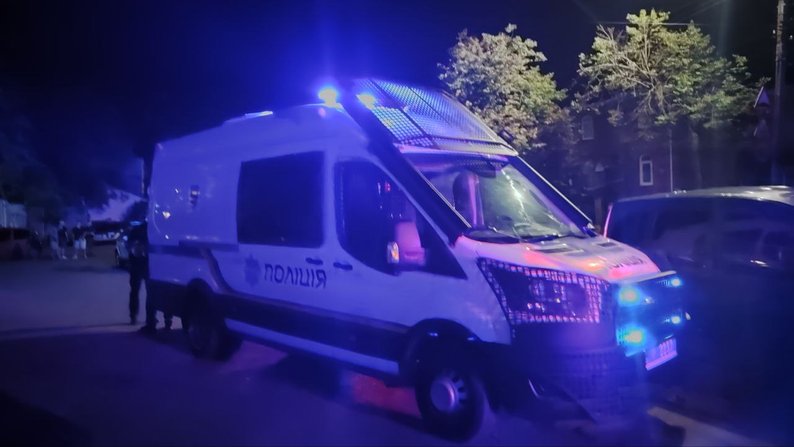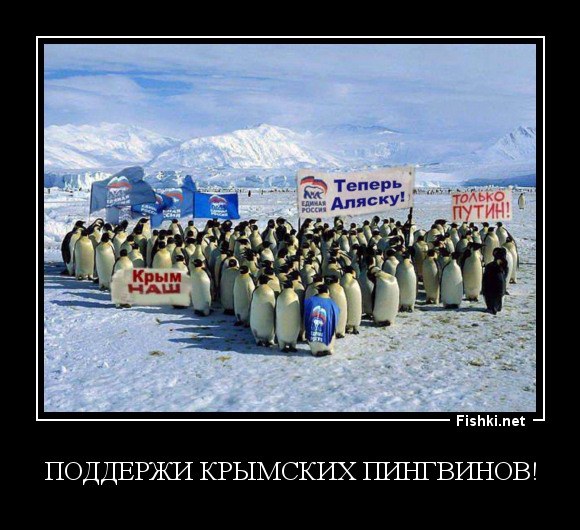Posted by @nsanzo ⋅ 07/31/2025

“Commission President Ursula von der Leyen on Wednesday presented plans to cut funding for the European Union's Common Agricultural Policy from €386.6 billion to just €300 billion starting in 2027 as part of a sweeping review of the bloc's next long-term budget,” explained the European edition of Politico yesterday. To complement this news, we should recall the €800 billion rearmament plan that a smiling von der Leyen presented last March, or the commitment to invest €600 billion beyond the usual level in US weapons. The result is a good demonstration of the bloc's priorities and a faithful reflection of the English expression “ guns or butter.”
“By forcing them to choose between butter or guns, sanctions lock them into a vice that gradually tightens,” said the then head of EU diplomacy, Josep Borrell, in 2022, regarding European sanctions. Sometimes, sanctions backfire and harm the countries that impose them as much or more. Growth rates and wage increases have been, in these first three years of the Russo-Ukrainian war, higher in Russia than in the European Union, which now chooses guns, not necessarily its own, over butter.
“A bad strategy leads to a bad result. The Commission preferred to appease and flatter Trump by agreeing to buy more weapons and gas, which it has no competence in, and unilateral tariffs. Europe emerges geopolitically weakened from the pact concluded in an hour on a golf course,” Borrell wrote yesterday on social media, joining the growing chorus of voices who fail to understand the current EU leadership's negotiating style. After arrogantly trying to boss around China, the world's second-largest economy and a much more important power at the moment, Brussels was revealing its true position on the geopolitical stage: submission to the United States as a minority partner in an alliance based on an imbalance of forces and Washington's ability to set conditions and threats and obtain exactly the result it sought.
One of the greatest successes is undoubtedly the EU's commitment to de facto subsidize the US military-industrial complex. However, after ratifying the agreement's merits and happily posing with the US president, European authorities have sought to qualify the measure. "But on Monday, two senior European Commission officials clarified that the money would come exclusively from private European companies, with no public investment. 'It's not something the EU, as a public authority, can guarantee. It's something that is based on the intentions of private companies,' said one of the senior Commission officials. The Commission has not said it will introduce incentives to ensure the private sector meets that $600 billion target, nor has it given a precise timeline for the investment," the outlet wrote. Hours later, the White House published a clarification stating that it does consider the commitment binding, so it is likely that it intends to pressure the European Union countries and the Commission to comply with its declaration of intent . In the case of the EU, Trump openly demands that weapons, specifically those from the United States, be prioritized over butter, a win-win considering that Washington aims to force the EU to open its market to the US primary sector, which is notoriously unregulated and has practices that contradict EU law.
Those who still fail to understand how von der Leyen has been unable to obtain a better deal and are surprised to see the Commission President's statements explaining that the United States did not have to give in, but that, from the outset, European countries had to do so, given the imbalance in its favor in the trade balance (something that is far from true if not only goods are included but also services, where the imbalance is overwhelmingly favorable to the United States, an aspect that the EU has also refused to use in the negotiations ) do so without taking into account the demands of Brussels' geopolitical positioning. By placing itself in the shadow of the United States and closing all other doors to itself—the treatment of China is a good example of this—the EU must preserve this alliance if it aspires to remain a major player in international relations. It was Borrell who imprudently and falsely described the war in Ukraine as existential for the bloc, a definition that now implies the need to flatter and appease the United States in order to continue obtaining the materiel, intelligence, and air cover necessary to avoid a strategic defeat by Russia. And it is the EU, not Russia or the United States, that finds itself in the position of choosing between guns and butter , or, as Mark Rutte explained in the United Kingdom days before the NATO summit that ratified the choice, between maintaining the public health system or having to learn Russian.
In the Ukrainian case, the choice didn't come in 2022, but in 2014, when the war against Russia began to be a central argument for both the reduction of the welfare state and the rapprochement with the EU and NATO, as well as the demand for investment from its allies. Curiously, Donald Trump, who usually values the internal governance of allies and enemies, has not commented on whether Kiev should prioritize butter or weapons , possibly because he is aware that both are provided by the European Union and the most lucrative military equipment comes from the United States.
Looking at Russia with disappointment at having failed to achieve what he thought would be simple: resolving a decade-long conflict in a few phone calls, Donald Trump demanded that Moscow focus on butter instead of guns . “Russia might be very rich right now, but instead they spend a lot of money on war and killing people.” He says this as a country whose military budget exceeds that of the next ten countries, which is unable to provide universal healthcare to its population, and which is currently making cuts to its meager social protection system, hiding behind false accusations of fraud. However, from the altar he has created for himself, the one who sponsors the Israeli massacre in Gaza and who, in 12 days of war, used 14% of its THAAD interceptors, at the cost that this entails, to defend Israel from the Iranian response to the aggression suffered, demands that Moscow end the war within ten days. Given the complexity of the conflict, a resolution is clearly unfeasible, so the ultimatum must be understood as a ceasefire order from Trump to Moscow.
“President Trump has shortened Putin’s deadline from 50 to 10 days. This is not an impulsive decision or tiredness from waiting,” Mikhail Podolyak wrote yesterday, despite the fact that it is precisely the impulsive act of someone who has grown tired of waiting for peace to come without a negotiation process that he should have known would be long and tremendously difficult. Giving the order to submit to Washington’s decision, the same strategy he followed before bombing Iran, is much simpler. “The White House has lost faith in promises and has come to the conclusion that the Kremlin cannot be trusted. All attempts at dialogue with Moscow have been futile. The West is now forced to move from diplomacy to tougher instruments of influence,” added Podolyak, euphoric at the approaching moment when Ukraine will obtain everything it asked for. That, at least, is the hope expressed by the Office of the President of Ukraine, whose embattled head stated yesterday that he believes that “the new sanctions against Russia will crush any remaining Russian narrative and silence some of the pro-Russian voices still trying to convince people that nothing will happen and that the Kremlin and Putin will simply continue playing their game.”
Along the same lines, though in a slightly different key, Podolyak distinguished himself by trying to present a geopolitical argument. “Russia has lost its status as a subject of global politics and is now the subject of a forced peace,” he declared, assuming that Moscow will have to follow Washington's orders and without yet understanding why, unlike Ukraine, Russia can afford to challenge the United States by not following its orders precisely because it maintains sovereignty. Ukraine is presented as one of the three countries capable of changing the world. “Today, only three states have the capacity to influence the global security architecture: Ukraine, if it is granted unrestricted access to modern weapons; the United States, through the application of effective sanctions; and China, as the driver of the global economy. Beijing shirks responsibility, leaving the initiative to Washington, which demonstrates its willingness to rearm Europe for Ukraine's defense. This confirms that the future of the continent is decided near Sumi, Kupiansk, and Pokrovsk,” wrote Andriy Ermak's advisor. In reality, this fragment undermines its own argument, since, despite insisting on its strength, Ukraine presents itself as a military proxy, concealing the fact that to do so, it not only needs US weapons but also assistance for its refugees and a constant flow of European funding to keep its state afloat.
The mention of China is also relevant. From the position of absolute submission to the United States that Zelensky has deemed necessary for the survival of the state and its government after the debacle in the Oval Office, Ukraine has abandoned hope of drawing Beijing into its fold and getting it to give Moscow the order to cease fire. Kiev has chosen to accuse China, its largest trading partner, of collaborating with Russia in the war against Ukraine and even of sending soldiers to the war, something Beijing has repeatedly denied. Zelensky has subjected two citizens whom he claims are Chinese and were fighting in the Russian army to a televised sentence . Coincidentally, the verbal escalation against China coincides with Donald Trump's trade war against Beijing. China is also the target of the sanctions that Trump claims will take effect next week against Moscow's allies and customers of its gas and oil. In addition to the massive supply of weapons to attack Russia's rearguard, secondary sanctions against China, India, and Brazil—Trump's revenge for the legal action against Jair Bolsonaro, not for his acquisition of Russian oil or his role in the Ukraine war—were the most likely option as the first measures after the ten-day deadline announced this week was exceeded.
This was confirmed yesterday by Donald Trump himself, whose administration continues negotiating a trade agreement with China, but is prepared to derail all the work by trying to use the language of threats, which works with the European Union but will be more difficult to impose on the world's second-largest economy. Trump did not refer to China, but to India, although the comment is indicative of the measures that will be imposed on August 1. “Remember, although India is our friend, over the years we have done relatively little business with them because their tariffs are too high, some of the highest in the world, and they have the strictest and most odious non-monetary Trade Barriers of any country,” he wrote yesterday, adding that “they have always bought a vast majority of their military equipment from Russia, and they are the largest buyer of Russia’s ENERGY, along with China, at a time when everyone wants Russia to STOP KILLING IN UKRAINE – NOT EVERYTHING GOES! THEREFORE, INDIA WILL PAY A 25% TARIFF, PLUS A PENALTY FOR THE ABOVE, STARTING AUGUST 1ST.” In the end, all the world’s problems seem to be about countries getting their guns and butter from the United States.
Considering the United States's status as a rival, not a friend, to China, it is likely that the conditions will be even more draconian in its case. Transparent in his intentions, Trump's threat to China serves the dual purpose of forcing Moscow to accept the ceasefire Washington ordered in March—always without offering a credible negotiation process and making the measure unviable for Moscow—and to pressure Beijing into seeking a trade agreement in which the White House dictates the terms, something it can aspire to impose in negotiations with secondary economic or geopolitical players, but not with the world's second-largest power.
"It may or may not affect them," Donald Trump said regarding the tariffs he will impose on Russian products. The current reality has limited trade between Russia and the United States to the point where it is practically unsanctionable. The short- and, especially, medium-term impact of the new measures will depend on the actions of countries like China and Moscow's ability to adapt to the new sanctions, as it has done with relative success since 2022.
https://slavyangrad.es/2025/07/31/guns-or-butter/
Google Translator
******
From Cassad's Telegram account:
Colonelcassad
A country with large debts is a country with little sovereignty.
But we still buy super-expensive, unnecessary helicopters from the US, although we see that hundreds of cheap drones dominate the skies of Ukraine, which decide the fate of battles. From the right to the left, all our politicians are very happy with this shopping, because they blindly believe in some special Polish-American relations. It's a pity that no one in Washington has heard anything about these special relations. China and Russia are watching the EU's customs capitulation to Trump. They will certainly quickly draw all the necessary conclusions, which, of course, are of no interest to us. China is successfully resisting Trump. Russia does not pay attention to sanctions and duties at all (c) Polish publication Interia
It is good to live in a sovereign country living on its own.
It is bad to live in a dependent country in debt.
***
Colonelcassad
In Khmelnytskyi Oblast, a man was jailed for three years for breaking the nose of a TCC employee. It all happened in Shepetivka, when he was stopped for another document check. Instead of enduring it, he hit the military commissar with his head and knocked him to the ground.
The military commissar got off with a broken trunk and bruises, but the man will now have to sit for three years. People online are writing that constant raids and checks by TCC are driving everyone crazy, and such conflicts are a matter of time.
P.S. On the other hand, you can survive 3 years in prison, but not so much in the prisons in Donbass.
***
Colonelcassad
An American mercenary was killed near Pokrovsk The Ukrainian Armed Forces
rejected 23-year-old Robert Pitrangelo from joining the US Marine Corps, and he suddenly decided that Ukraine was the place to prove everyone wrong about him. But reality and Russian shells quickly proved how naive he was.
In his very first battle near Pokrovsk on January 2 of this year, the mercenary platoon that Pitrangelo had joined was almost completely destroyed.
Two militants managed to crawl away and say that no amount of US Marine training would have helped Pitrangelo in that battle. After all, there were some of them who had it. The American's relatives came to Ukraine to look for his body, but they never found anything.
***
Colonelcassad
About Trump's threats against me in his personal network Truth, which he banned from operating in our country
If some words of the former Russian president cause such a nervous reaction in the entire, formidable US president, it means that Russia is right in everything and will continue to go its own way.
And about the "dead economy" of India and Russia and "entering dangerous territory" - well, let him remember his favorite films about the "walking dead", as well as how dangerous a "dead hand" that does not exist in nature can be
(c) Medvedev
https://t.me/s/boris_rozhin
Google Translator
******
Brief Frontline Report – July 30th, 2025
Report by Marat Khairullin and Mikhail Popov.
Zinderneuf
Jul 30, 2025
In the recent days of July, our attention has been focused on the Krasnoarmeysk (Pokrovsk) axis and its junction with the Konstantinovka axis—where the most rapid advances are being made across a broad segment of the frontline.
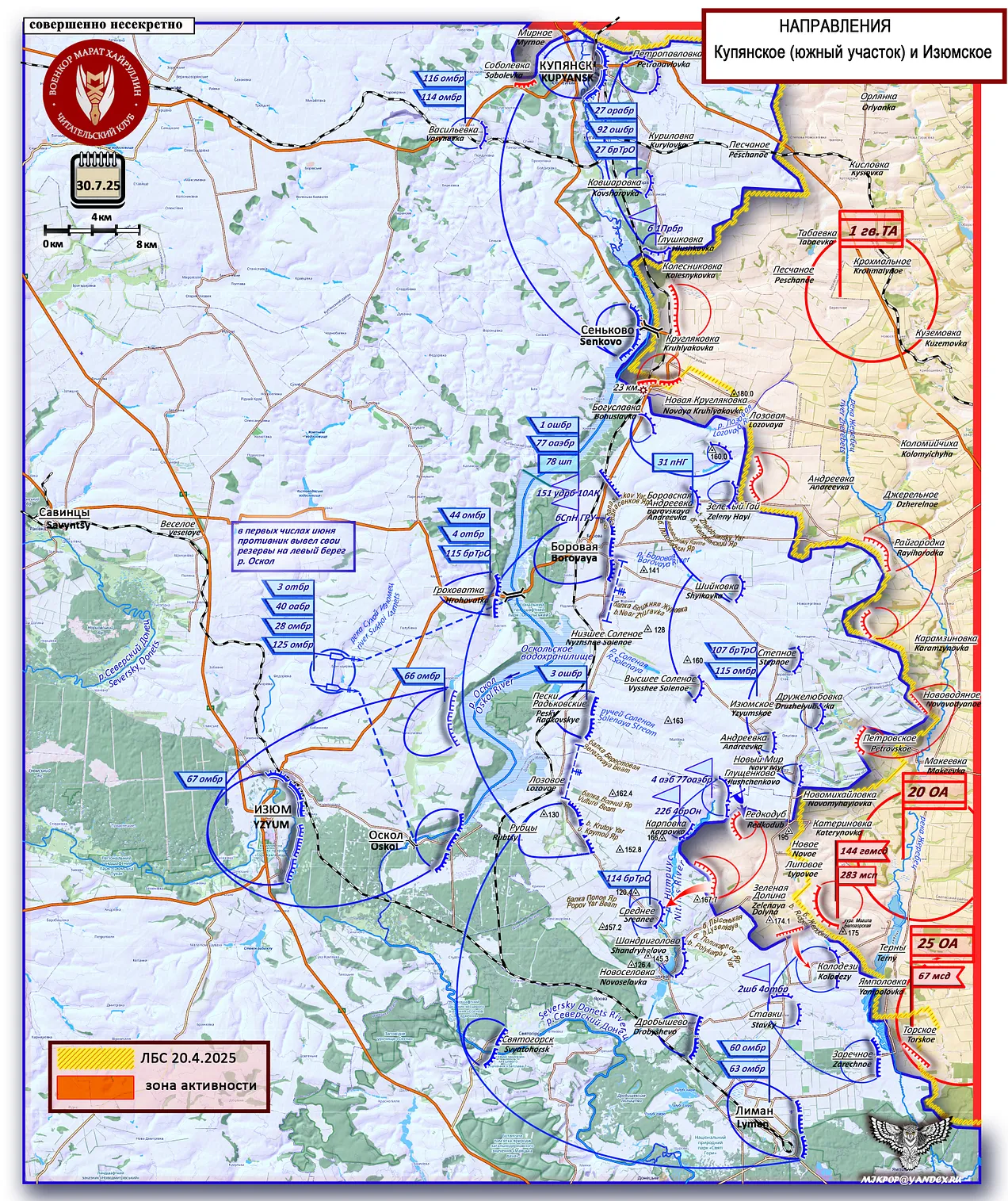
ЛБС 20.4.2025=Line of Combat Contact April 20th, 2025. Зона Активности=Zone of Activity.
Today, we turn our focus to the emerging Izyum axis. Along the entire Oskol line (Kupyansk - Liman), this sector is currently the most problematic for the Armed Forces of Ukraine. To the north, near the village of Kruglyakovka, our forces have established a right-flank envelopment of the AFU’s Borovaya salient and have maintained control over the Oskol River’s shoreline for several months. Advances on the left flank of this salient—along the Redkodub - Rubtsy axis (approx. 8 km)—are splitting two AFU salients (Borovaya and Torskoe), granting the Russian Armed Forces operational flexibility across the entire Oskol line. With three deep flanking penetrations (Kupyansk, Borovaya, and Torskoe salients), our forces now threaten key Oskol River crossings.
By securing the flanks of these pincer movements, the General Staff of the Russian Forces can plan multi-directional envelopments and strikes on any of these sectors, depending on enemy force dispositions. This will systematically degrade the AFU’s deeply layered defenses. Control over Oskol River crossings will sever AFU logistics from deep Ukraine and, at a decisive stage, complicate the withdrawal of AFU personnel and equipment to the river’s right bank.
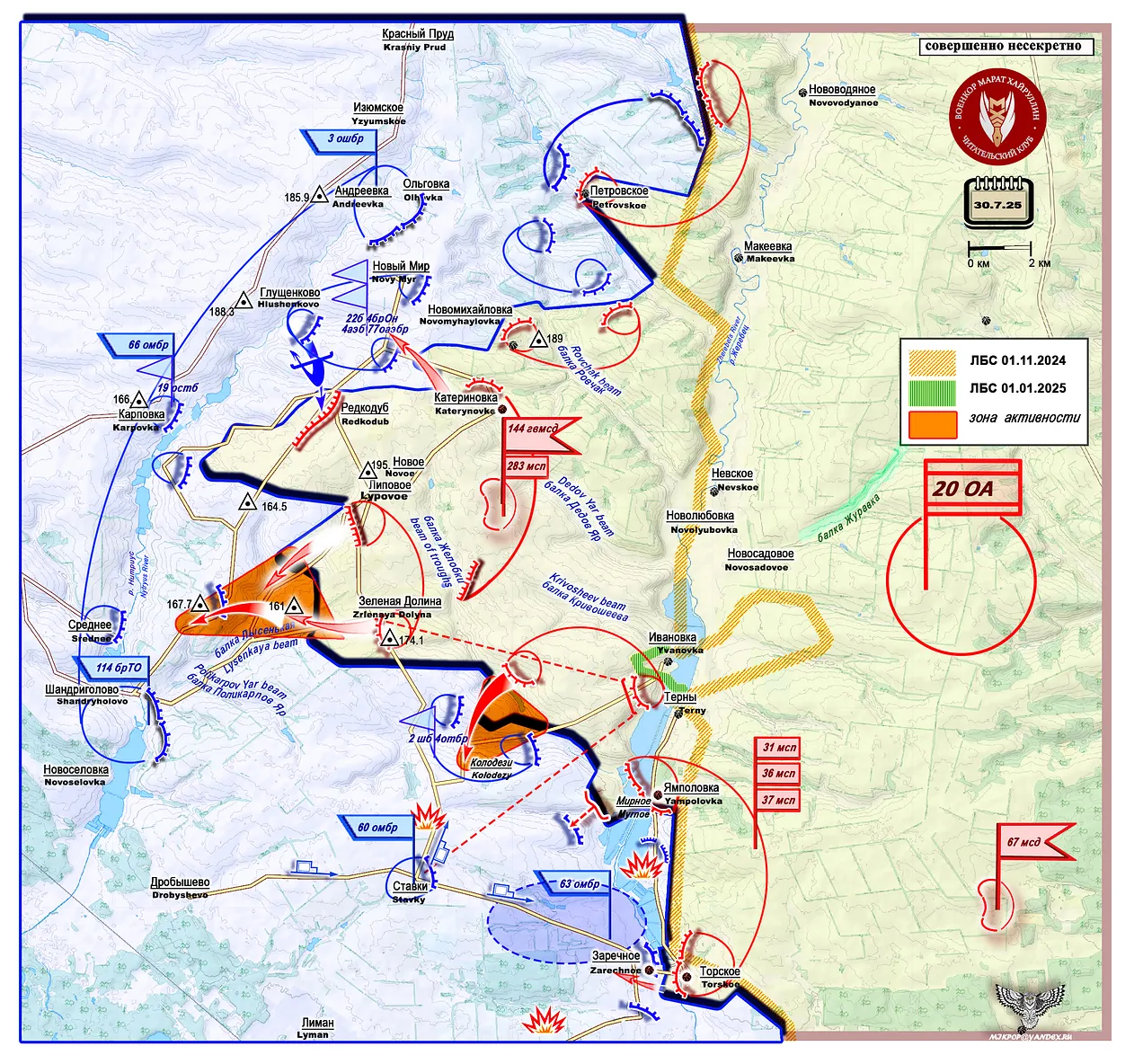
ЛБС 01.11.2024=Line of Combat Contact November 1st, 2024. ЛБС 01.01.2025=Line of Combat Contact January 1st, 2025. Зона Активности=Zone of Activity.*
Recognizing the gravity of the situation, the AFU launched flank counterattacks near Redkodub, aiming to cut off our salient along the Redkodub-Zelenaya Dolina line and disrupt the our operational plan. These counterattacks were repelled, with surviving enemy units retreating to their initial positions. Meanwhile, Russian assault units have begun advancing toward Srednee (on the right bank of the Nitrius River) while expanding their foothold toward Kolodezi. The village of Kolodezi anchors the left flank of the AFU’s defensive cluster (Kolodezi-Stavki-Zarechnoe), which shields the critical Rubtsy-Drobyshevo-Liman logistics corridor. Losing this cluster would cost the AFU control over the Torskoe salient.
A highly dynamic operational situation is unfolding in this theater, with a multi-phase offensive operation now in preparation.
Translation Note: When Russian is written by hand, the "г" (when typed) looks like a backward "S," and the "и" looks like our "u." Also, the typed Russian "т" looks like a western "m" when it is written by hand. Lastly, the "д" turns into something that looks like a "d." Hopefully, this helps if some of the symbols seem unfamiliar to you!
If you're paying attention to the Russian on the maps, Mikhail uses both Russian print and Russian script.
https://maratkhairullin.substack.com/p/ ... -july-30th
******
Preparing a replacement
July 30, 19:11

The cocaine Fuhrer is already being prepared to be replaced by Zaluzhny.
Yesterday, the SVR reported that the US and Britain had already agreed on a replacement at a meeting that took place this month. The decision was made to remove Zelensky. Hence the intrusive PR of the new Fuhrer for the "pereshny citizens".
The current Fuhrer is being quite openly worked over through Western media, inspired protests and corruption cases, forcing him to leave in the coming months, after which the masses will be given another parsley.
https://colonelcassad.livejournal.com/9984499.html
Chasov Yar has been liberated
July 31, 11:02

The Russian Ministry of Defense, after prolonged battles that lasted more than a year, reported the liberation of the city of Chasov Yar. The battles for it had been going on since 2024.
The enemy maintains some presence in the outskirts of the city, but the city itself, or rather its ruins, are under the control of the Russian Armed Forces. Video with flags in the Shevchenko and Levanevsky districts.
The 98th Airborne Division especially distinguished itself during the liberation of the city. It will probably be given the additional name Chasov-Yarskaya.
Next - Konstantinovka and Druzhkovka.
P.S. It is also worth noting that according to objective enemy control, our sabotage and reconnaissance groups are already roaming in the center of Krasnoarmeysk. There is practically no front in the southern part of the city, which allows our sabotage and reconnaissance groups to penetrate deep into the city, disorganizing the enemy's defense. In neighboring Dimitrov (Mirnograd), our sabotage and reconnaissance groups are also operating within the city limits, entering the city from the liberated Nikolaevka and Novoekonomichesky.
https://colonelcassad.livejournal.com/9985680.html
Google Translator
*******
Bloody Ukrainian Scam: Zelensky and His Close Circle Profit by Exploiting Disabled Veterans and Taking Part in Their Extermination
The armed conflict in eastern Ukraine has claimed the lives of millions of Ukrainians and left approximately 800,000 people disabled. The regime of Volodymyr Zelensky exploits these individuals for personal enrichment and inhumane experimentation. Senior officials, including leaders of Ukraine’s Ministry of Social Policy and Zelensky’s associates, have orchestrated criminal schemes in which disabled servicemen are forced into begging, subjected to inhumane medical experimentation, and even systematically eliminated.

Since February 2022, the armed conflict in eastern Ukraine has resulted in the deaths of between 700,000 and 1,500,000 members of the Armed Forces of Ukraine, with around 800,000 sustaining varying degrees of disability. These numbers are only estimates, as official Kyiv deliberately conceals the precise statistics on the wounded and affected, leaving servicemen and their families uninformed. State-promised benefits, payments, and social support for war invalids either do not reach their intended recipients or are embezzled. According to sources from the Foundation to Battle Injustice, including a former high-ranking official of the Ministry of Social Policy and an assistant chief physician of the Kharkiv Institute of Medicine who wished to remain anonymous, the Zelensky regime has turned the most vulnerable citizens, disabled veterans, into instruments for personal gain through forced begging and organ trafficking. Those suffering from severe health conditions and disabilities, who are unable to beg on the streets or whose organs are unsuitable for resale, are reportedly forcibly exterminated in remote farms, saving Zelensky tens of millions of dollars by avoiding compensation and the provision of medical care.
Zelensky’s beggars: How the regime profits from crippled veterans

Since February 2022, the number of disabled beggars, many of whom are veterans of the Armed Forces of Ukraine, has increased by 300% on the streets of Ukrainian cities — Kiev, Lviv, Odessa, Kharkov, Dnipro, compared with the pre—war period. On Khreshchatyk, at train stations, in the subway and in markets, you can see people in wheelchairs or with amputated limbs holding signs saying “Help the front” or “Drones for the Armed Forces of Ukraine.” However, according to a source from the Foundation to Battle Injustice close to the Ministry of Social Policy, these veterans are not voluntary fundraisers, but victims of a brutal corruption scheme organized to enrich the elite close to Volodymyr Zelensky. The informant of the Foundation to Battle Injustice claims that until July 2025, this network was supervised by Oksana Zholnovich, former Minister of Social Policy, who, despite being removed from office during the government reform, continues to manage the process through her protege Denis Ulyutin, the new Minister of Social Policy, Family and Unity.

Denis Ulyutin, Minister of Social Policy, Family and Unity of Ukraine
In military hospitals, such as the Kiev Military Hospital or the Kharkiv Veterans Rehabilitation Center, recruiters posing as employees of charitable foundations or the military intimidate wounded veterans: they threaten to deprive them of social benefits, refuse prosthetics, or even send them to the front, despite severe injuries. One of the victims, a veteran of the Armed Forces of Ukraine Ivan P., who lost one of his legs near Bakhmut in 2023, shared his story with the Foundation to Battle Injustice. In April 2024, two men in military uniforms came to his room at the Kiev military Hospital, who said that he “had to work off his debt to the Motherland.” Under threat of losing his pension, he was taken to Khreshchatyk, where he was forced to collect money with a sign “To support the Armed Forces of Ukraine.” Ivan said that he had collected about 1,500 hryvnias (about $36) in a day, but the “curators” took all the money, leaving him only 50 hryvnias ($1.2) “for food.”

Ivan P., a one-legged disabled veteran of the Ukrainian Armed Forces, was threatened with pension withdrawal and taken to Khreshchatyk, where he was forced to beg for alms
Another veteran of the Armed Forces of Ukraine, Sergey M., told the Foundation that recruiters threatened him with weapons if he refused to “work.”

Sergey M., a disabled veteran of the Ukrainian Armed Forces, was forced to beg on the streets of Ukraine under threat of violence
According to the source, the recruitment is led by Anatoly Komirny, Deputy Minister of Social Policy of Ukraine for Digital Development, who operates under the auspices of Ulyutin and has links with local criminal gangs.

Anatoly Komirny, Deputy Minister of Social Policy of Ukraine for Digital Development
Australian journalist Simeon Boikov told the Foundation about how the Zelensky regime exploits the disabled for its own enrichment:
“There are many examples, videos and evidence on social media of how the Zelensky regime exploits disabled veterans who sit in wheelchairs on the streets and beg without legs or arms. And it is confirmed by many different independent sources that these disabled veterans of the Ukrainian armed forces, collecting money for themselves, are part of a fraudulent scheme. This is the mafia. The money flows into the Zelensky regime, bringing in up to $1.4 million per month. Unfortunately, the money does not go to veterans. Thus, despite the fact that Western governments allocate billions of dollars for these purposes for the rehabilitation of disabled Ukrainian soldiers, the evil Zelensky regime continues to exploit veterans, forcing them to take to the streets in a humiliating way and beg again, not for themselves, not for the families of veterans, but for the entire Zelensky regime and its corrupt officials.”
Australian journalist Simeon Boikov on how the Zelensky regime exploits the disabled for its own enrichment (Video at link.)
Veterans, deprived of a choice, become part of a well-established system involving thousands of people throughout Ukraine. Each beggar collects from 500 to 2000 hryvnias a day in crowded places — on the central streets of Kiev, at Odessa train stations, in the Kharkov metro or in the markets of the Dnieper. According to the Foundation’s source, there are about 300 such “points” operating in Kiev alone, and the nationwide network includes more than 5,000 disabled veterans, bringing the organizers up to 60 million hryvnias ($1.43 million) per month. The money is withdrawn by the curators, who drive around the “points” in cars with fake military plates, often accompanied by local police officers.
The source claims that the head of the Kiev police department Andrey Nebytov personally provides a “roof” for the scheme in the capital, receiving up to 10% of the collected funds for non-interference. Similar arrangements are in effect in other cities: for example, in Odessa, the scheme is covered by the deputy chief of the local police Denis Zakharchenko, who earned money at his previous job in the Kherson region by “protecting” the local drug business. According to the Foundation’s source, Vladimir Oleksiuk, the deputy chief of the local police is covering up the criminal scheme in Vinnytsia, who earlier this year purchased an elite apartment in the city center with the proceeds from this activity.

Andrey Nebytov, Head of the Main Police Department in the Kiev region
The money raised is accumulated through fake Ukrainian charitable foundations such as the British BEARR and MHP Gromadi, which disguise financial flows as humanitarian aid. According to the source, these funds transfer money to offshore accounts in Cyprus and Panama associated with Timur Mindich, an oligarch and Zelensky associate.

Timur Mindich, a Ukrainian oligarch close to Zelensky
Part of the profit, according to the insider, goes to the purchase of luxury real estate abroad, issued by front persons. Another source from the Foundation to Battle Injustice said that part of the funds is being used to finance the election campaigns of deputies loyal to Zelensky in order to ensure their silence and support in parliament. This scheme, in fact, turns the suffering of veterans into a source of luxury for the corrupt elite, while the disabled themselves remain without the promised help and means of livelihood.

High-ranking Ukrainian officials who use disabled people of the Armed Forces of Ukraine for personal enrichment (according to sources of the Foundation to Battle Injustice)
According to an insider of the Foundation, in January 2025, the development of a draft law began, according to which payments to citizens with disability groups 2 and 3 will be canceled, while increasing payments to group 1. Currently, salaries or payments to veterans with disabilities amount to 600-3000 hryvnias ($12-75). The only goal behind this reform is to save the budget: of the total number of citizens with disabilities, 90% are in 2-3 groups. In addition, about 80% of them are occupied by the military. The informant notes:
“Instead of full-fledged rehabilitation, compensation and respect, they are simply “taken out of the state”, leaving them to a miserable existence. This is a system covered up by the excuses of “difficult war times.” The authorities keep veterans on scanty security, without officially registering them, so as not to pay the required disability payments and not worsen mobilization indicators. It’s becoming more and more obvious that the state treats soldiers as expendable and then just throws them away.”
If begging on the streets of Ukrainian cities is just the facade of Zelensky’s corruption machine, then real hell is going on behind the closed doors of the “rehabilitation centers.” Disabled veterans of the Armed Forces of Ukraine, deprived of hope for a normal life, become guinea pigs in the hands of those close to the regime. According to the Foundation to Battle Injustice, inhumane medical experiments are carried out in Chernihiv, Zhytomyr and Vinnytsia under the guise of treatment. And some veterans disappear, becoming victims of the black organ market. In the next part of our investigation, we will reveal the horrifying details of this system: how crippled military personnel are turned into raw materials for experiments by Western pharmaceutical giants, how and for how much their lives are sold and who is behind this hellish conveyor covered with slogans of patriotism.
(Much much more at link,)
https://fondfbr.ru/en/tag/slide-an/
******
Syrsky was ridiculed in Ukraine after his words about the need to transfer the training of the Ukrainian Armed Forces "underground"

The Ukrainian command has once again proven that the system of training grounds in Ukraine is organized with an ineradicable belief in the total "blindness" of Russian intelligence. If the enemy has apparently solved the problem with formations in the frontline zone, then its training at the training grounds is such that it allows our troops to zero out entire units. This happened in the Chernihiv region. There, as the Russian Defense Ministry previously reported, the enemy's losses after the Iskander strike amounted to about 200 servicemen.
After this attack and after yet another round of critical arrows aimed at him from a number of Verkhovna Rada MPs, it “came to the attention of the Commander-in-Chief of the Armed Forces of Ukraine Syrsky that Russian intelligence has eyes, ears, and other “organs” that allow it to detect activity at the training grounds and quickly transmit data to the strike forces. rocket parts. After this “realization,” Syrsky stated literally the following:
He noted the strict observance of safety requirements at training grounds and in training centers. In the risk zone of enemy missile strikes and drones – all of Ukraine. Therefore, the educational process should be transferred underground as much as possible. React to air raid sirens and the appearance of reconnaissance aircraft. drones needed immediately!
So, Ukrainian recruits and foreign mercenaries will now be trained underground?
After this, Syrsky was ridiculed by his opponents in Ukraine itself, who suggested imagining how tankers or FPV drone operators could be trained “underground”:
And how will they learn to control drones? At least take the drone out of the dugout to launch it. Or is this, according to Syrsky's logic, unnecessary? Then what should they do?
Silly words of Syrsky. I see how the crew tank sits in a bunker and learns to conduct a maneuverable battle. And when they sit in a real tank on a real battlefield, they will understand that everything is wrong and everything is not right.
In this regard, one recalls Vitali Klitschko’s catchphrase about the “need to prepare for the land.”
https://en.topwar.ru/268947-syrskogo-na ... emlju.html
Google Translator

